These literary blossoms are a fun craft to freshen your table or decorate for a special event. Display them in a natural wood bowl or scatter them along a surface for a sophisticated, minimalist effect. String them together along a streamer and hang them for a festive look. Or attach them to a small wooden dowel and put them in a vase—they can stand alone or add a cute touch to a bouquet of cut flowers. You could even get really creative and use them to top drink stirrers or a lit-themed cake.
However you use them, these DIY book page flowers are a lovely way to upcycle damaged or obsolete old books. There are many different patterns for book-page blooms out there (including our paper hydrangeas tutorial), and this one makes a particularly elegant flower. Once you get the hang of making the petals, this craft goes super fast. Kids can easily help out with this project. I recommend making it a fun assembly line to make the petals and then just helping them with the hot glue gun for the finishing touch!
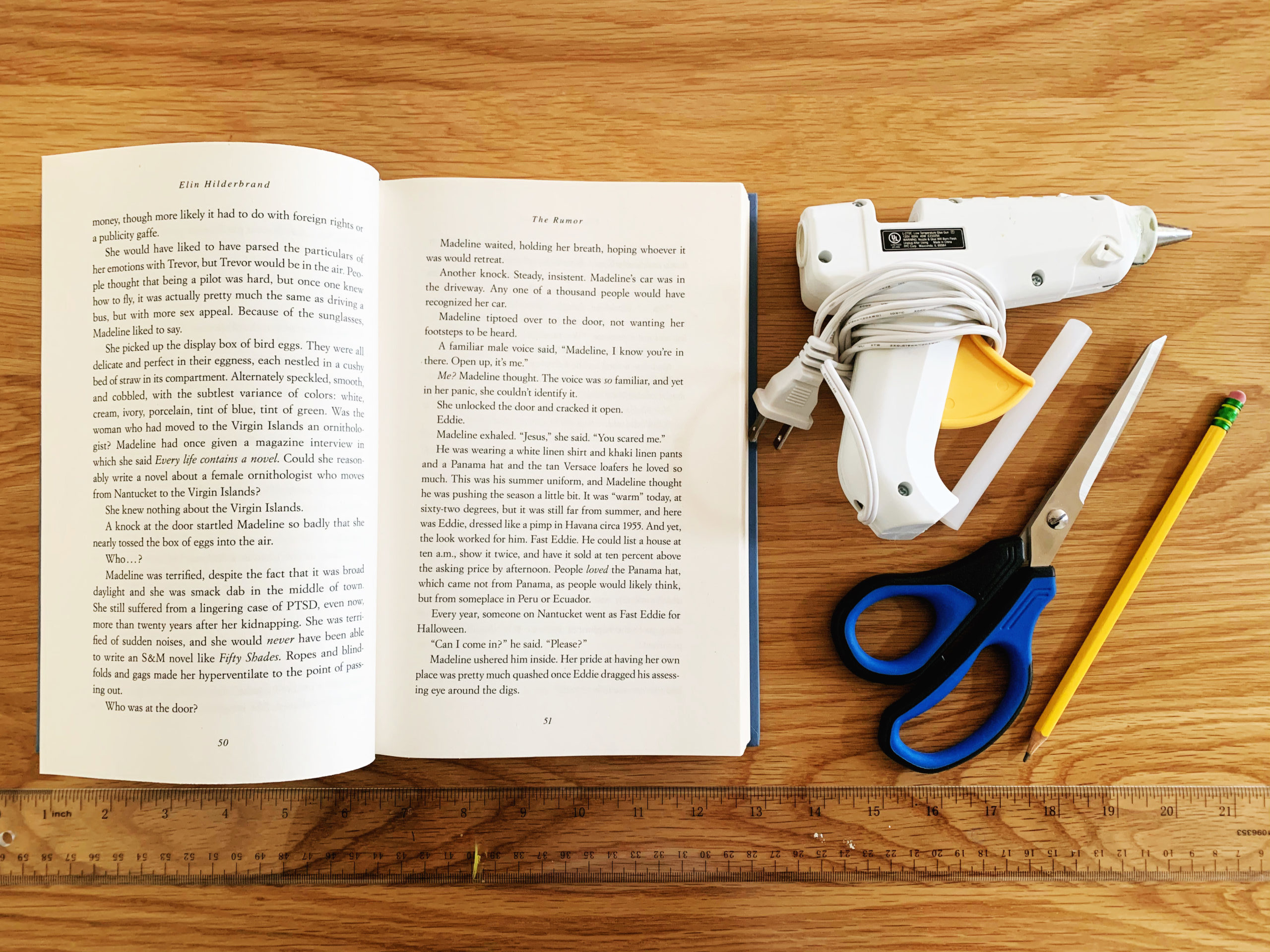
Materials:
- Old book pages
- Ruler
- Scissors
- Pencil
- Hot glue gun
Cost: If you have a glue gun, this project shouldn’t cost you a thing! This is the perfect chance to upcycling old book pages into beautiful decorations.
Step One: To start, you will need a perfect square from your old book pages. Each square makes one petal and you will need 5 petals per flower. I worked with 5” squares — but just remember, the larger or smaller your square, the larger or smaller your flower will be. If you plan on making a few, it could be fun to create a variety of different-sized flowers!
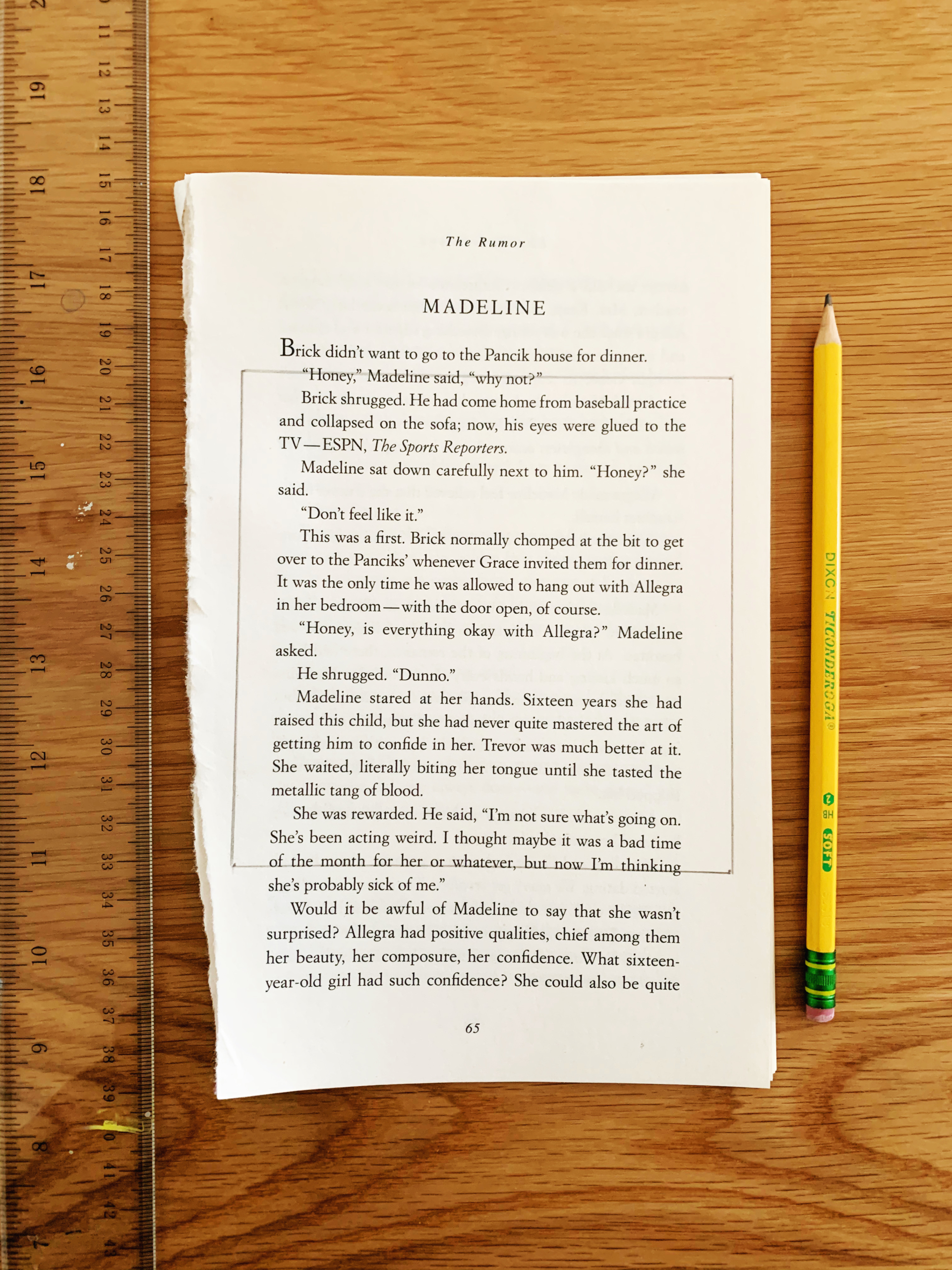

Step Two: The next set of steps are how to fold your petals. I broke this down step by step, so just follow along for each fold and you will end up with the perfect petal, and eventually, the perfect flower!
First, fold up one corner point to make a triangle.
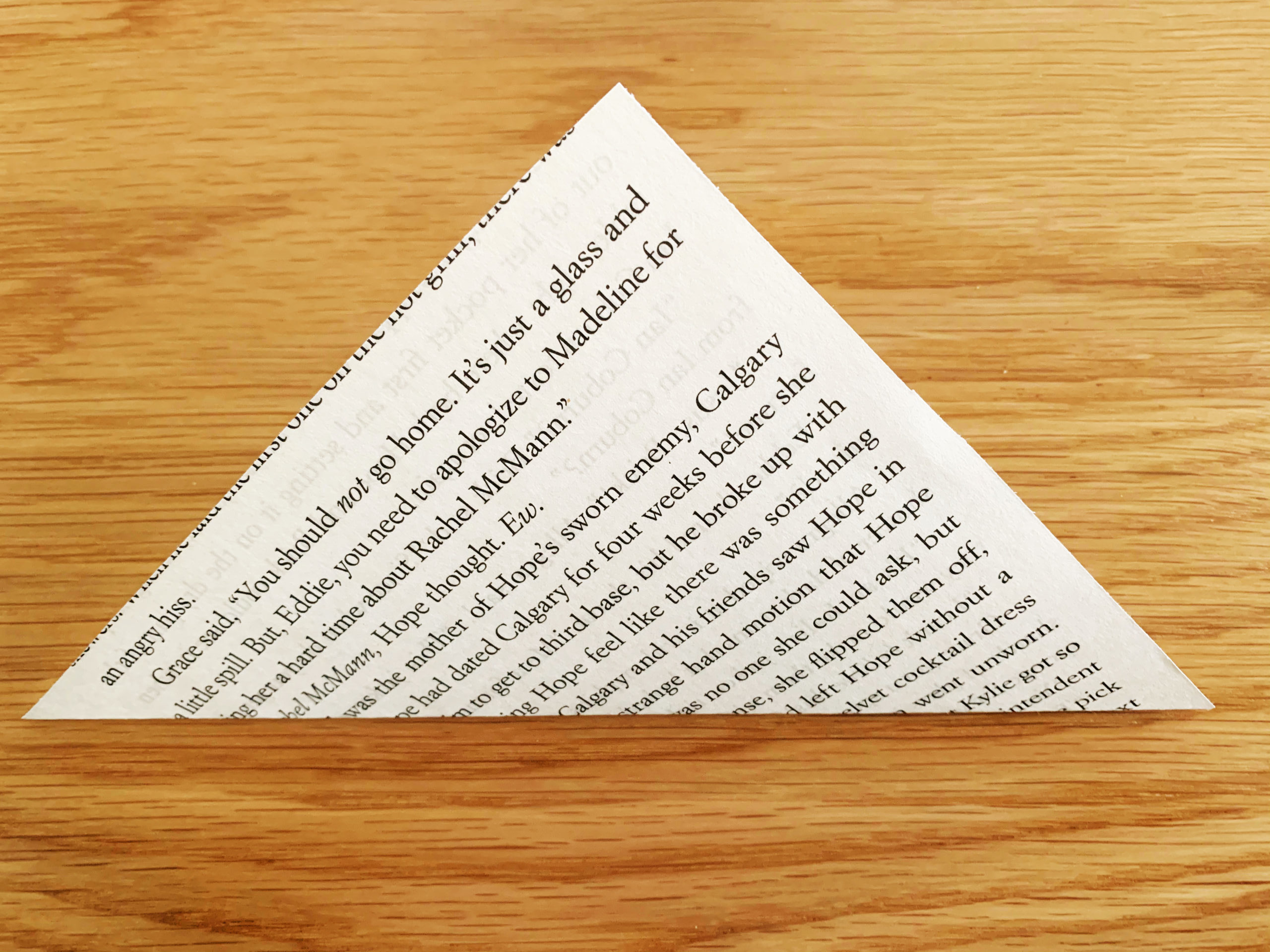
Step Three: Fold over the right point up to the top.
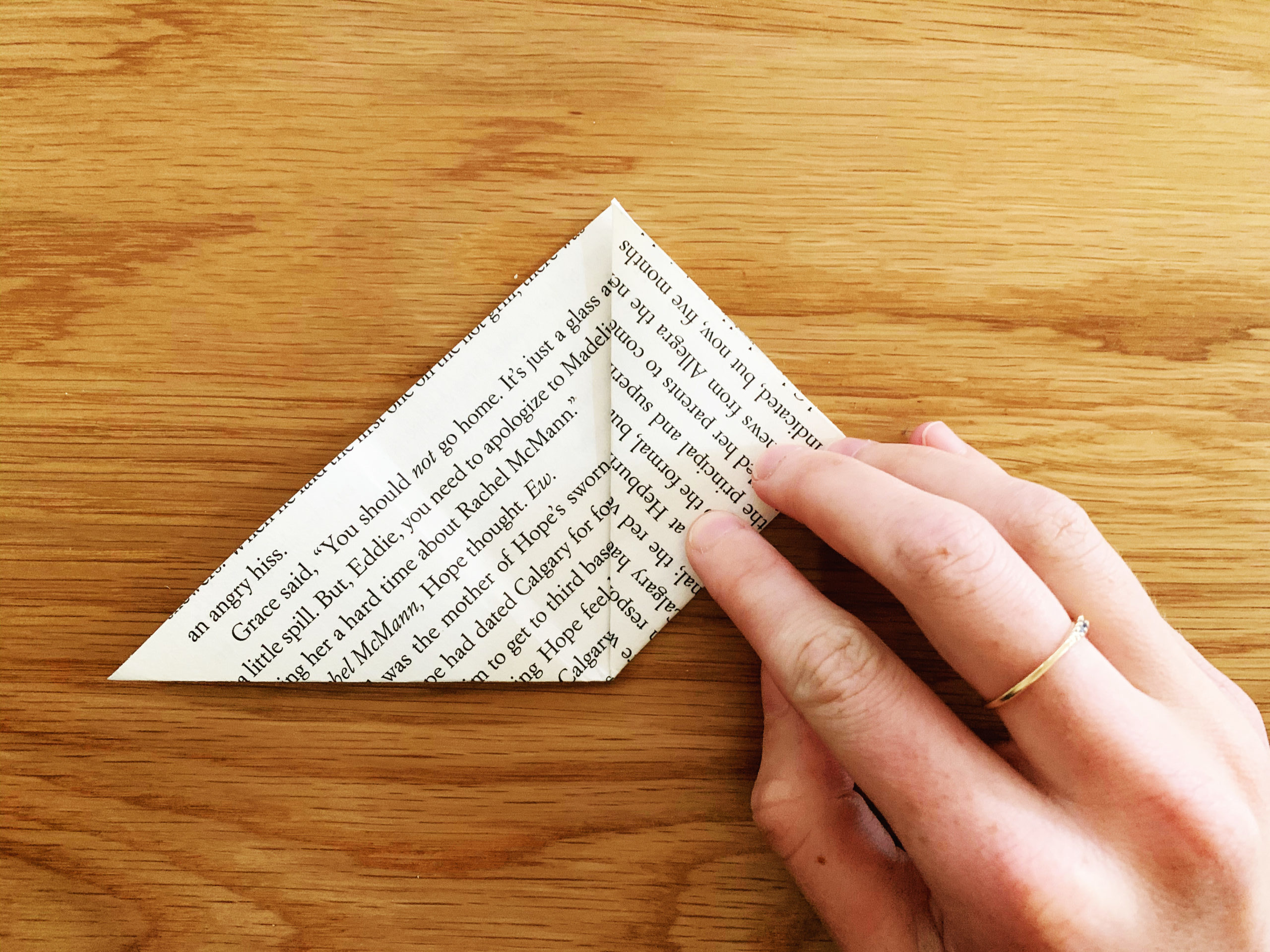
Step Four: Fold over the left point to the top.
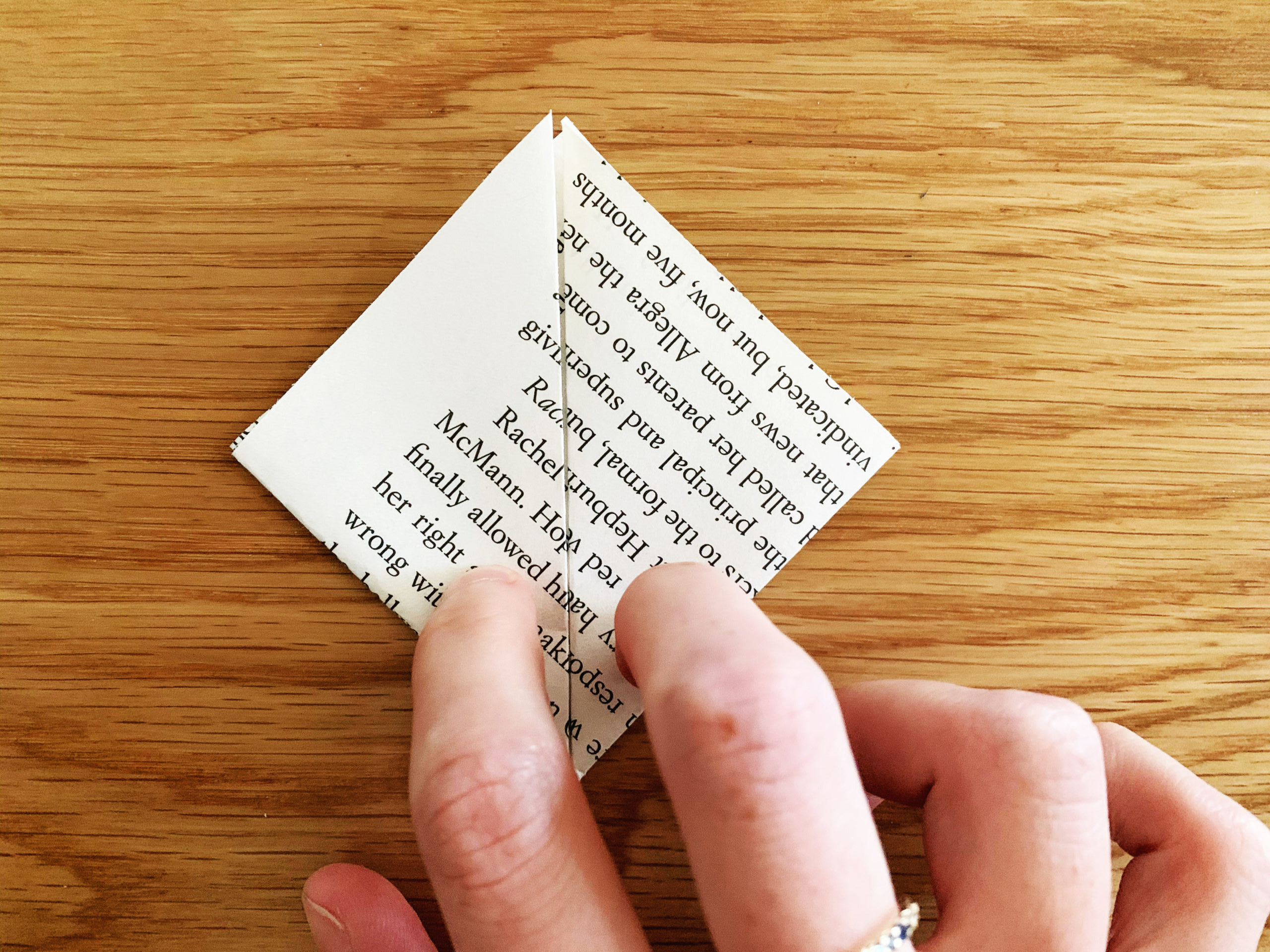
Step Five: Now take the top right point and fold it over towards the right, even with the side (see picture if this sounds confusing). Make a nice crease.

Step Six: Do the same for the left. Make sure to really crease these folds because you’ll need the crease lines as a guide in a few steps.
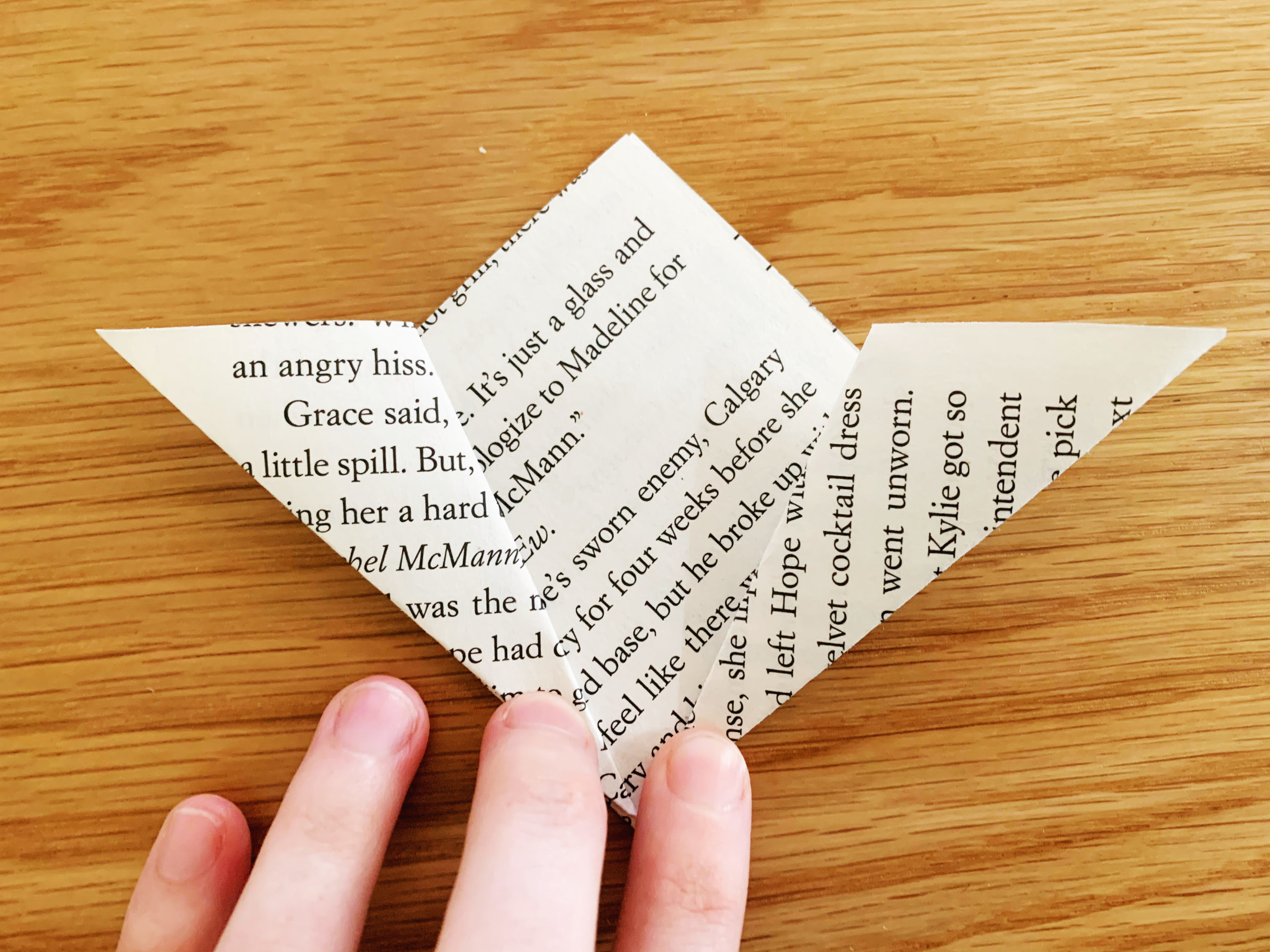
Step Seven: Take the right flap that you just folded over. Open it up with your pointer finger so that the side fold is now in the middle. Flatten it out and it will look like a kite.
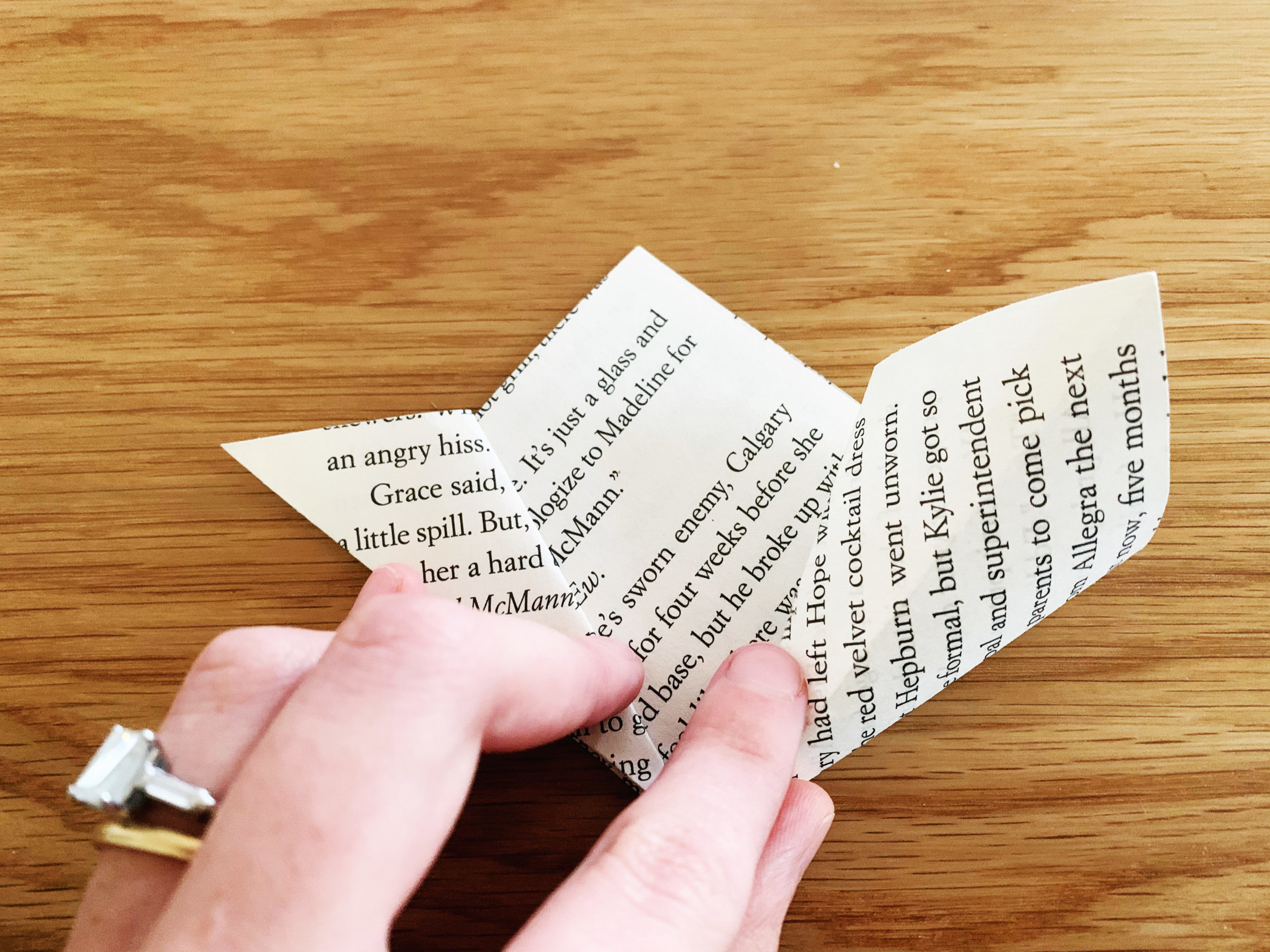

Step Eight: And do the same for the left side.
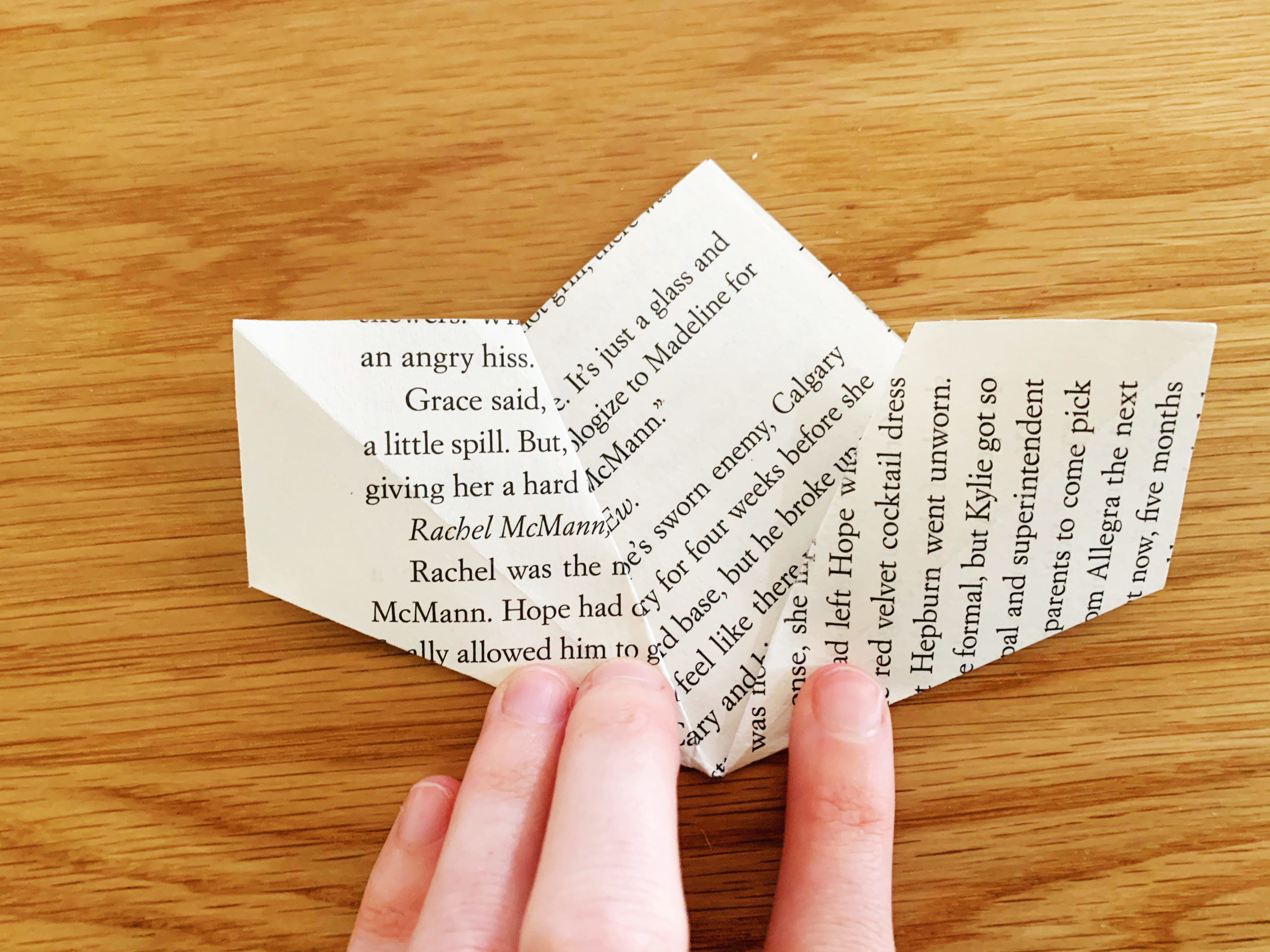
Step Nine: Next, fold over the top of the “kite” so it’s even with the triangle’s sides. Do that on both sides.


Step Ten: Now take the sides and fold it over towards the center. You will already have a crease here from your earlier fold (this is what I was talking about earlier!).
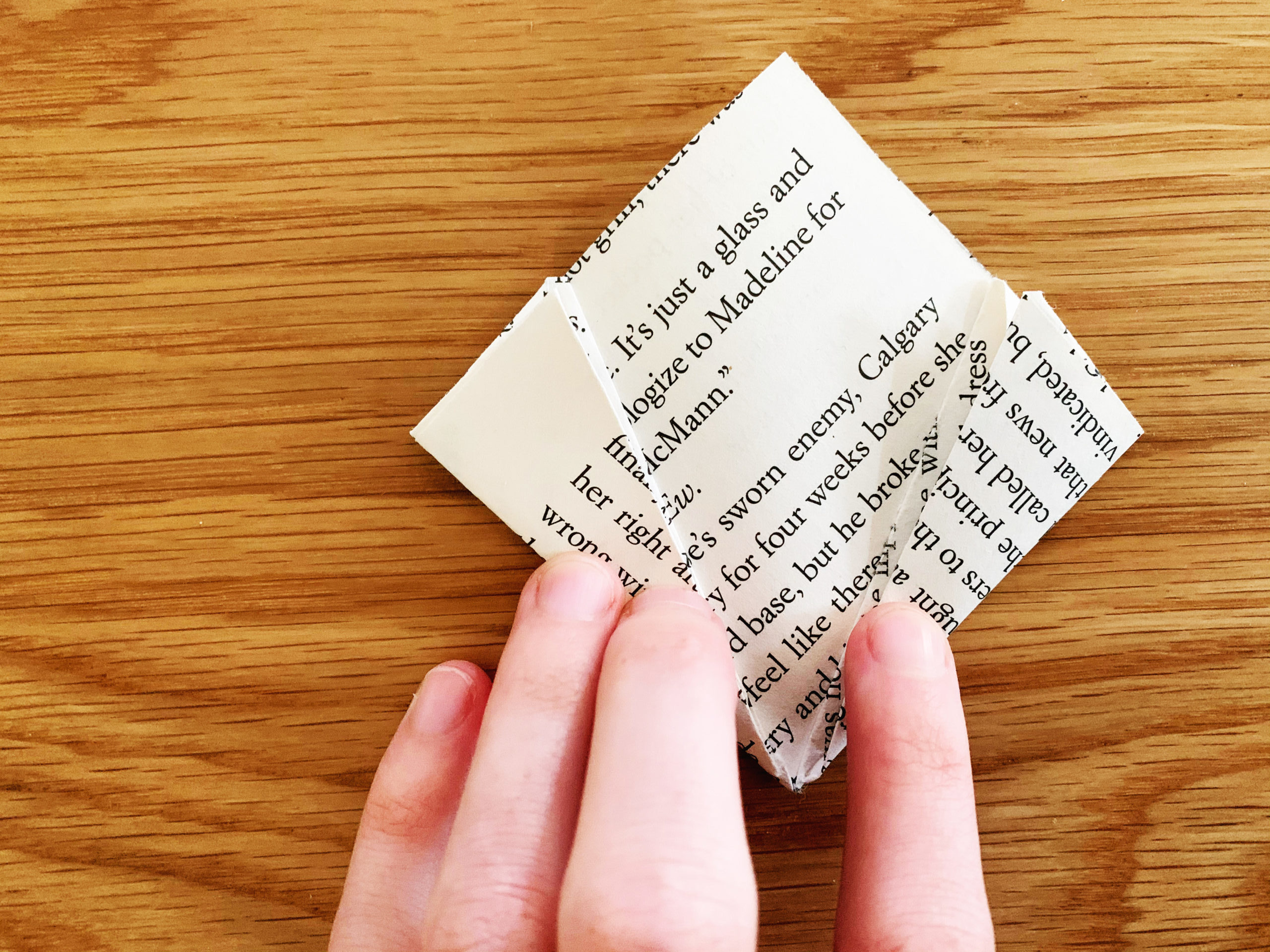
Step Eleven: Next, “curl” up both sides to meet. Don’t crease this part. You want it rounded like a flower petal.

Step Twelve: While pinching the edges together with one hand, with the other take your hot glue gun and glue the sides together. You now have your petal!


Step Thirteen: Repeat steps 1-12 until you have your five petals. Once you get the hang of it, these petals are super easy to make, I promise!
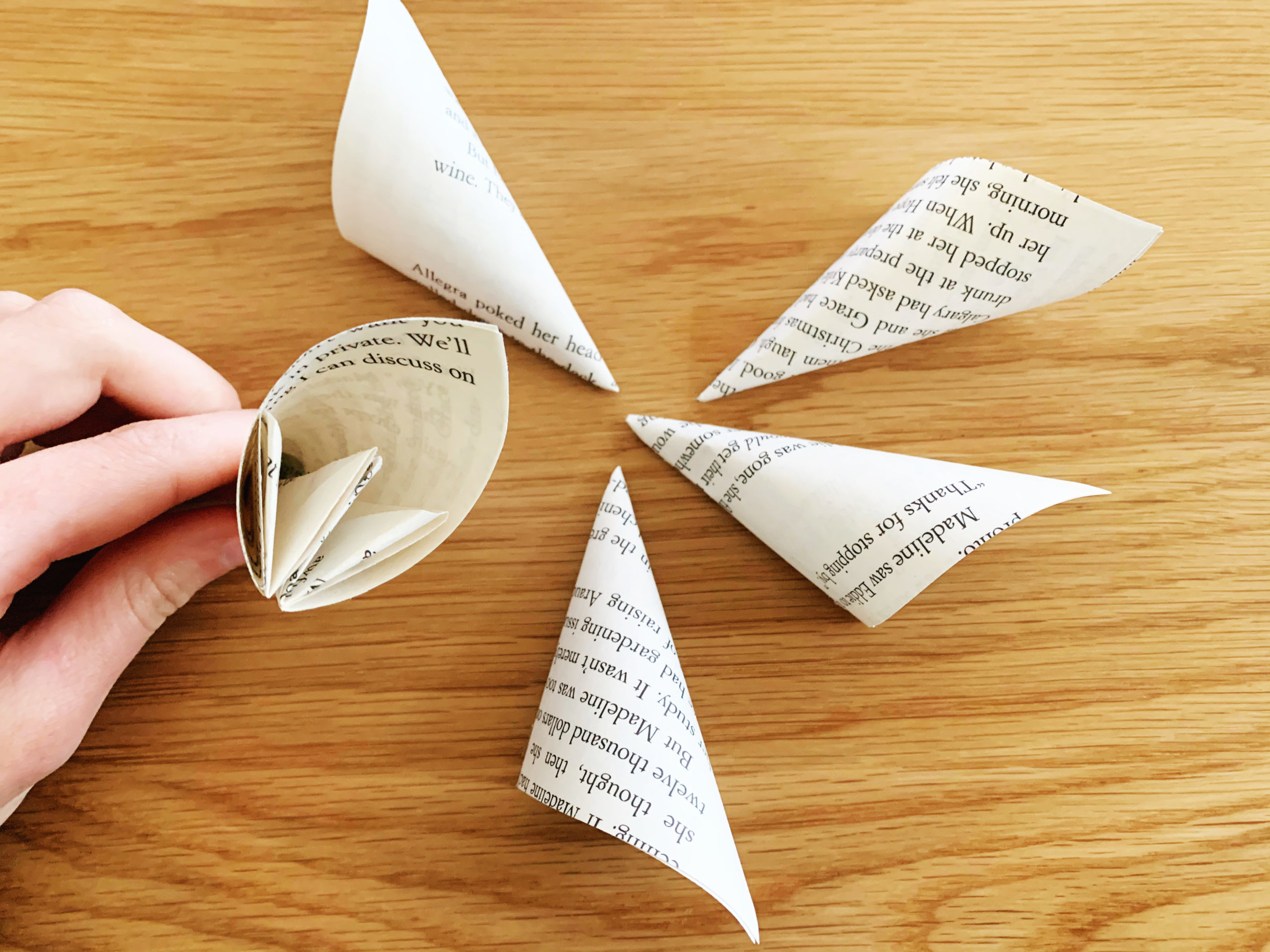
Step Fourteen: Now that you have your five petals, it’s time to glue them together to make your flower. Start with 2 petals and glue the edges together. Once that glue dries, add another bit of glue to the edge and add on the next petal. Just keep adding all your petals in this pattern and you will be holding a full flower before you know it.

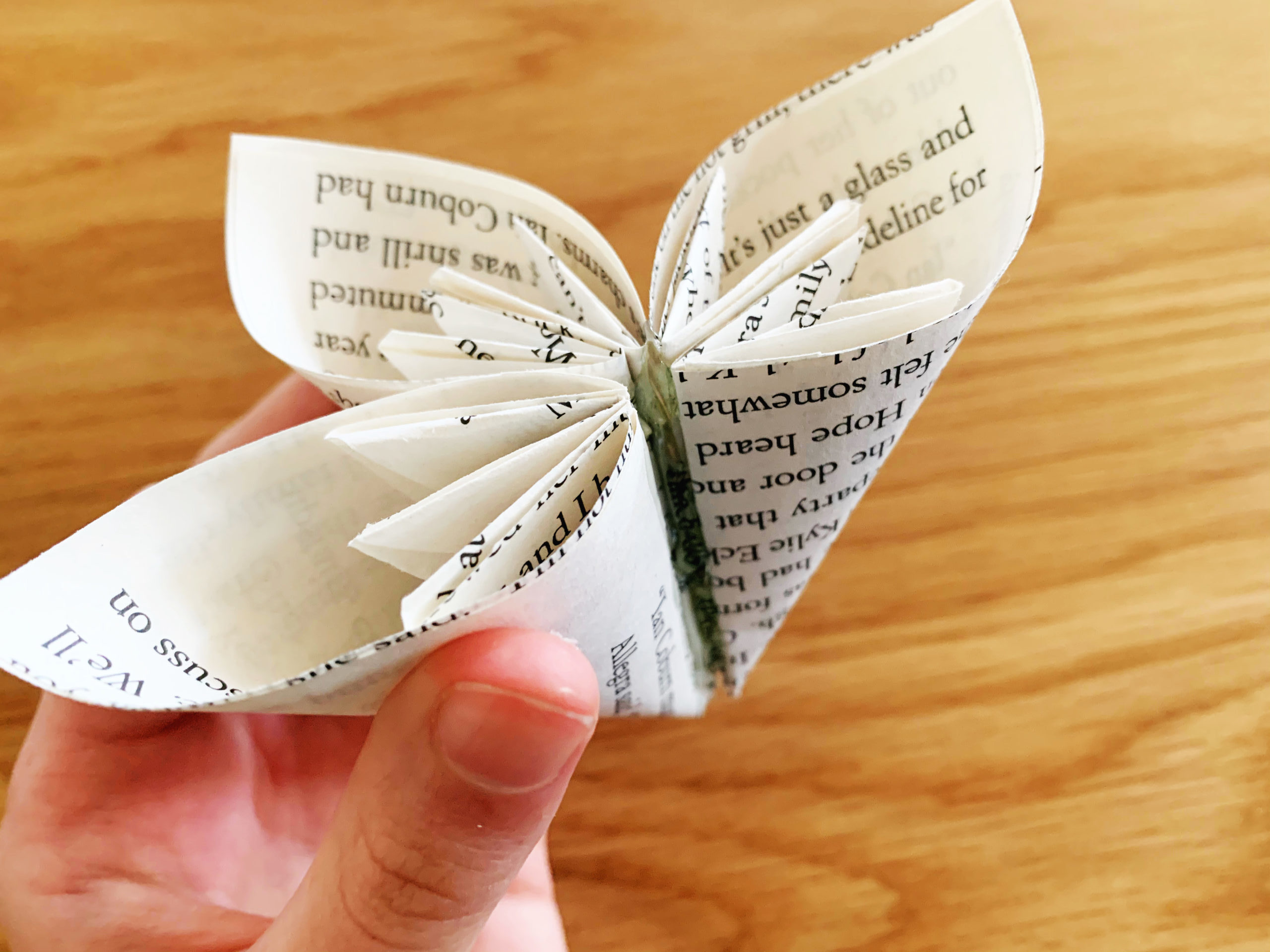

And you’re done! I chose to arrange the three flowers I made in a bowl, but there are so many different ways you can display these blossoms around your home. Let us know how you decide to decorate with them; we’d love to see what you come up with!
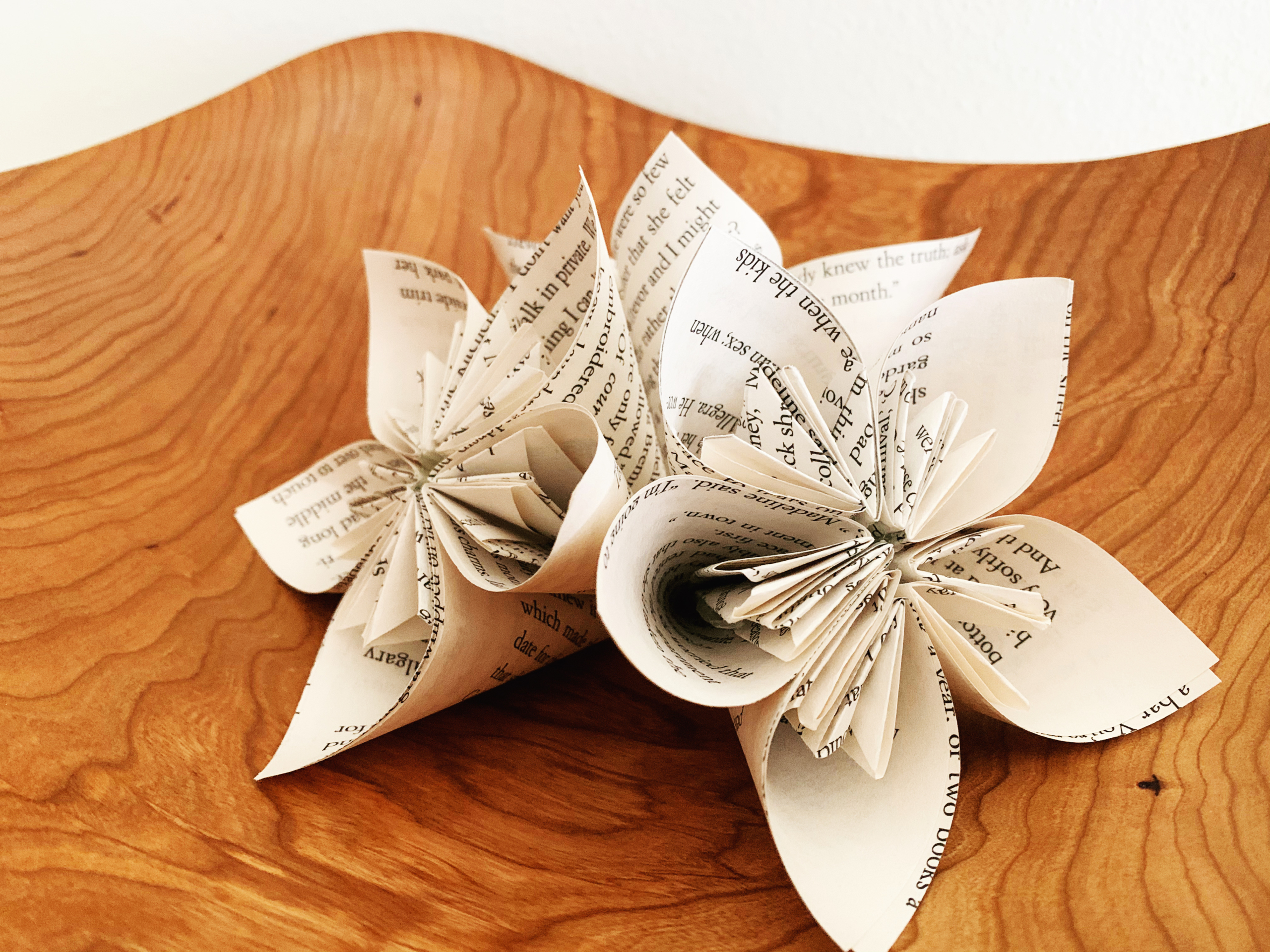

By Karen Williams
Showing support for independent bookstores is a noble cause, and a common way to do so is to simply visit the bookstore itself. But you can show support from home, too. Whether your goal is to avoid the crowds or get to know a bookstore outside your region, there are several ways you can support your favorite bookstore virtually.
Buy books from online storefronts.
Now more than ever, your favorite independent bookstores need your business. Many bookstores have the ability to sell books online for home delivery. Or, local stores may have a curbside delivery option where you can browse online and then drive by for pickup.
If your local store doesn’t have an online shop or you’re interested in browsing elsewhere, check out Bookshop.org, an ecommerce site with a mission to financially support local, independent bookstores. Booksellers, authors, and literary publishers (like this site) affiliated with Bookshop earn commissions on sales. Additionally, 10% of regular sales are added to a fund that is evenly divided and distributed to independent bookstores every six months. The site launched in January 2020 and by June had contributed more than $3 million to bookstores!
Purchase gift cards.
If you’re not in the market for new books right now, consider buying gift cards from indie booksellers for the future. You can always use them at a later date, or give them to the book lovers in your life for them to use as they please.
Buy audiobooks.
If you prefer to listen to your books, check out Libro.fm, an audiobook service where you can purchase directly from the independent bookstore of your choice. Libro has partnered with hundreds of bookstores across the county. If you don’t see your favorite store on the list, just contact Libro and they’ll be happy to work with your store to get started selling audiobooks.
Tag your favorite location in social media posts.
Subscribe to your bookstore’s email list. Many stores offer coupons and deals for their email subscribers to use. When you follow their social media pages on Facebook, Twitter, Instagram, and Pinterest, you are also showing your support to your friends and followers. Share what makes your favorite store special, and use hashtags like #bookstore, #books, #reading or #bookworm so that other readers can discover the store you love.
Leave a review.
Spend a few minutes writing a review on Google, Yelp, or Tripadvisor. Not only do positive reviews help your favorite bookstore get exposure online, they also give potential customers the chance to learn more about your favorite spot. It’s a win for everyone!
Attend a virtual event.
Many bookshops are offering virtual events that you can attend from the comfort of your home. Participating in online book clubs, workshops, and author readings is a great opportunity to support your indie store with your presence.
Make a donation.
If your indie store is a non-profit organization, contact them to see if you can donate to show your support. Or, consider supporting bookstore owners with a donation to the Book Industry Charitable Foundation, an organization that helps independent booksellers and their families facing financial hardship.
Even in thriving economic times, independent bookstores face challenges. Competition with larger retailers, small profit margins, and overhead costs present an uphill battle for the bookstores we love. Any small step you can take to support your bookstore virtually can make a huge difference. What can you do today to show your love for independent bookstores?
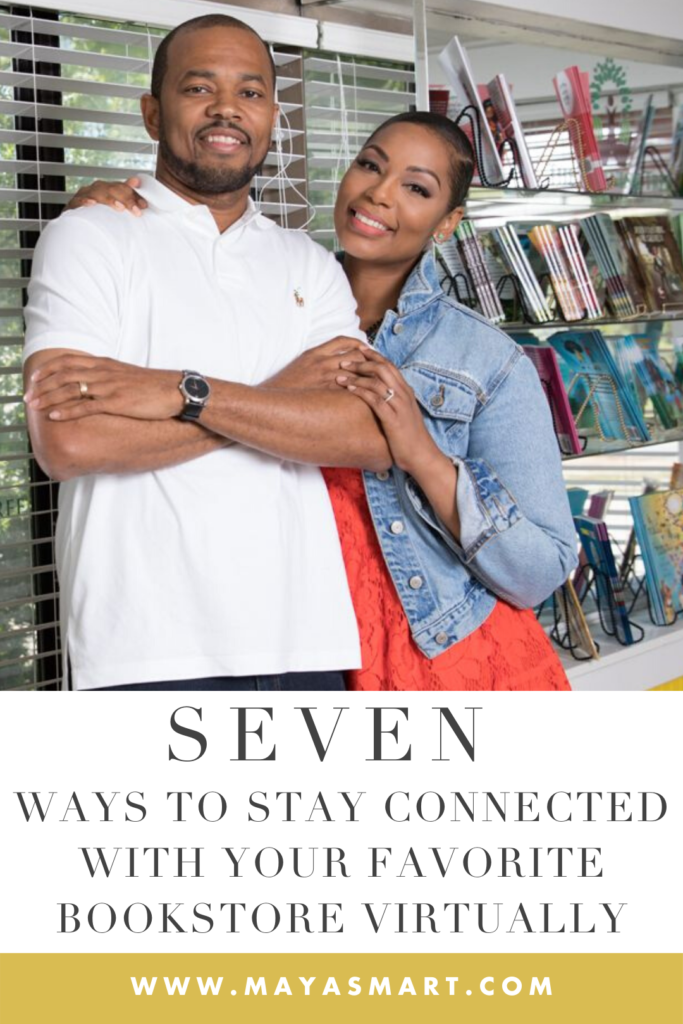
Many parents, especially bookish ones, long for their children to fall in love with reading. They read to their kids religiously, awaiting the day when their children take pleasure in selecting and reading books on their own. They hope that curling up in the company of a great book will beat out apps, games, and screen time on their kids’ list of preferred activities.
But, alas, kids often show greater interest in other things. I know that my own daughter’s reading interest and motivation ebbs and flows. There are weeks when she’s more excited about making slime (again), building a pillow fort (again), or even practicing her typing than reading a book. And there are other times when she’s rolling through a series of books, pausing only to tell me the author’s life story and when the next installment is set to drop.
Over the years, I have observed a few factors that seem to boost reading enjoyment. Here’s my best advice for parents who want to encourage their kids to read more on their own.
Shore up their Reading Skills
It’s no fun to read when you struggle with it, so parents of kids who aren’t exhibiting much book love should make sure that there’s not an underlying decoding or comprehension challenge in play.
Take a look at your state’s reading standards to familiarize yourself with grade-level expectations and initiate conversations with your child’s teacher about the students’ strengths and challenges. You could also seek a full-fledged learning evaluation from your school district or an independent provider to discover how your child performs on standardized academic and reading assessments. Detailed evaluations can let you know where your child needs additional support to bring the words on pages to life.
Studies indicate that early reading skill matters for later reading skill and motivation, so make it a priority to secure a strong literacy foundation now.
Supply Interesting Reading Material
Assuming your child can decode and comprehend the texts available to them, the next most important parent action is to give them ample access to interesting (to them) reading material of all kinds—print or digital books, magazines, recipes, lists, instruction manuals—whatever they’ll read attentively. Along with skill, enjoyment is great fuel for reading volume, so stock up on material related to your child’s interests.
One of my favorite examples of this approach is a parent who bought Minecraft books to complement a child’s obsession with the game. “I’ve found that far from increasing time spent on Minecraft, getting your Minecraft fan a book about Minecraft seems to actually have no other effect than to increase the time they spend reading,” the parent observed. “With enthusiasm. As in, I don’t even have to nag them to read. They, gulp, seem to actually WANT to read.”
Epic Digital library is a great choice for families in need of fresh reading material. This kid-focused library offers thousands of ebooks in an ad-free, immersive environment for children 12 and under.
Remember, it’s never the time to force your literary tastes on your child. As long as the content they enjoy isn’t racist, violent, or otherwise objectionable, let them read what they want on their own time, because that literacy practice can boost their reading fluency, vocabulary, and stamina. This is what I tell myself when my daughter is more into magazines and books based on her favorite TV shows than the children’s literature I prefer.
Make it Social
I’ve witnessed firsthand how my daughter’s reading enjoyment is enhanced by factors beyond the book itself—like who shared it with her or who else is reading or talking about it. In kindergarten, she read every available installment of The Owl Diaries because her friends were reading the series too. They had a little book club, traded copies, and shared the excitement of tackling their first chapter books together. I’m convinced that the community around the book kept her reading the series longer than the plot or characters alone would have.
Do any of these strategies resonate with you? What have you tried to boost your child’s interest in reading and how did it work?
These DIY fabric book covers are a pretty and crafty way to protect your library. Safeguard books while traveling, replace lost dust covers, or preserve well-loved titles from eager (and grubby) little hands. We especially like these covers for keeping kids’ favorites in good enough shape for them to read to their own children someday. Plus, they add a fun pop of pattern and color to your bookshelf.
This book craft is easy, inexpensive and doesn’t take long. Have leftover fabric from other DIY crafts? Perfect! You can use different patterns for variety, or make multiple covers from the same material to create unity in the decor of your library.

Materials:
- Hardcover book to cover
- Fabric
- Fabric glue or tape (or you could use a glue gun)
- Sharp scissors/fabric scissors
- Tape measure
- Ruler
- Pencil
Cost: If you have some fabric around (or an old curtain, sheet or garment to cut up), this book craft should not cost you anything. This is the perfect way to use up a smaller scrap!
Step One: The first thing you will need to do is cut out your fabric piece. To do that, you will need to measure your book, so you can cut a piece that’s the right size. Measure both the height of your book and the “wrap-around” width of it from edge to edge with the book closed.
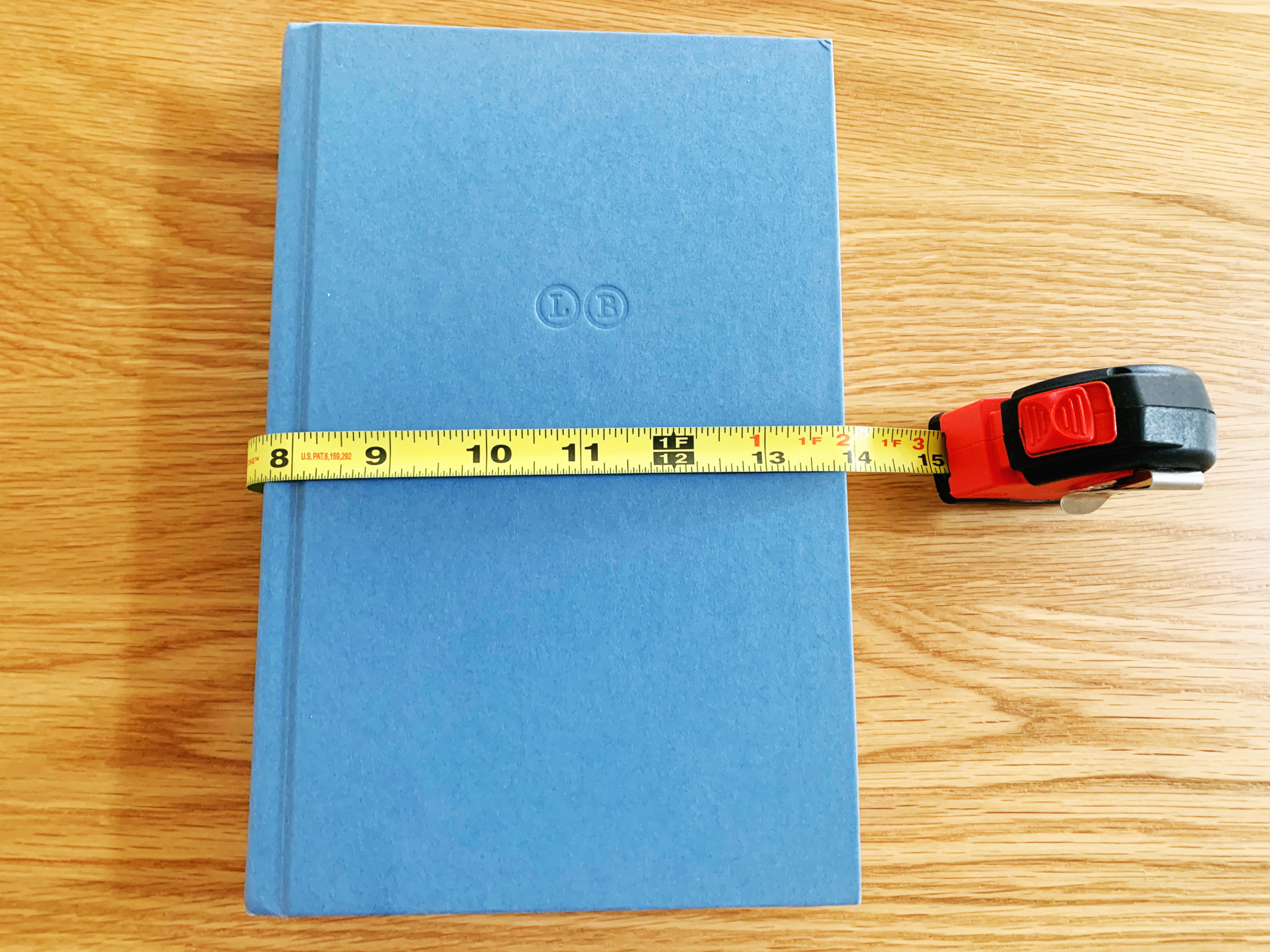
Step Two: Now you’re ready to cut your fabric. Cut a piece of fabric that’s 1 ½” taller than your height measurement and 8” wider than your width measurement.
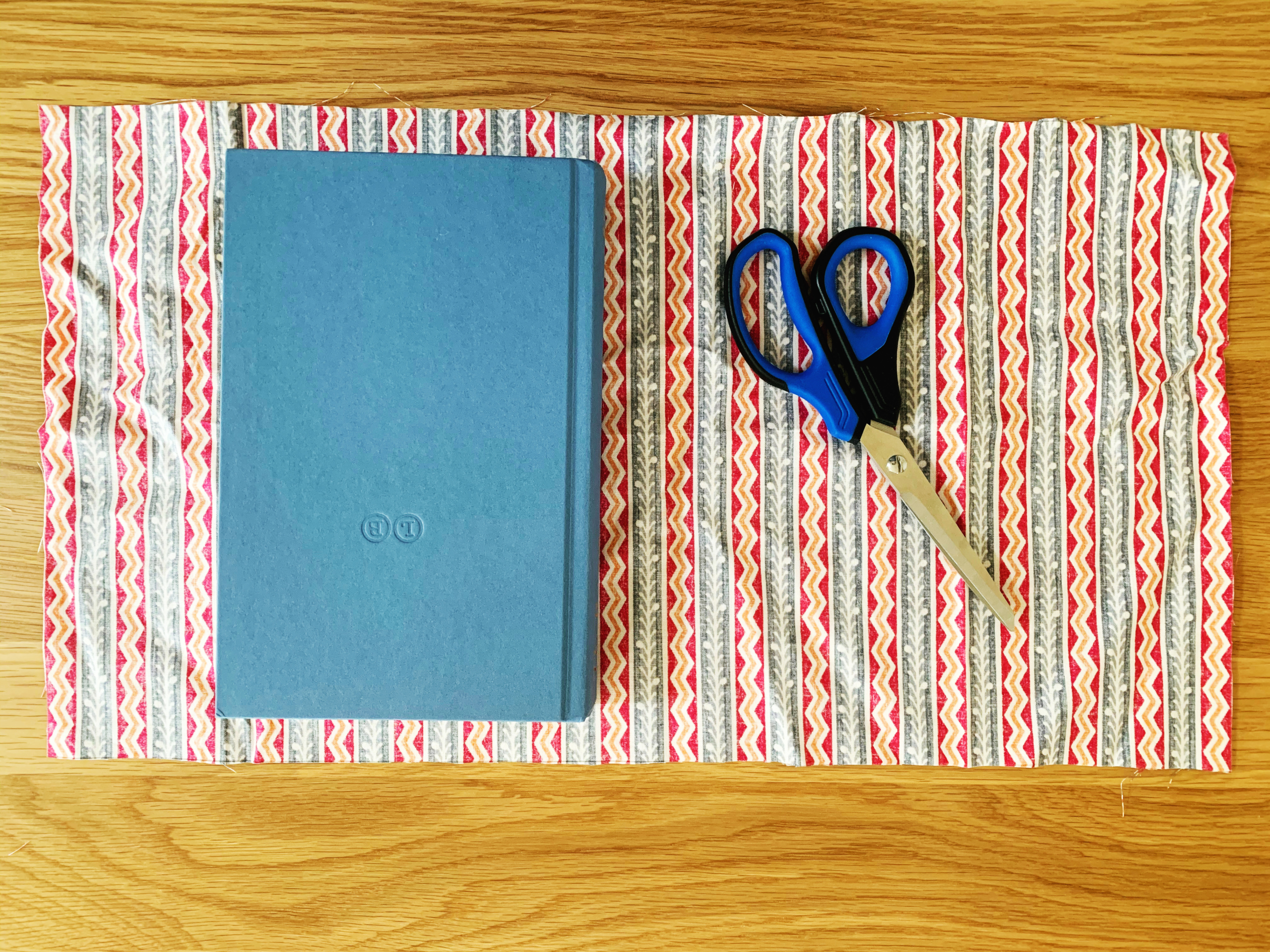
Step Three: Once you have your piece of fabric cut out, place it down in front of you with the unfinished side facing up. Measure 1 ½” from the top and bottom edges (the long sides) and draw a line lightly with your pencil. Then make a line 4” in on either side (the short sides), marking the part that will become the pockets where you will eventually slide your book in.


Step Four: Now it’s time to create a “finished edge” along the top and bottom. Place some glue between the raw edge along the top of your fabric and the pencil line you just drew (1 ½” below), leaving the last 4” to either side unglued. Then fold the fabric over so the raw edge meets the pencil line. Repeat for the bottom edge.
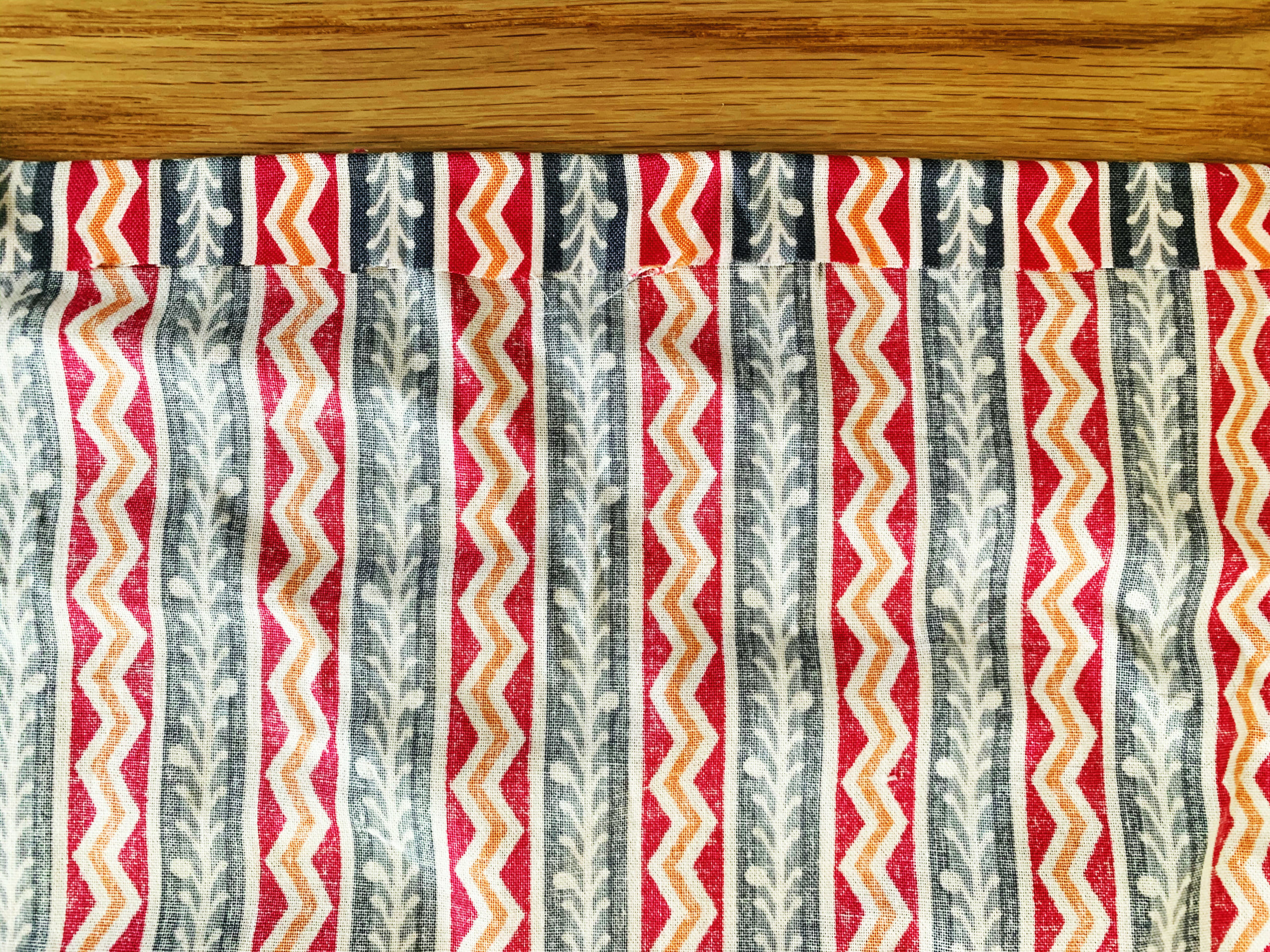
Step Five: Next you will need to create the pockets for your book to slide into. Measure 8” from either side, making your marks on the part of the fabric you just folded over. The first 4” of this fold will be the part that you just left unglued in the previous step. Place glue along the finished part of the seam only, and then fold the side edge over to meet the mark you just made at 8” in. Your book cover will still be able to slip under the fabric because your first seams are not glued! Press it down gently, being careful not to let the glue seep through the fabric and accidentally glue together the unglued part.
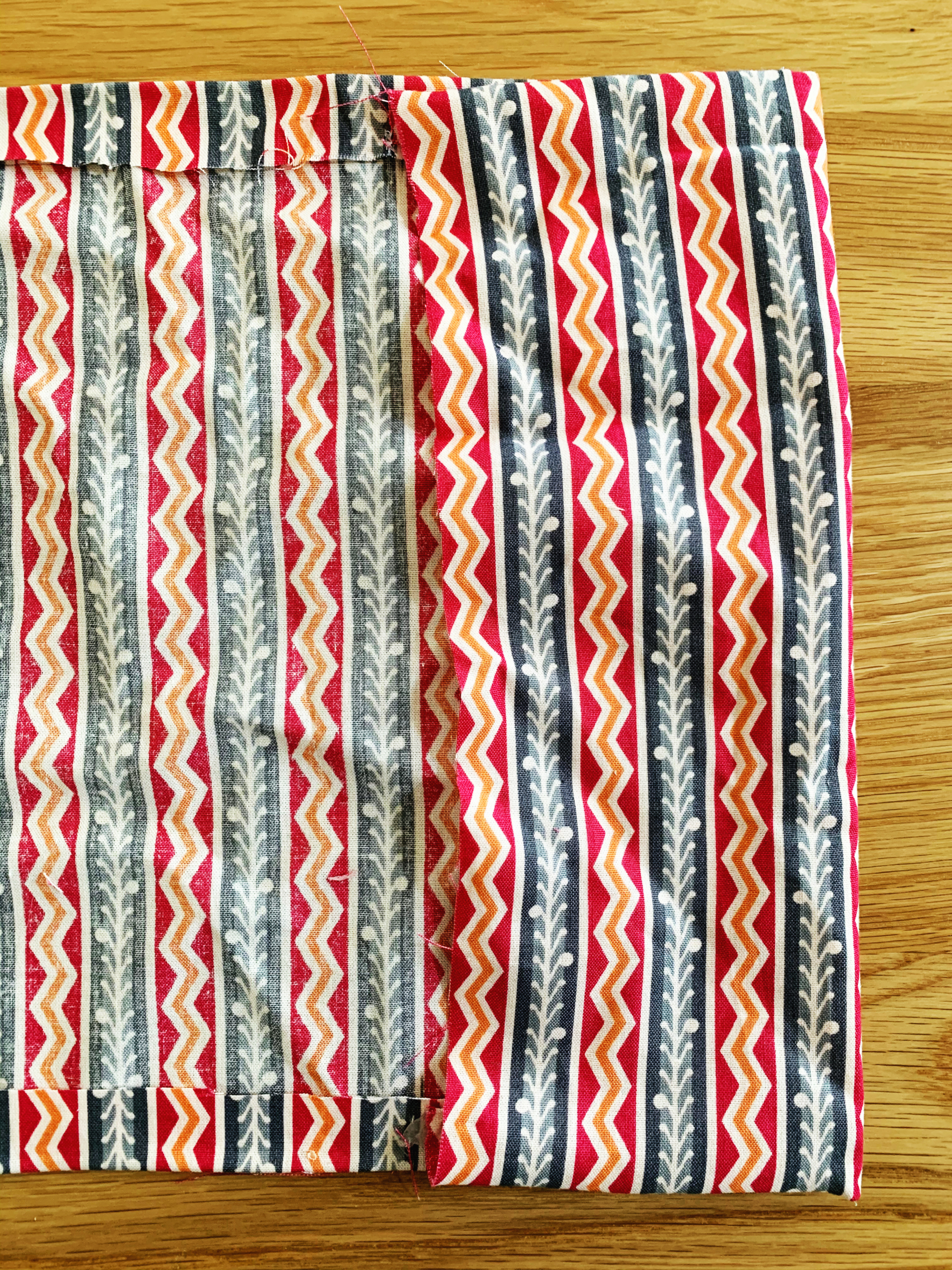
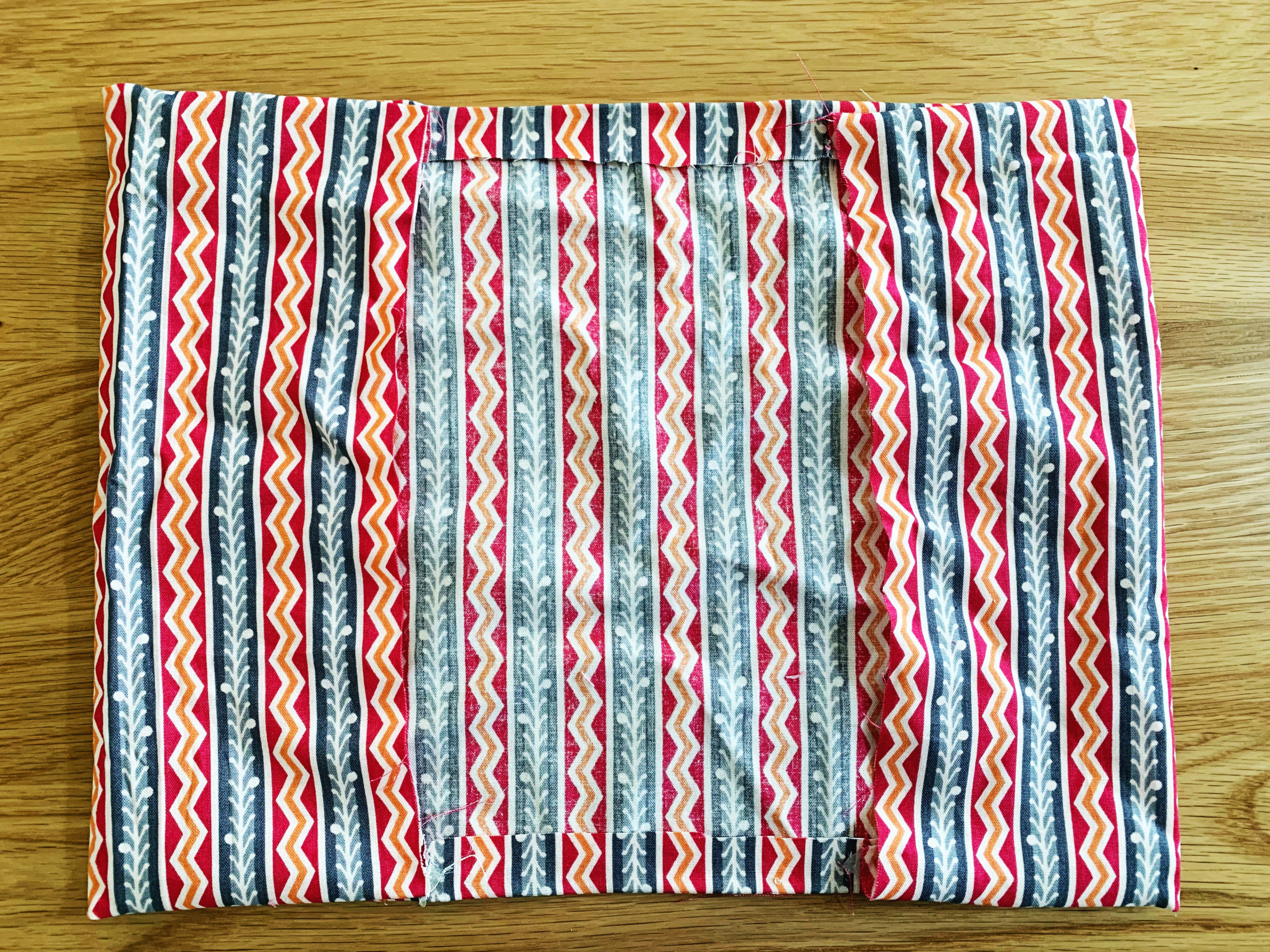
Step Six: All that is left to do is let your glue dry and then slip your book into your beautiful new book cover!
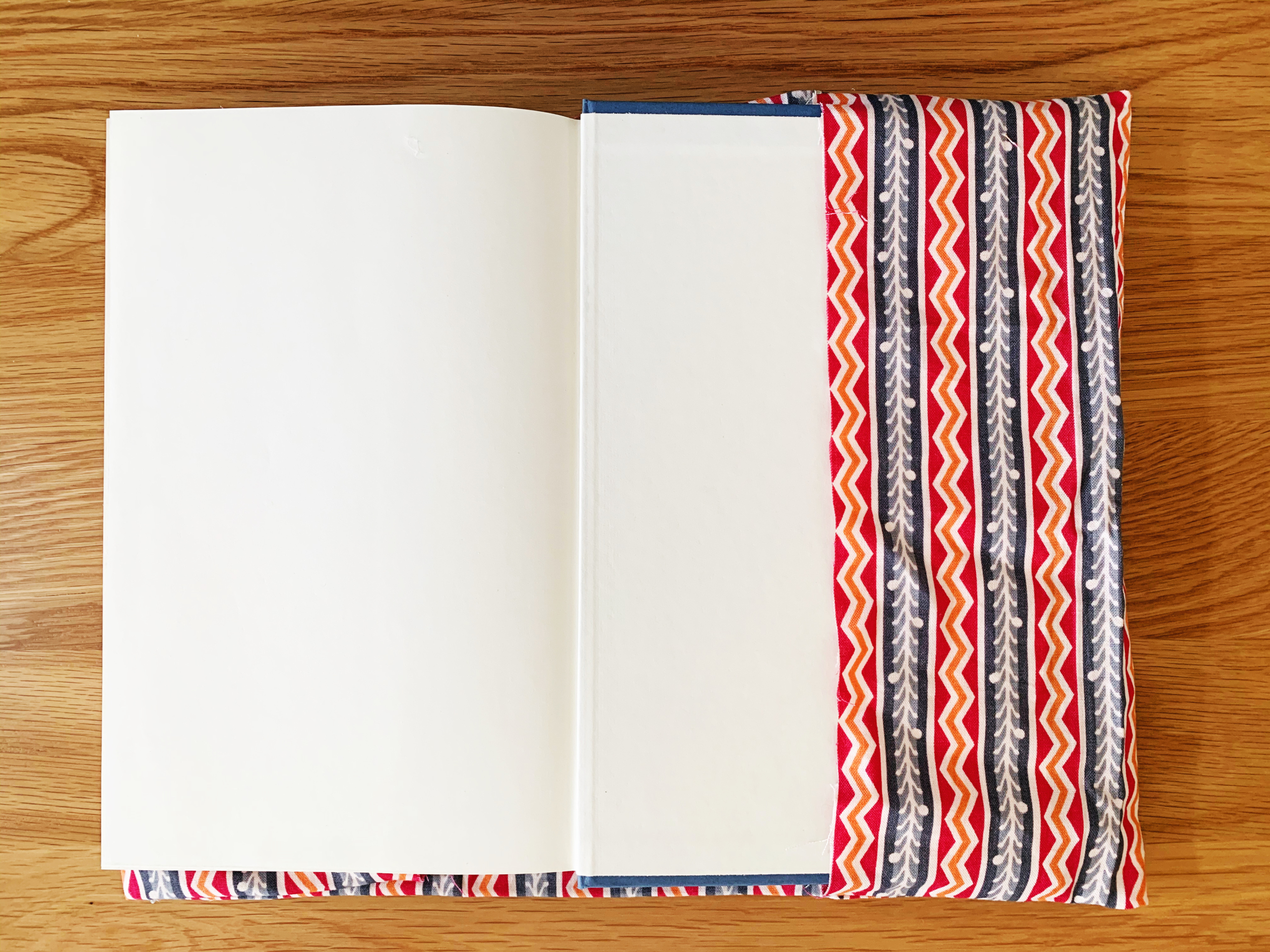
This can be a fun craft to do with kids as well! They will love dressing up their favorite books and pulling them off the shelves for storytime. How will you use your new book covers?
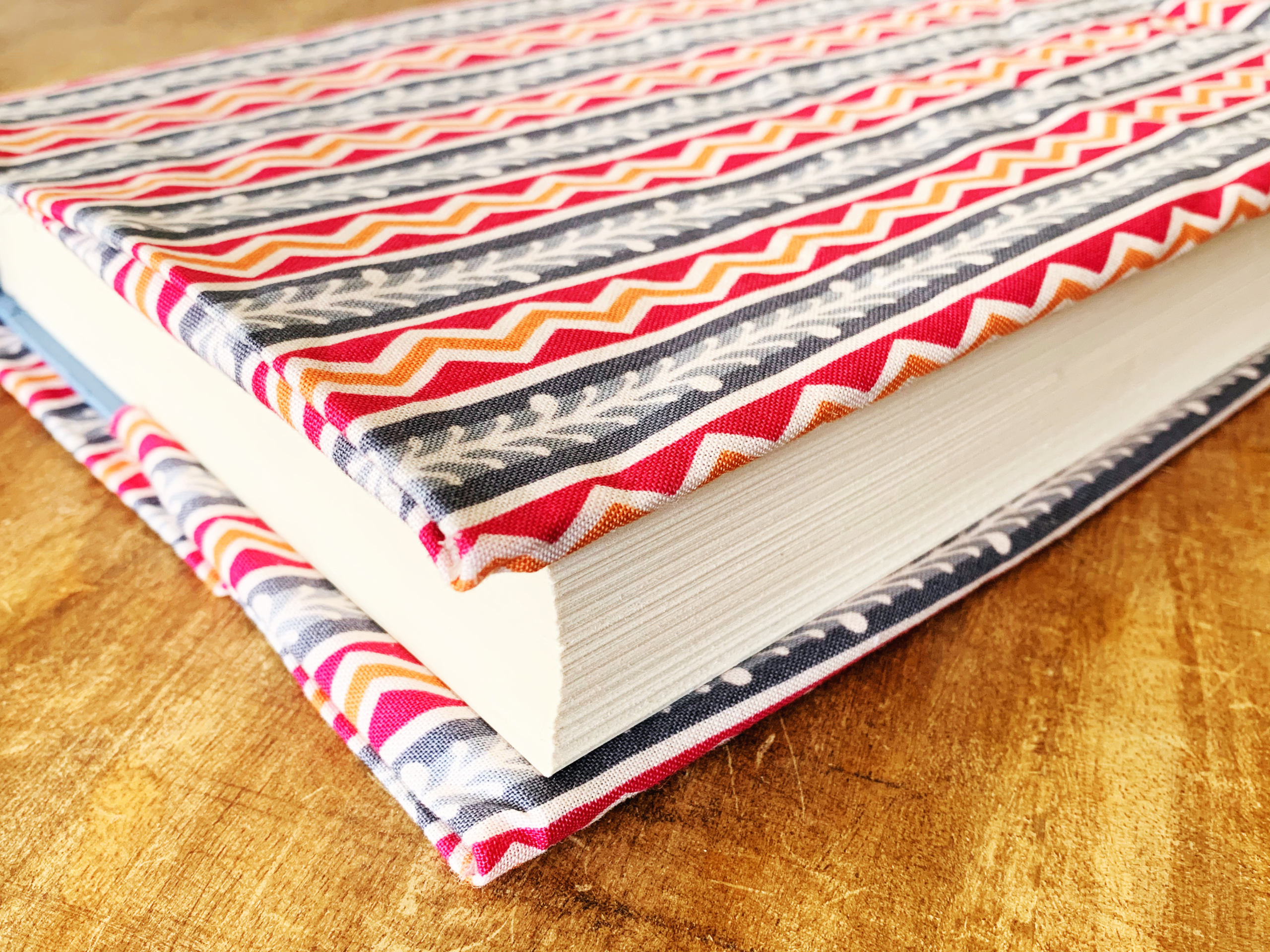
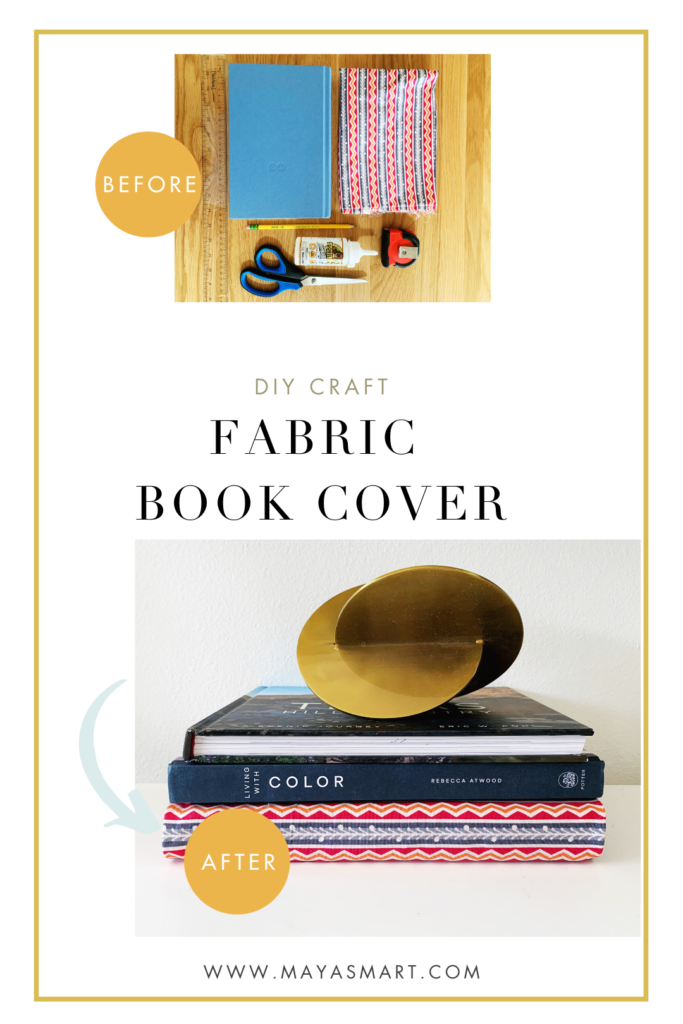
These might be my new favorite DIY craft bookmarks! The chunky tassels are so fun and make it super easy to find your spot in a book, even for little hands. They’re also eye-catching and hard to misplace … hopefully encouraging young readers to use them instead of folding down the page corner! (We can always dream.)
This is an excellent book craft to do with kids. Let them draw or paint their own design to personalize their bookmark, or help them copy out a quote from a favorite book to add some extra literacy to the project. And don’t forget to have them to sign their creation! Whether you’re doing it to create a cute keepsake or as the perfect made-by-me gift, this simple craft is satisfying for all ages.

Materials:
- Yarn
- Scissors
- Cardboard
- Ruler
- Pencil
- Cardstock (patterned, or plain to decorate your own!)
- Mod Podge (or other glue)
- Foam brush
- Hole punch
Cost: You probably have most of these materials around your home! If not, the cost will be very minimal to get a few of these craft supplies, which you can reuse for another project.
Step One: Cut a piece of cardboard to about 3.5 inches wide.Take your yarn and wrap it about 50 times around the cardboard. Then cut the yarn from the spool.

Step Two: Cut a small piece of yarn from the spool and slide it under all the yarn on one side of the cardboard, as shown below, then double knot it at the top.
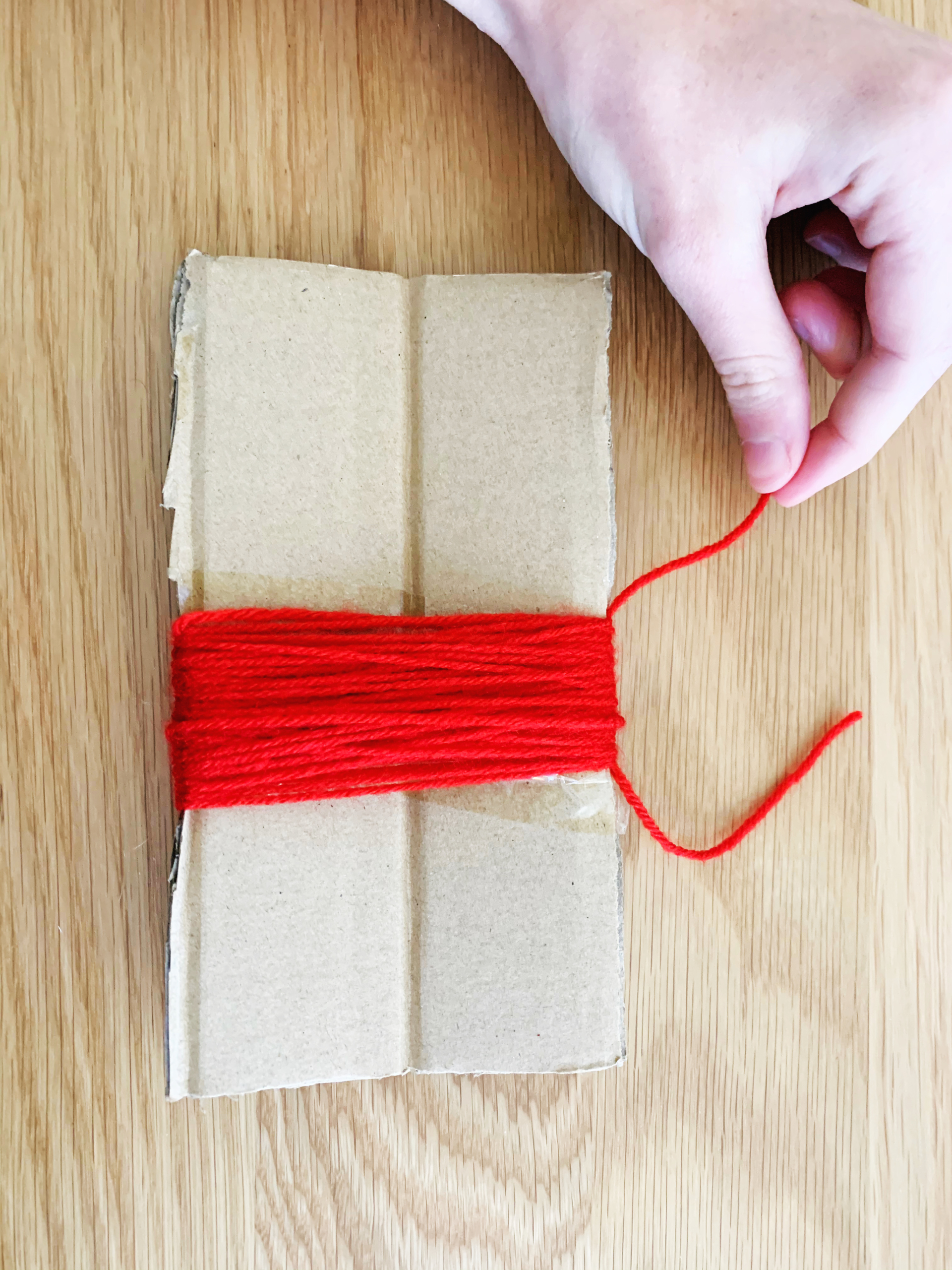
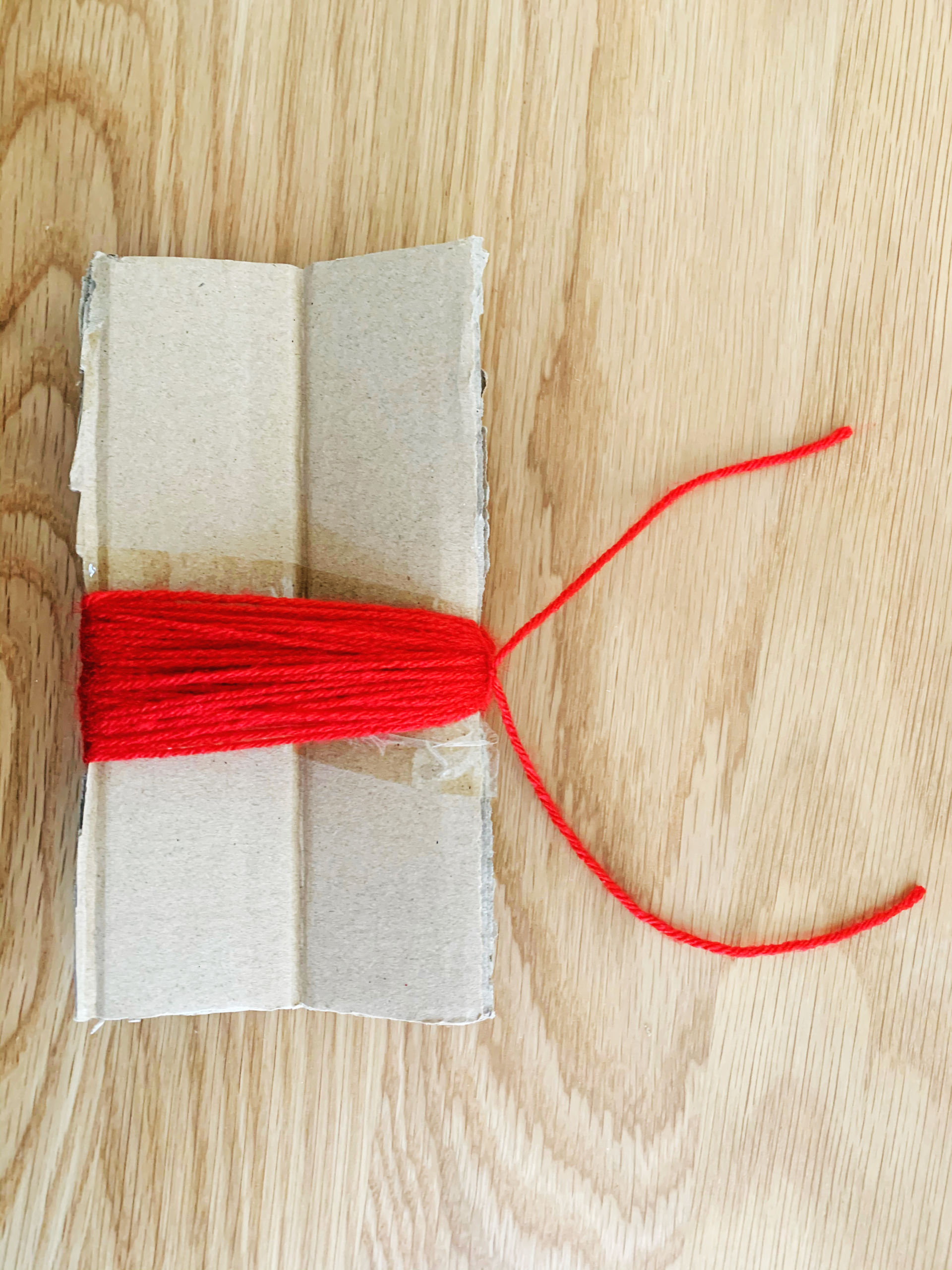
Step Three: After you tie the knot, cut through all the yarn on the opposite side.

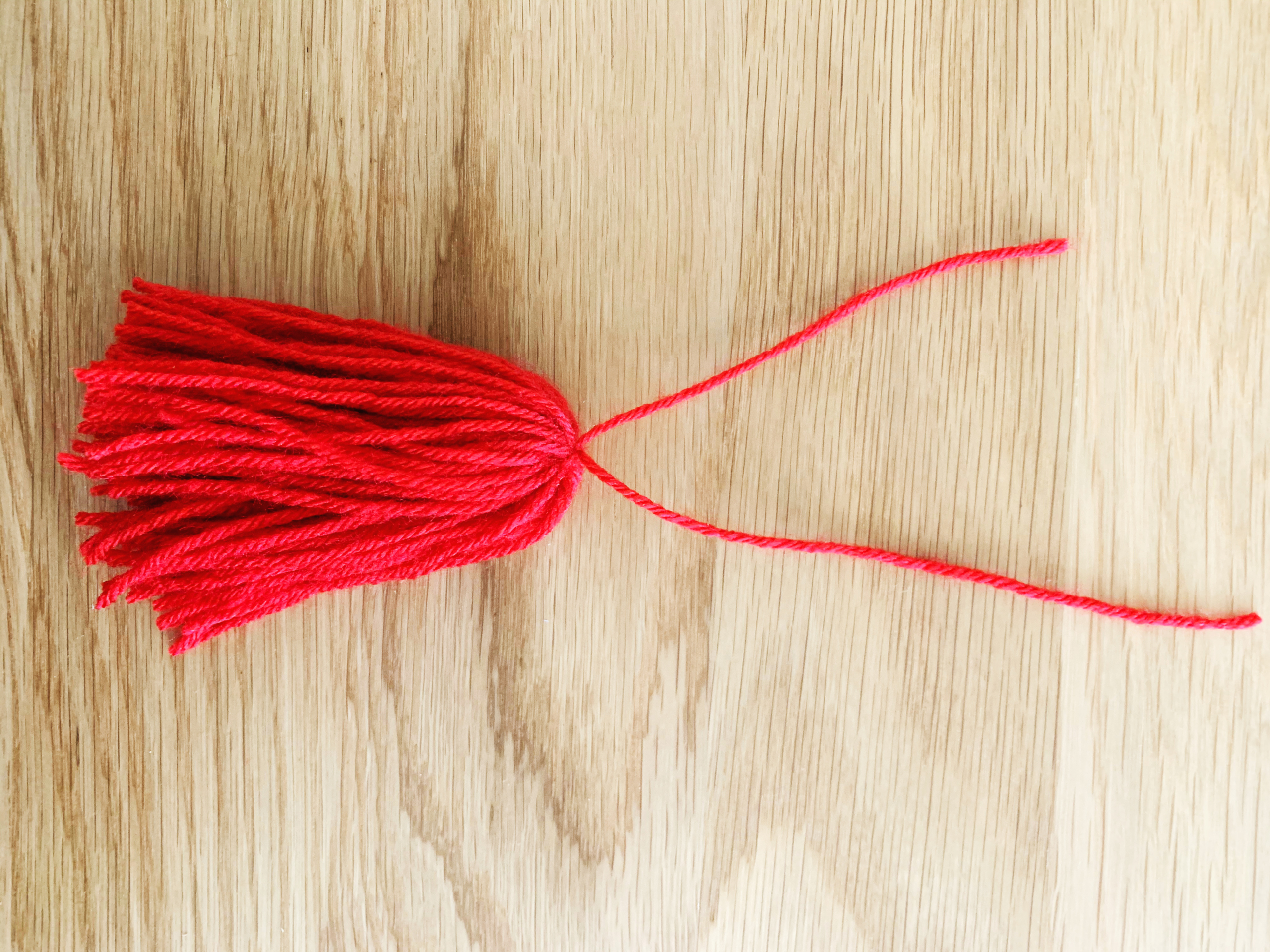
Step Four: Now, to finish off your tassel, cut off two small pieces of yarn from the spool. Wrap the first piece around the top and tightly double knot it to make the head of the tassel. Repeat this with your second piece of yarn, underneath the previous piece of yarn.

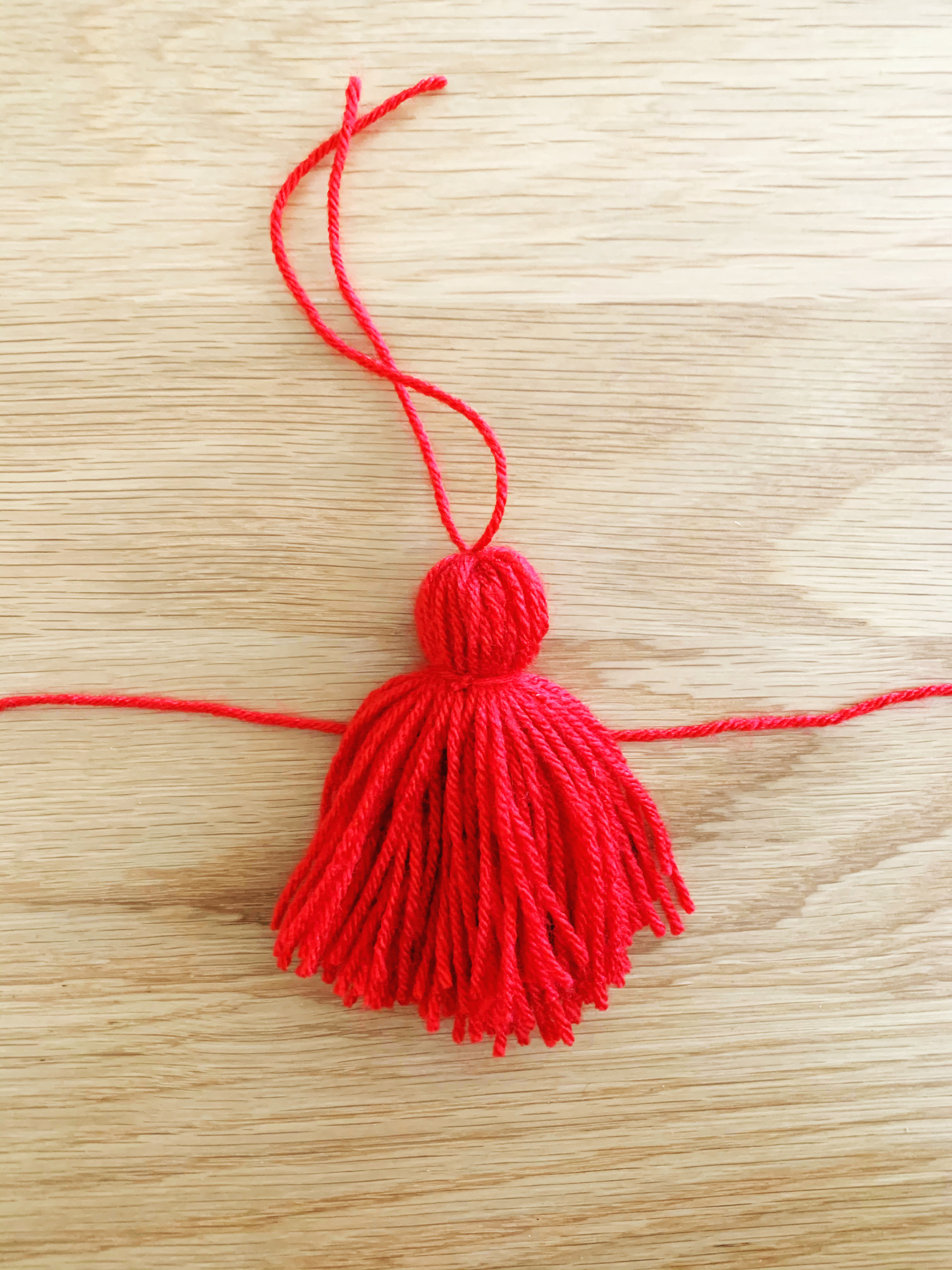
Step Five: Trim any straggly pieces of longer yarn from the bottom of your tassel, to clean it up and make it look even.

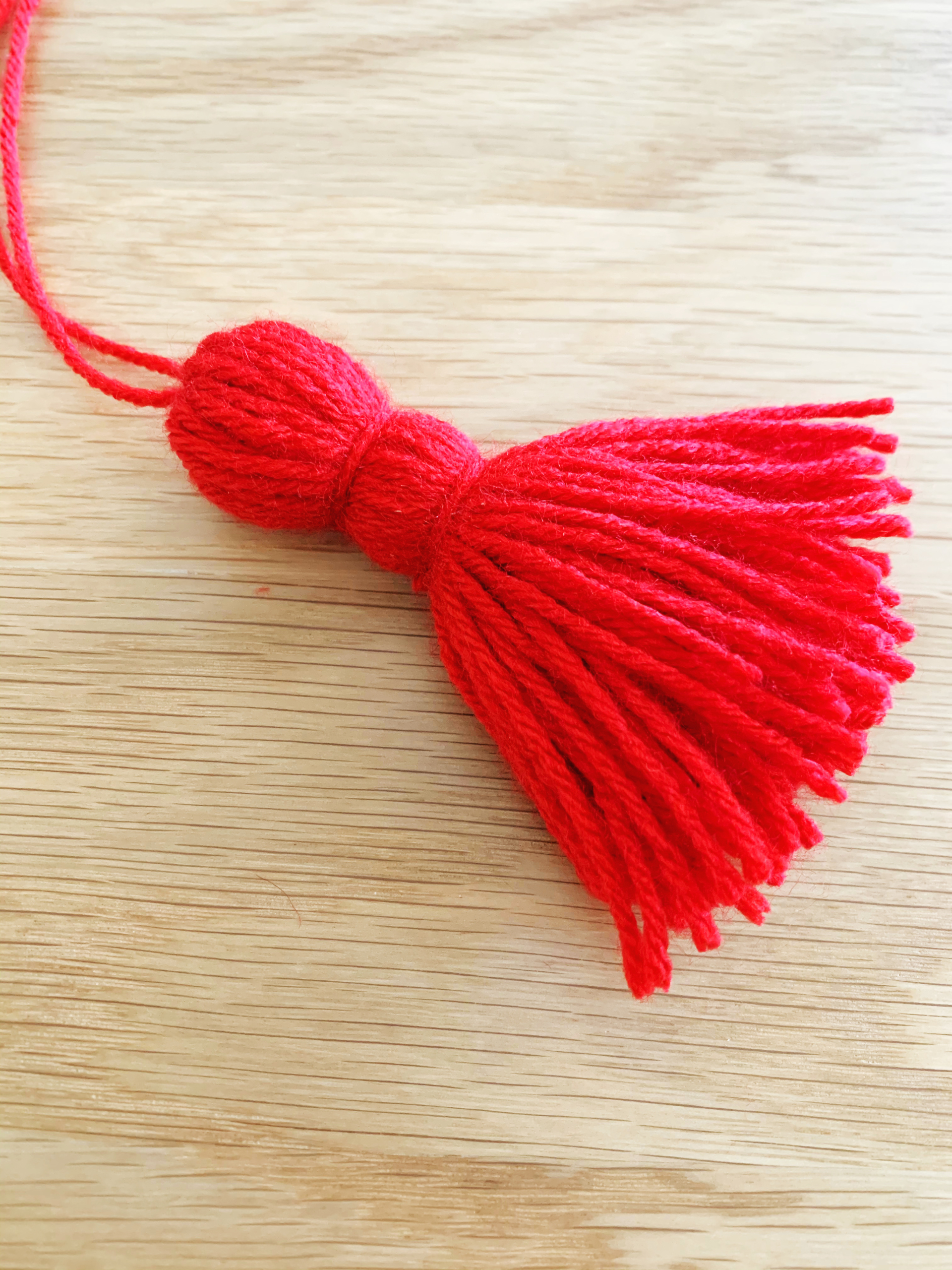
Step Six: Measure and cut out a 4.5”×6.5″ piece of cardstock. If you’re decorating your own bookmark, now’s the time to decorate it. (I chose to decorate my own rather than using a patterned cardstock, but you can definitely use patterned paper, especially if you want to make several bookmarks.) Once you have cut it out, fold the cardstock in half lengthwise.
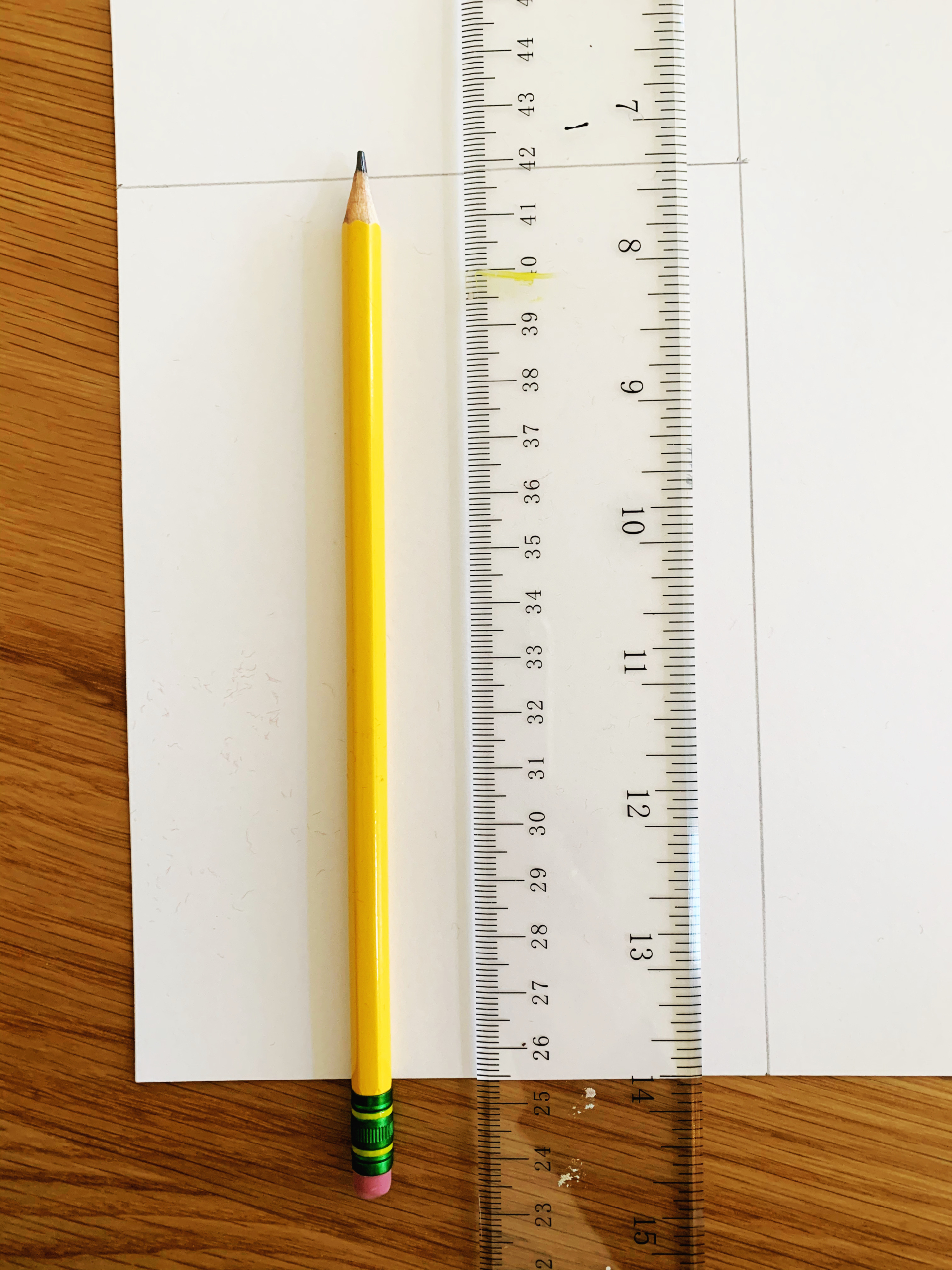

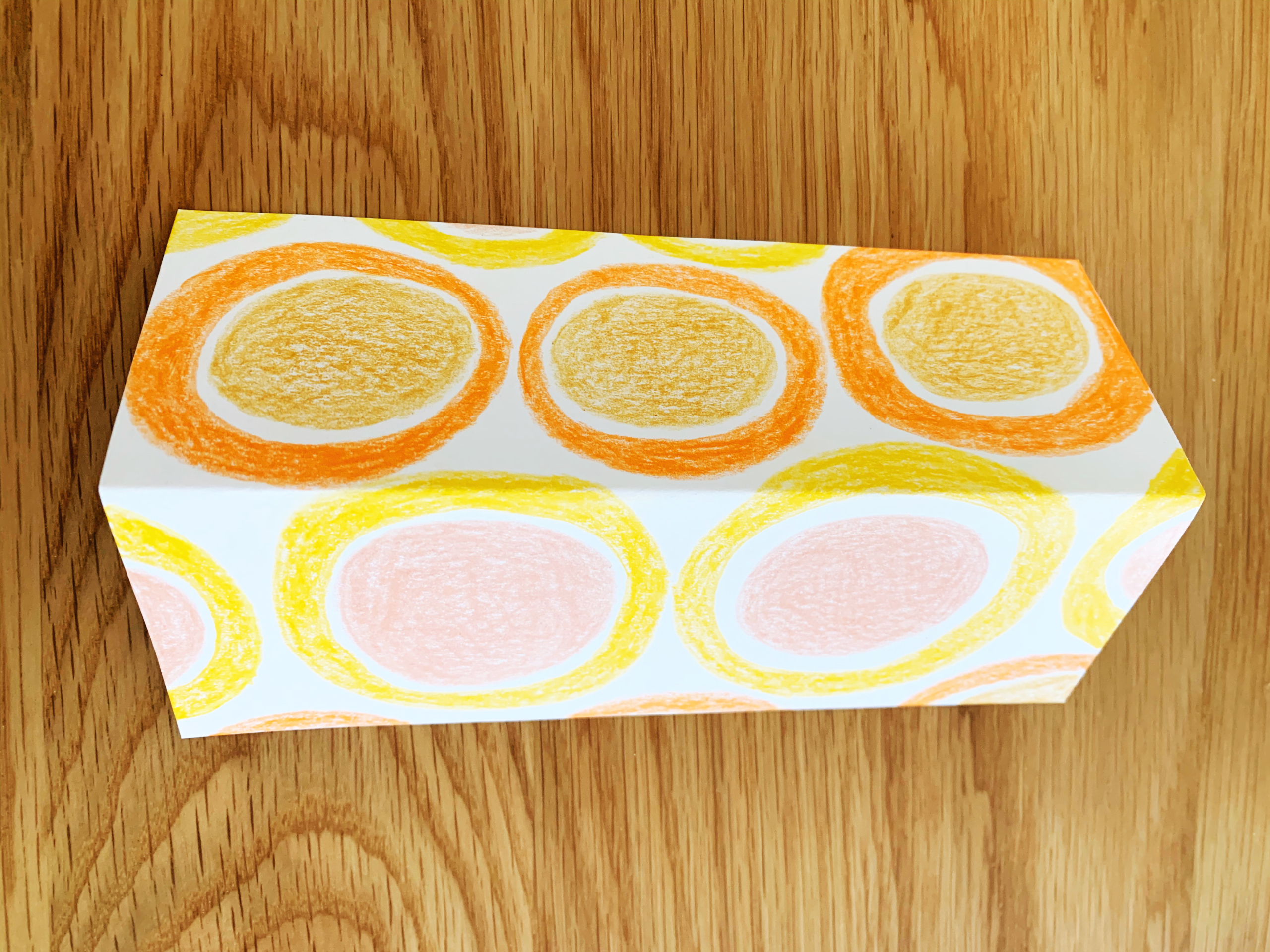
Step Seven: Apply a thin layer of Mod Podge (or glue) with a foam brush on the inside of the cardstock, then fold it together and let it dry.
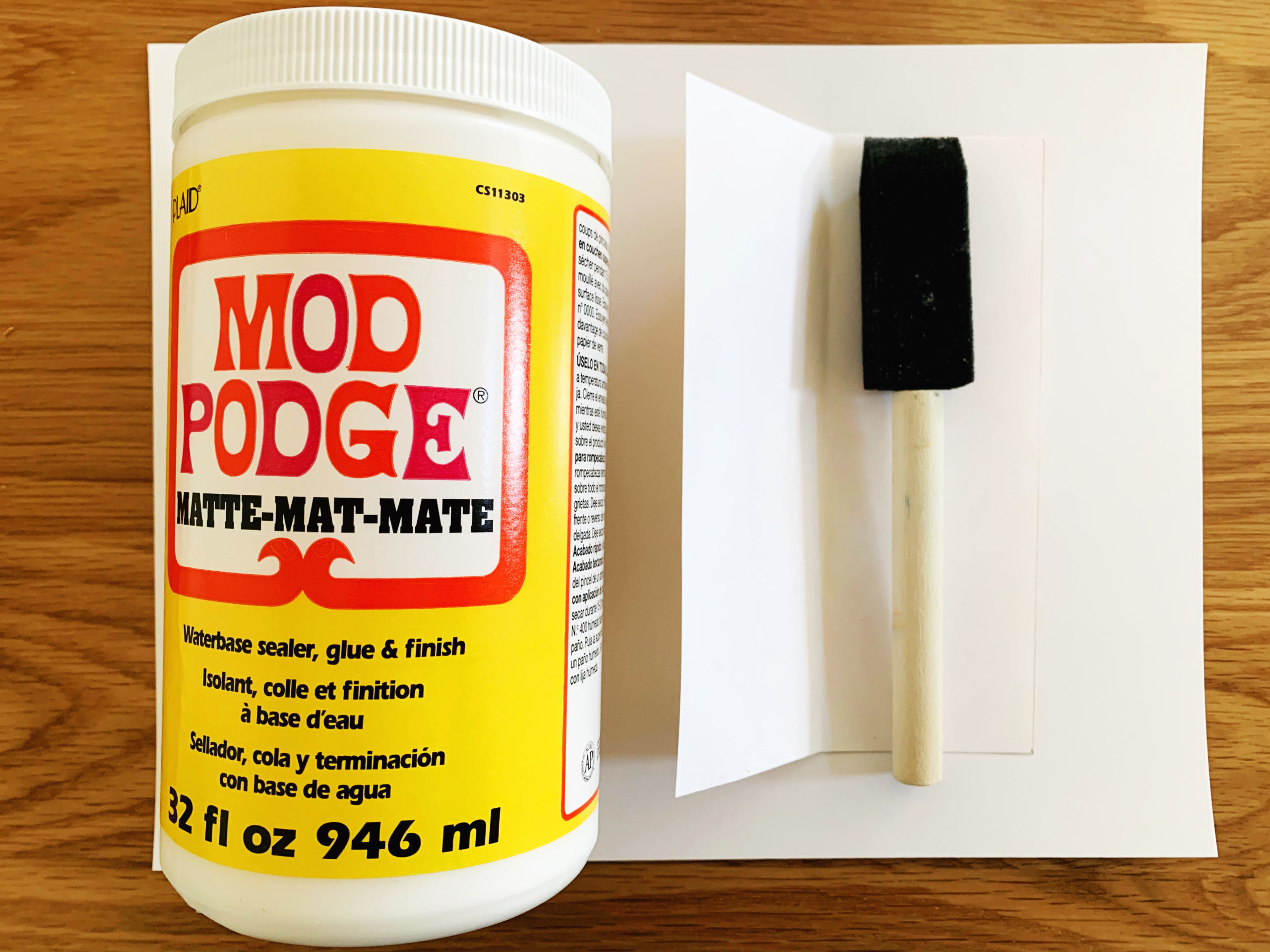
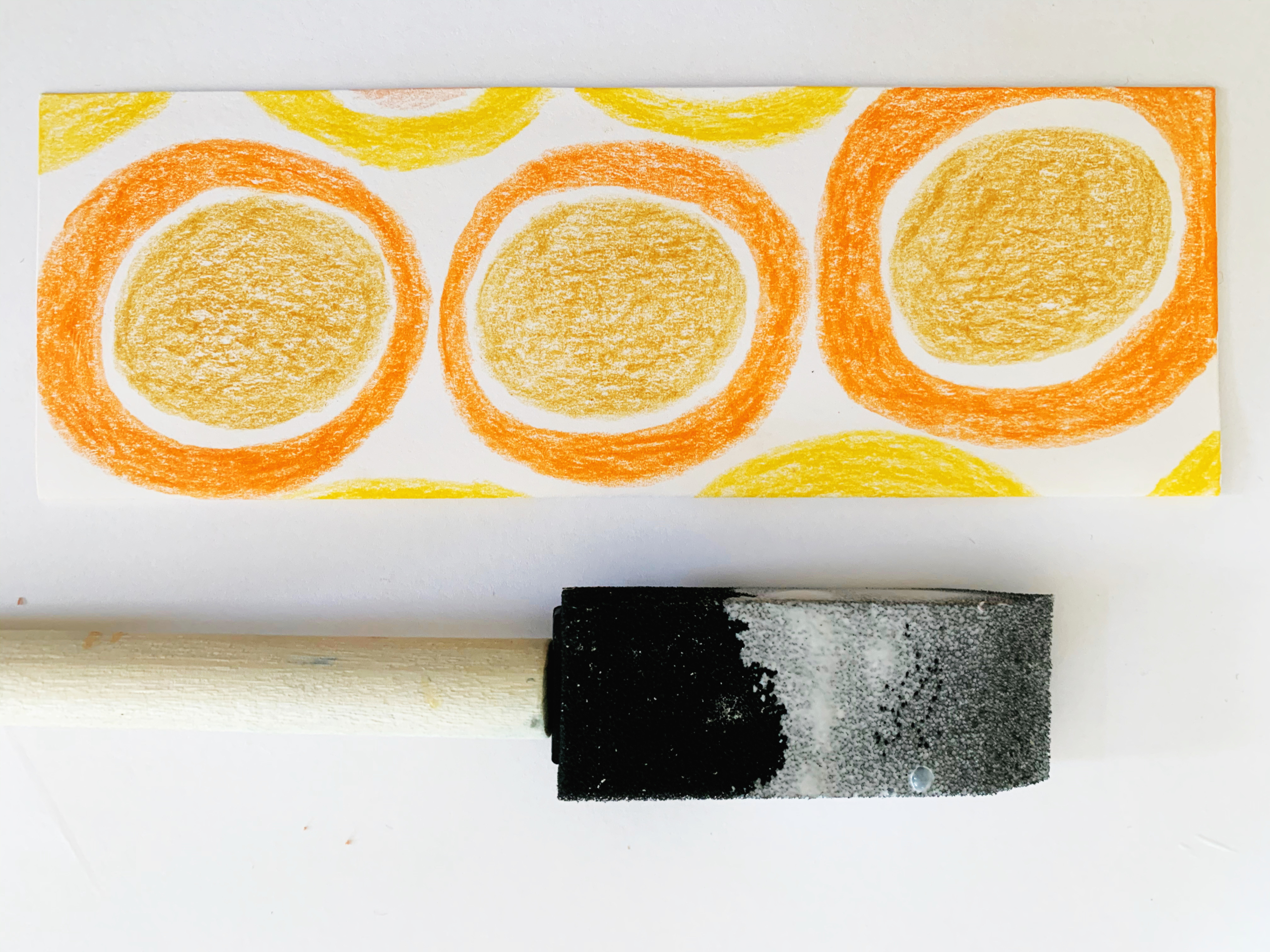
Step Seven: Once it is dry, punch a hole at the top of the bookmark. Double knot the tassel through the hole, cut off the excess yarn and you’re done!
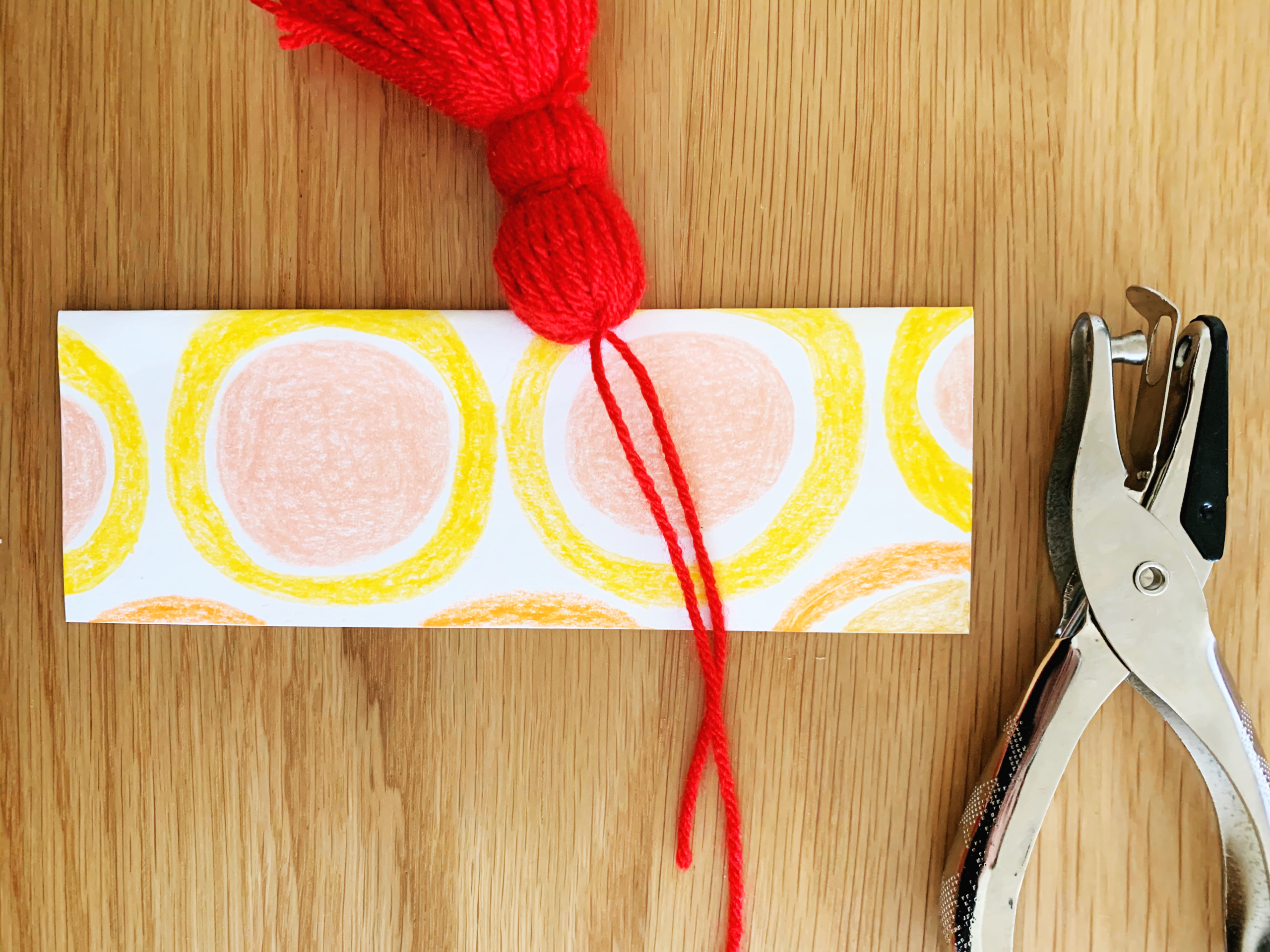

I hope you enjoy making these tassel bookmarks as much as I did! Let us know what book you’ll be using your new bookmark with next. We’d love to know what’s on your reading list!
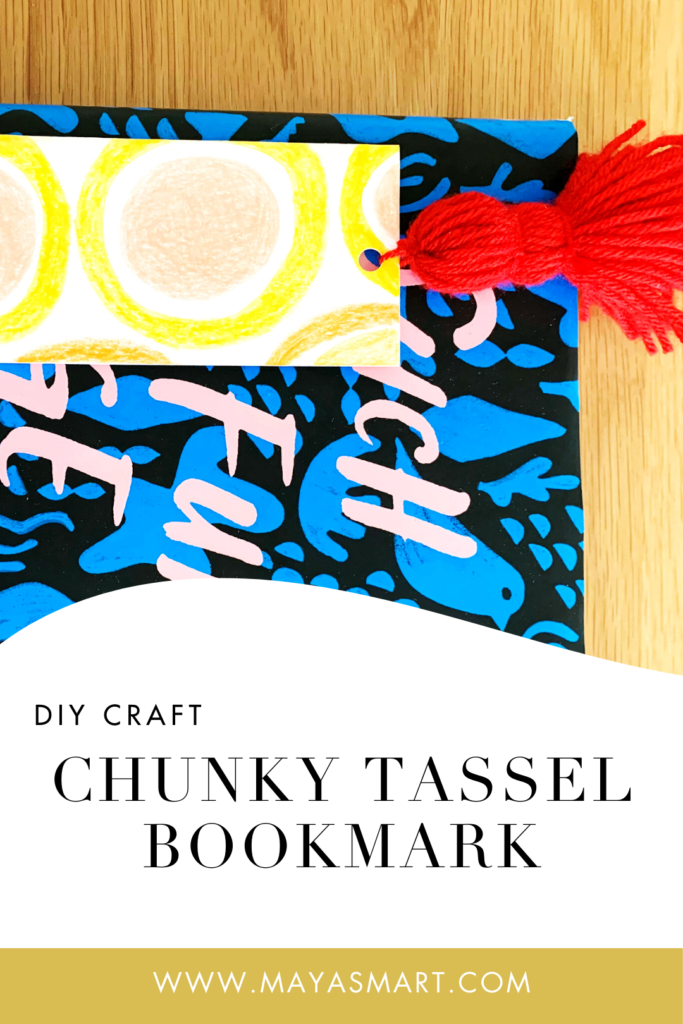
By Karen Williams
We’re witnessing a worldwide movement against police brutality, systemic racism, and oppression against black people in the United States. The protests, inspired by the murders of George Floyd, Breonna Taylor, and Ahmaud Arbery (to name a few), quickly went global, causing a renewed interest in books, art, and other creative works by and about black people in America. Many are seeking to educate themselves about black history and racism in the United States, and black bookstores, previously overlooked and under-appreciated outside of their communities, are winning wider recognition for their long-standing work in this area.
Three Reasons to Support Black Owned Bookstores
- Black bookstores have historically served as safe spaces and community gathering locations, especially for organizing political movements.
In the late 1960s and 1970s, many black bookstores provided families with access to books about black culture, black history, and the growing civil rights and Black Power movement. So much so that J. Edgar Hoover of the FBI encouraged the surveillance of Black independent booksellers.
Even today, African American bookstores continue to support emerging authors, independent writers, and minority owned publishing houses. You’ll typically find a robust calendar of book signings, poetry readings, literacy programs for children, and other events for book lovers of all races to enjoy and explore. - The number of black bookstores is steadily declining in the United States.
Unfortunately, since their peak in the 1970s and 1980s, the number of African-American-owned bookstores has dropped significantly. The advent of online bookstores, widespread internet access and economic challenges are but a few factors contributing to this disturbing trend. Buying from black-owned bookstores is one way to show your support for black-owned businesses and entrepreneurs striving to leave a cultural legacy in their communities. - You’ll find a wider selection of titles from Black authors, including independent writers and books from small publishing companies.
Depending on the book title and subject matter, you might have to search a little further than Amazon or your local chain bookstore to find lesser-known reads by and about African Americans.
During the American Booksellers Association’s 2020 Winter Institute keynote event “Bookselling and Liberation: Black Bookstores in America, from the ’60s to the Present,” Judy Richardson of the Student Nonviolent Coordinating Committee (SNCC), explained how a book sales rep visiting her store was shocked to discover that she was in a black bookstore and that the book selection differed so greatly from what she typically encountered.
Black owned and independent bookstores are among America’s greatest cultural treasures, and supporting these businesses is just one small way you can support the black community and stand in solidarity for equality.
77 Black Bookstores to Support Today
Click here to view a full list, including website and social media details.
House plants are great for greening your living space—they can even purify the air. Succulents are about as easy as they come, and hardy enough to let kids take the lead in caring for them. So why not add a touch of life and lit to your home with this DIY book craft planter?
Use them as decorative accents or feature them on a minimalist shelf or end table. Wherever you place them, this creative upcycled book craft will add a charming and unique touch. This project is easy to make, will last a long time, and can be a fun one to do with kids, provided you do the cutting for them.
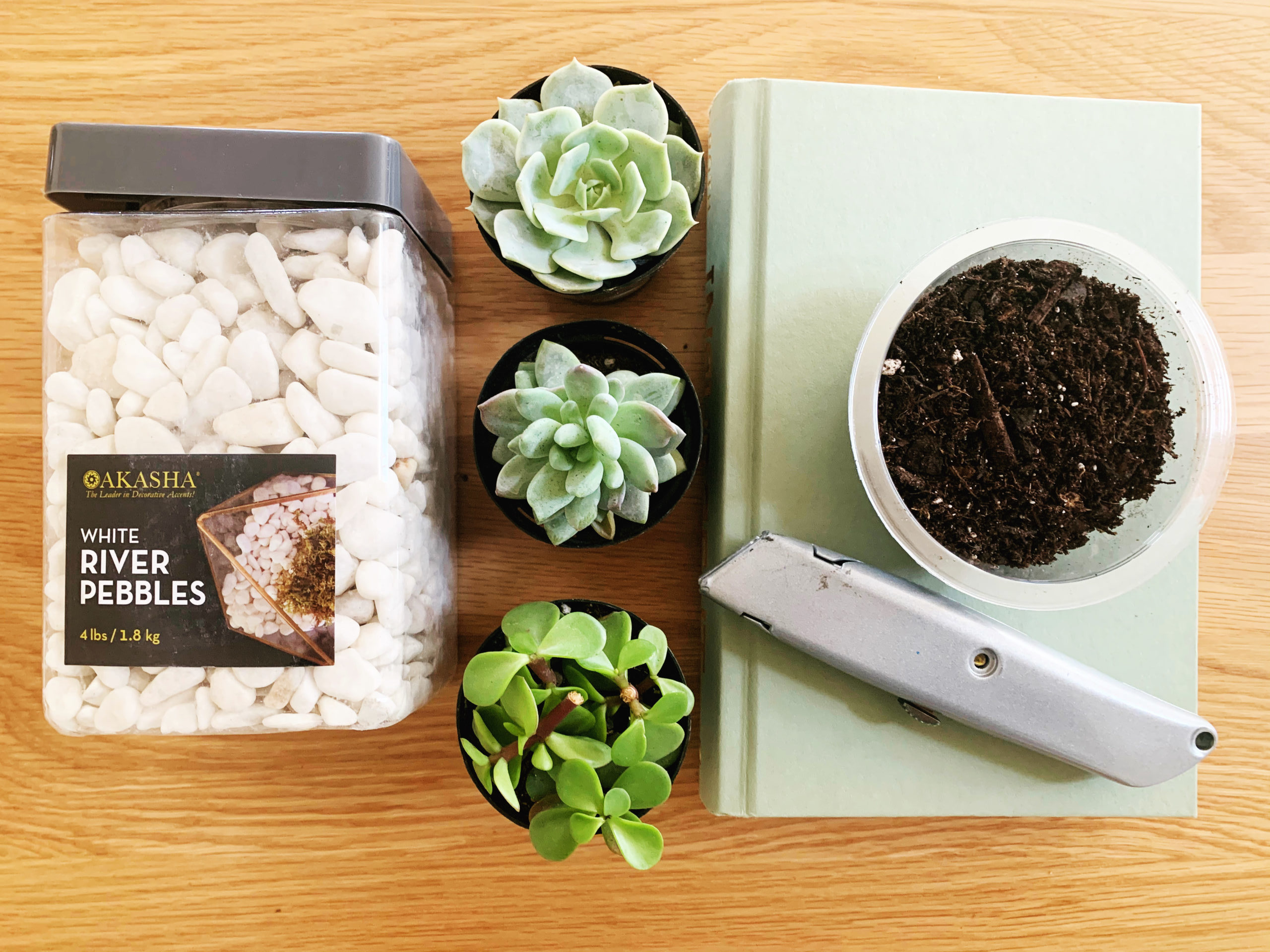
Materials:
- Hardcover book
- X-Acto knife
- Plastic container(s) no taller than the book is thick (use one or a few)
- Rocks
- Soil
- Succulents
Cost: This project should cost you around $20 if you have to purchase materials. But if you’re looking for a way to re-pot some succulents and already have an X-Acto knife, you may be able to gather and upcycle the materials for this craft at no cost!
Step One: The first step is to carve out a rectangle in the middle of the book with your X-Acto knife. This does not have to be perfect! You will be covering the top with rocks at the end and you won’t even be able to see the inside pages once this is done, so don’t worry if you can’t get a clean cut. I found it worked best to cut the rectangle out of the cover first, and then work in sections to cut further into the pages of the book. Don’t cut all the way through all the pages before checking the depth with your containers (step two).

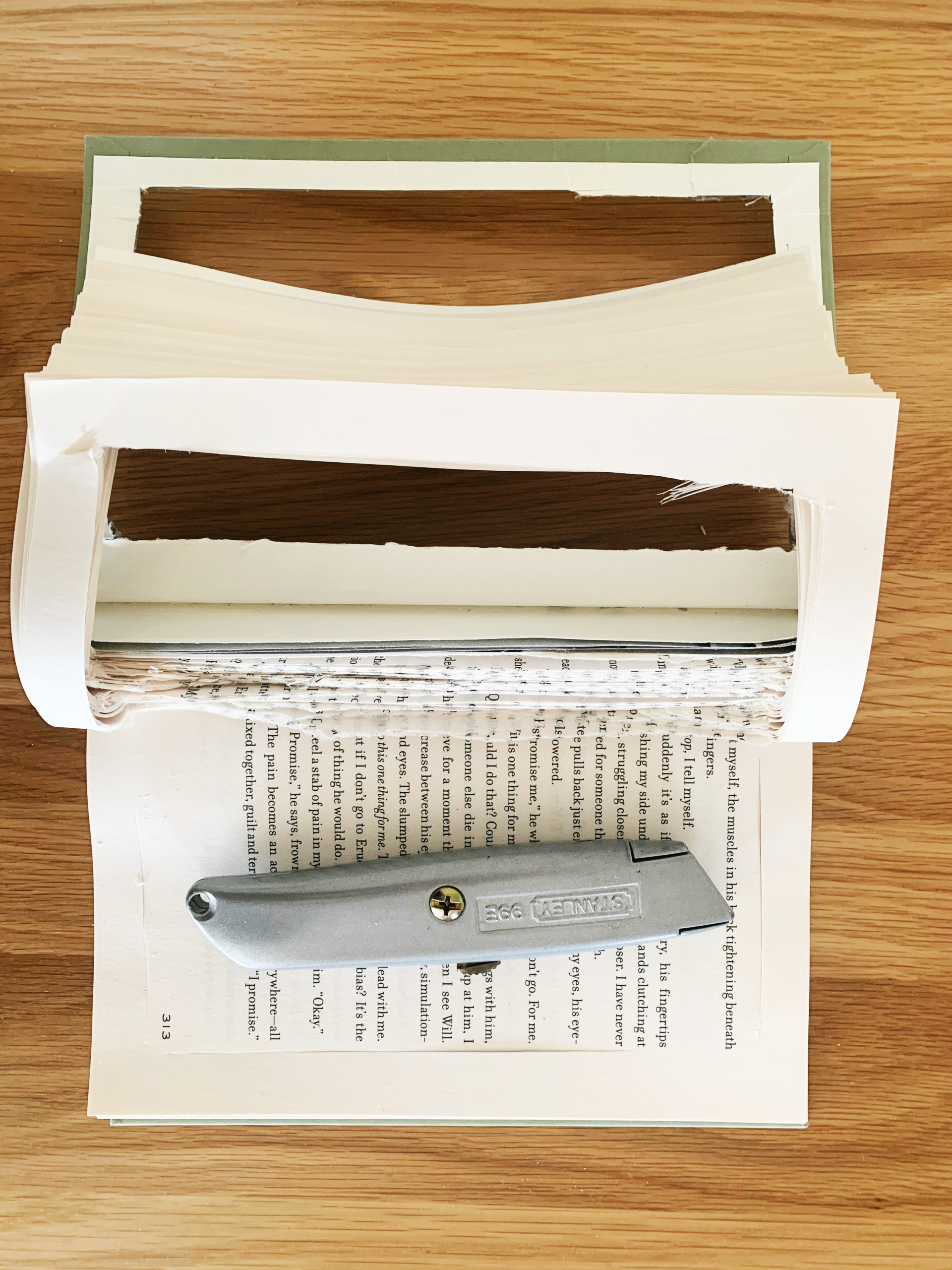
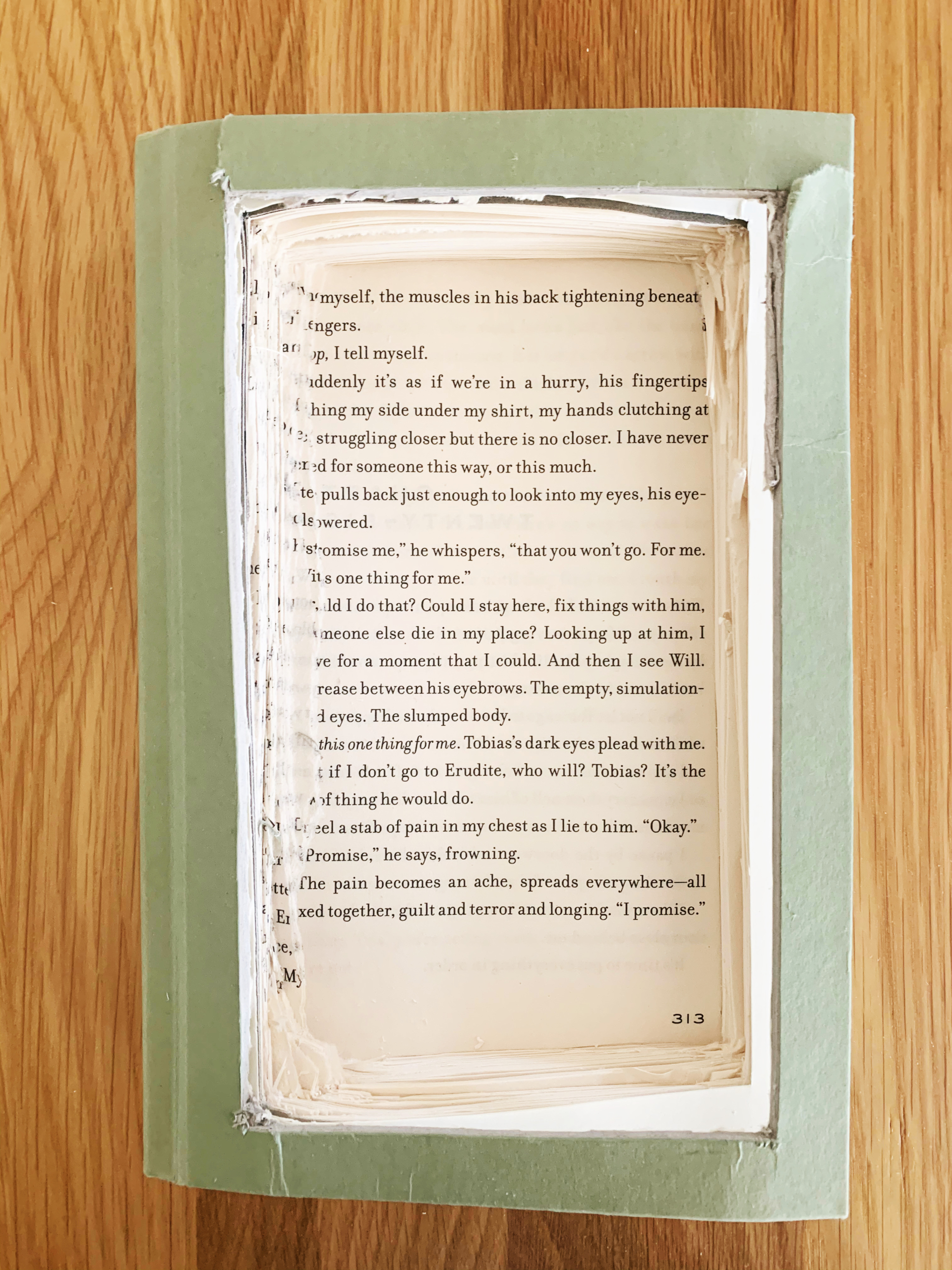
Step Two: Test the depth with your plastic container. You want the height of the container to hit a little below the cover of the book. Cut away as many pages as necessary. This will differ depending on the thickness of your book and the plastic container(s) you use. You can easily reuse plastic containers for this step! I found some that were the right height but small enough that I needed to use two, but you can also just use one larger container here.

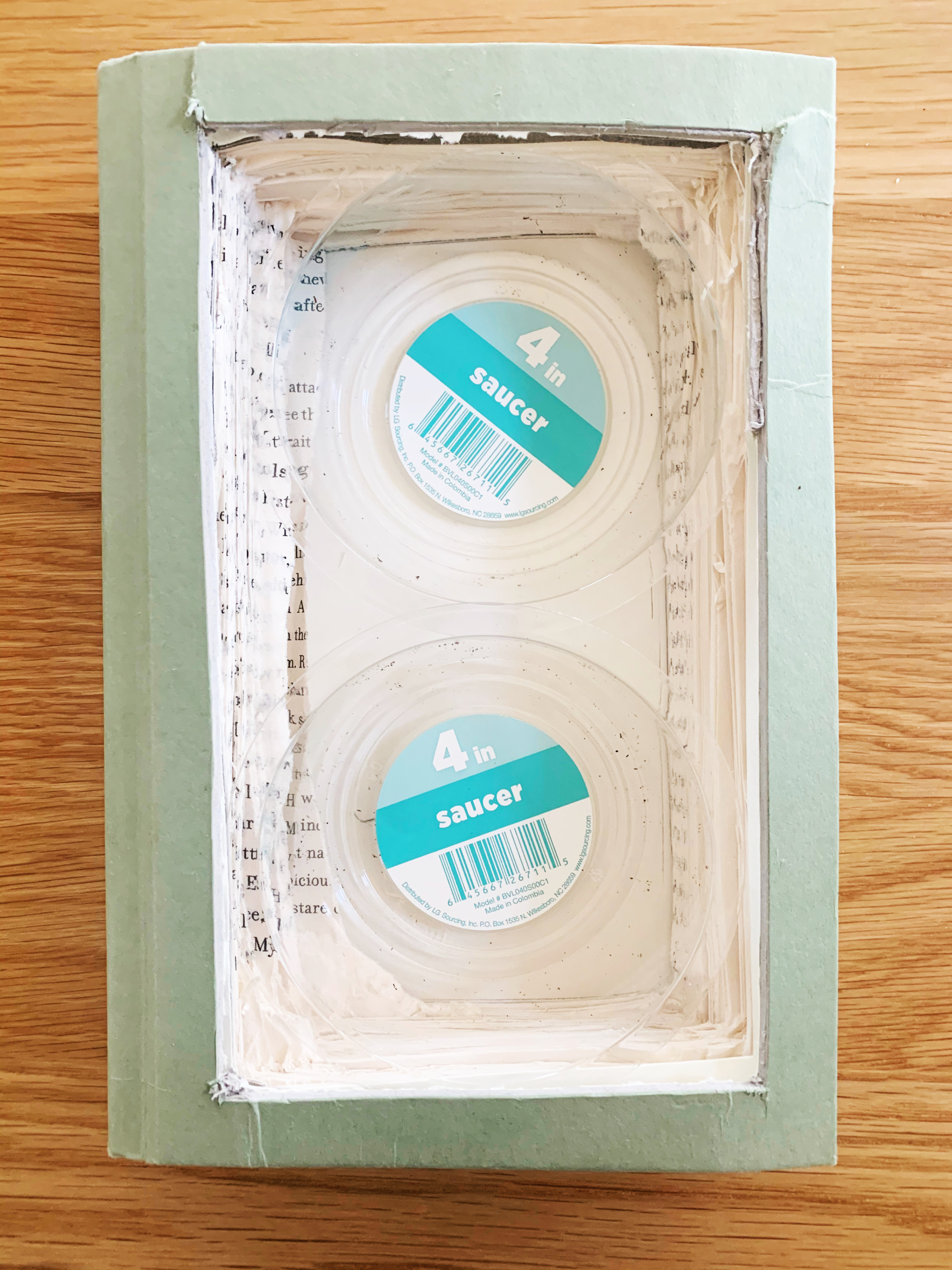
Step Three: Layer the bottom of your container(s) with rocks. This is a gardening tip! Because our containers won’t be draining out excess water, this step will keep the succulents very happy! Having rocks at the base lets water drain through the soil and collect here, so we won’t overwater our succulents by accident.
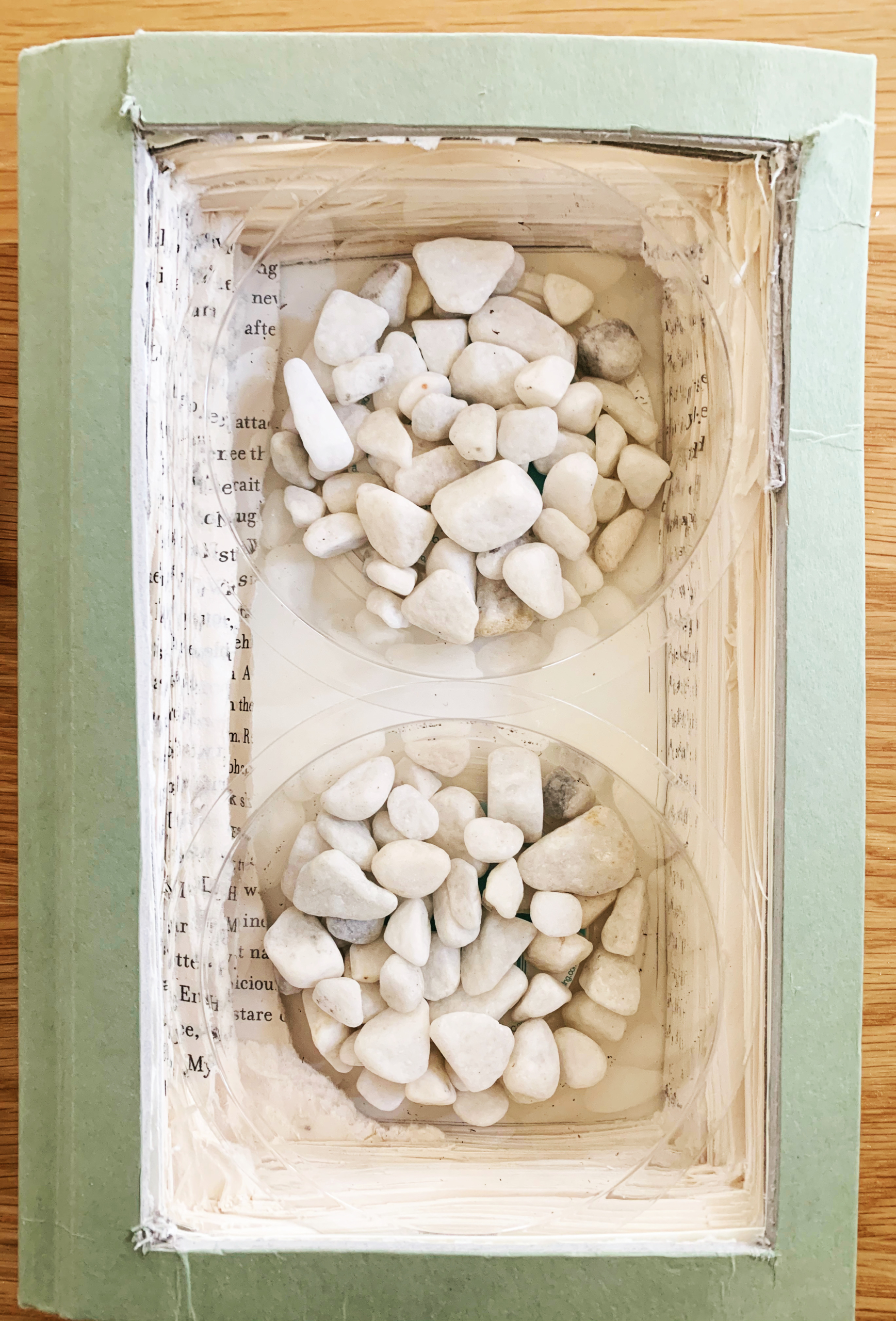
Step Four: Now just add soil over the rocks and plant your succulents.
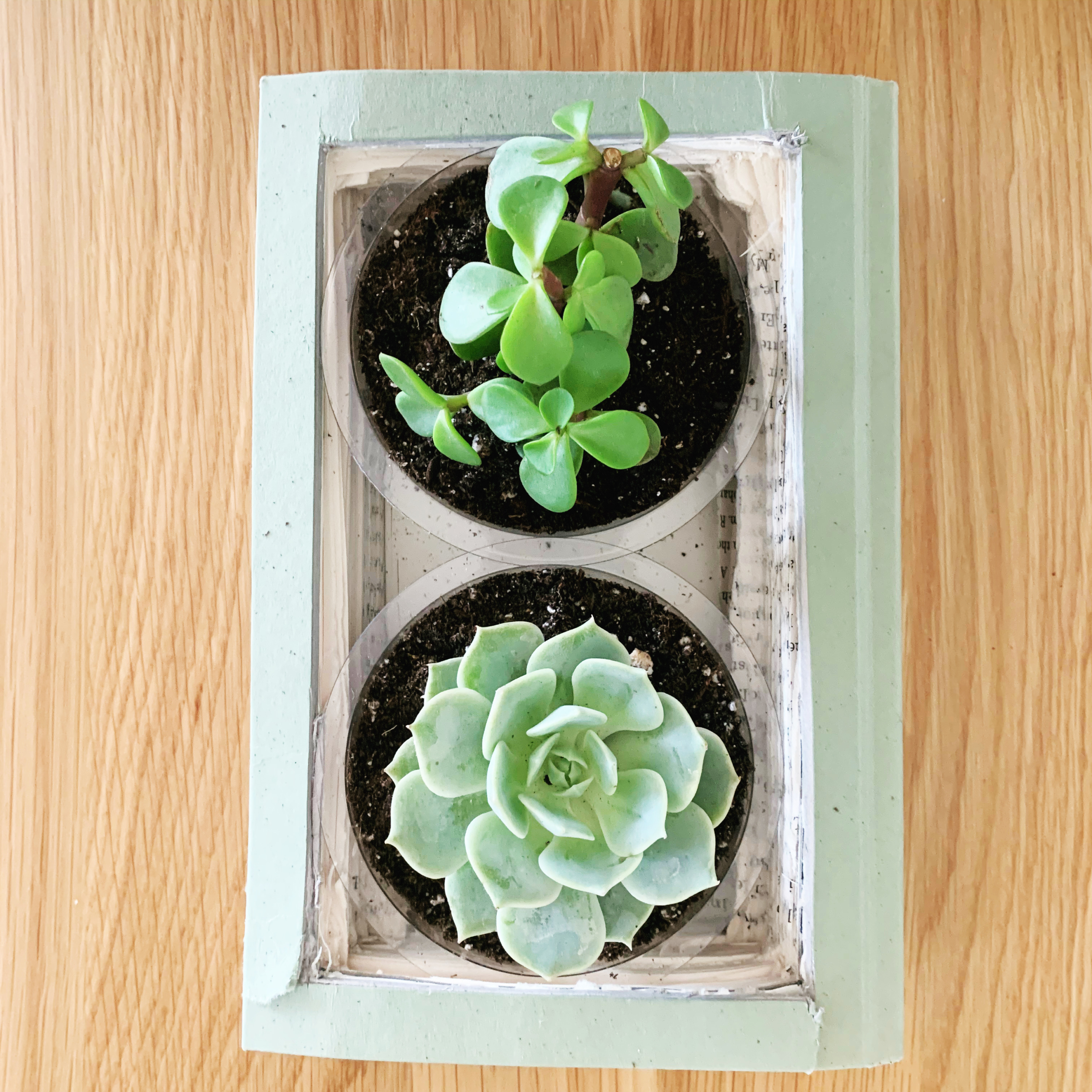
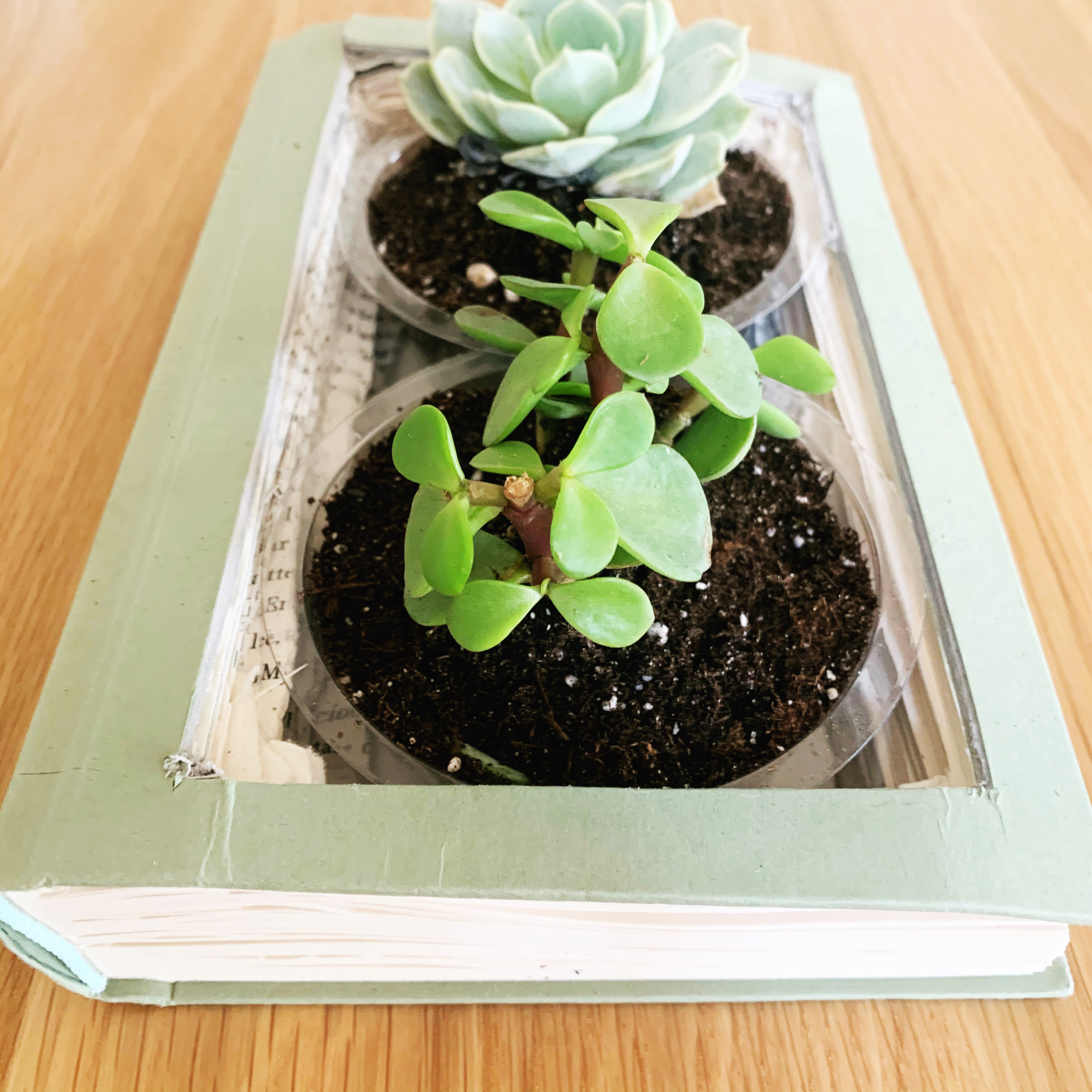
Step Five: Use your remaining rocks to cover the soil and fill in around the container(s) to the edge of the book. This final step adds the perfect decorative touch to your book craft planter!
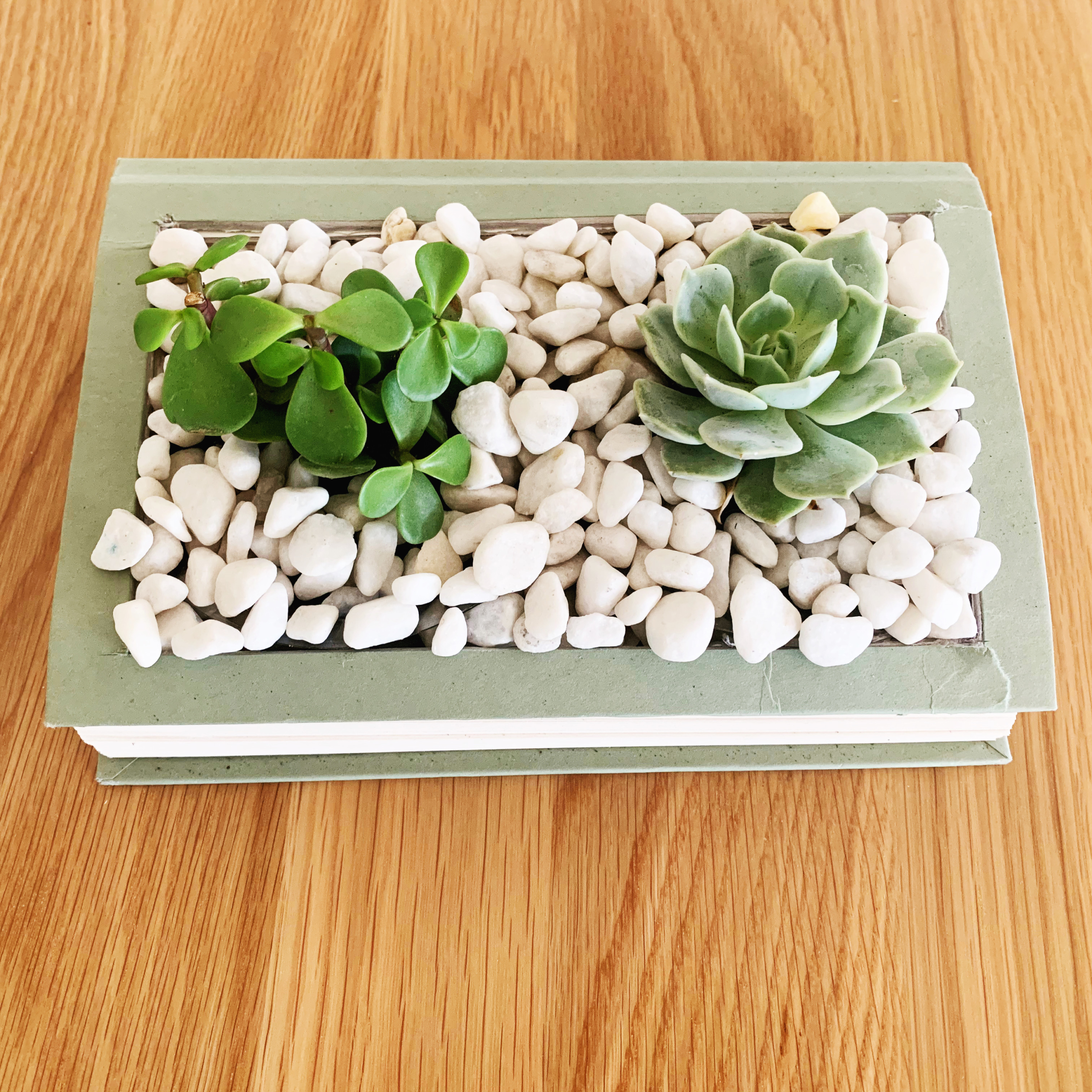
Now it’s time to find your succulent garden a new home and enjoy! You can even make a few to use around the house, or as centerpieces for your next festive meal.
Kelsey Nickerson creates abstract paintings with rich color, texture, and movement, and enjoys a good book craft. She oversees web production and photography for MayaSmart.com.
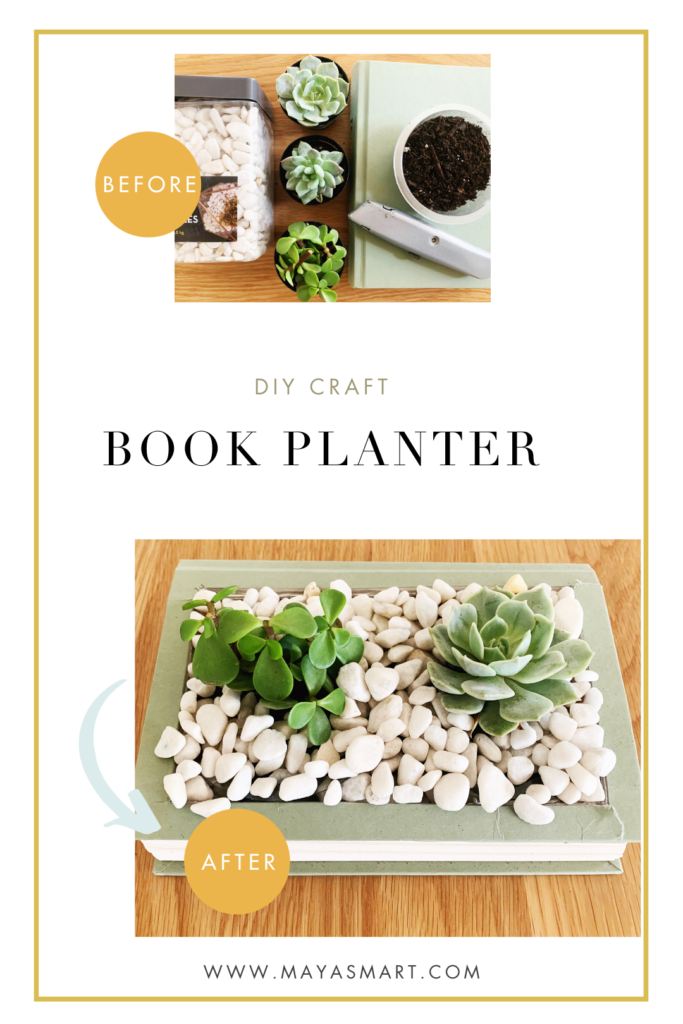
By Maya Payne Smart
In reading, as in conversation, it’s not just what we say, but how we say it that matters.
The rhythm, pitch, and intonation someone brings to spoken words can convey meaning far beyond basic definitions. A shaky utterance might indicate fear or uncertainty. Changes in the pitch or speed of speech might accompany a compliment, signal anger, or communicate disappointment. Facial expressions and gestures, too, bring layers of interpretation and significance to text.
Reading fluency is the ability to read a text smoothly with rhythm, expression, and appropriate emotion, and it is a critical literacy skill. Its presence is a telltale sign that a child grasps the meaning of the words they’re reading and can convey their larger sense to others.
But this kind of rhythmic, expressive reading doesn’t just spring naturally from kids’ lips. It’s something that they learn by observation, through conversation, and from instruction.
Hearing parents and others reading aloud models it for kids. But caregivers should go a step further and engage in conversation with kids about how we can use our voices to communicate, by adjusting our tone, pace, and volume accordingly. Such discussion can awaken kids to their vocal power.
Beyond talking about expression, you can teach fluency and provide opportunities to practice it through a range of songs, games, and activities, including wordless picture book “readings.”
Check out a post by Jessica “Culture Queen” Hebron about how to use wordless picture books to teach reading fluency concepts.
We’ve all had them: those weakly bound paperback books that fall apart after a few readings. Upcycle the pages from those unsalvageable reads into these cute origami butterflies. You can string them along a garland, sprinkle them over a table or shelf-top, or perch them in a houseplant or festive tree. What a fun way to celebrate nature and reading!
This DIY book-page craft is easy once you get the hang of the folding, and a fun project to do with kids. I’ve broken down the folding into easy-to-follow steps below, with pictures of each step. So, go ahead, get your pages and get crafting!

Materials:
- Pages from obsolete books
- Scissors
- Ruler
- Pencil
- Colored pencils or markers
Cost: This craft should not cost you anything! You can always add to your butterfly collection, so save outdated books or falling-apart paperbacks, and reuse the pages for this sweet little craft.
Step One:
Trace squares from your book pages (each square will make one butterfly). I decided to make my squares 4” x 4” inches, because that was the width of the text on my page, but you can really do whatever size you would like. Just keep in mind, the smaller the square, the trickier the folds can be. For younger kids, make the squares as large as possible.
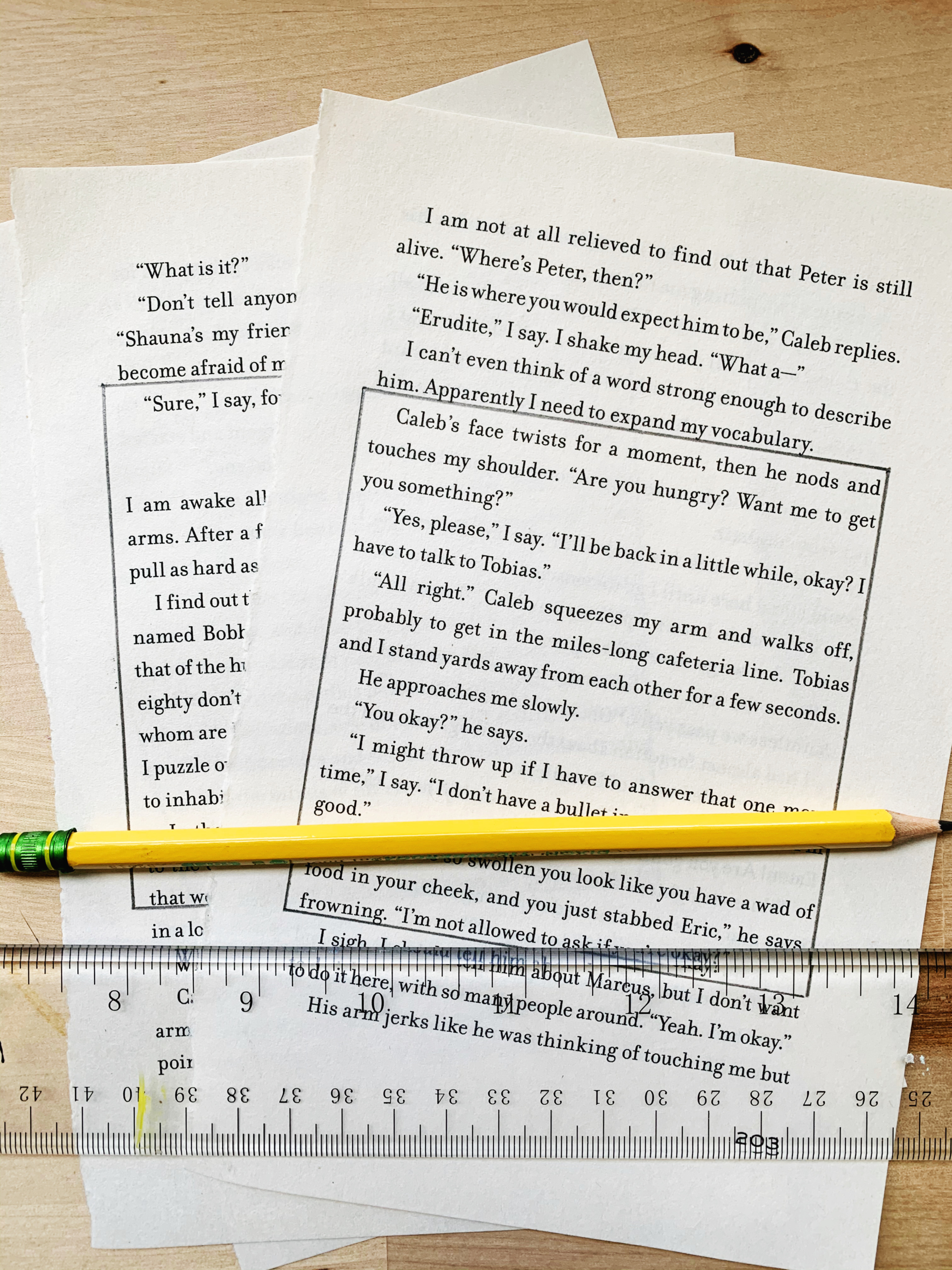
Step Two:
Once you have your squares traced on the book pages, go ahead and cut them out.
Optional: You can opt to color the pages at this point with your colored pencils, if you’re ok with a random pattern once they’re folded. (See Step four below.) Coloring before folding is a great adaptation for kids.
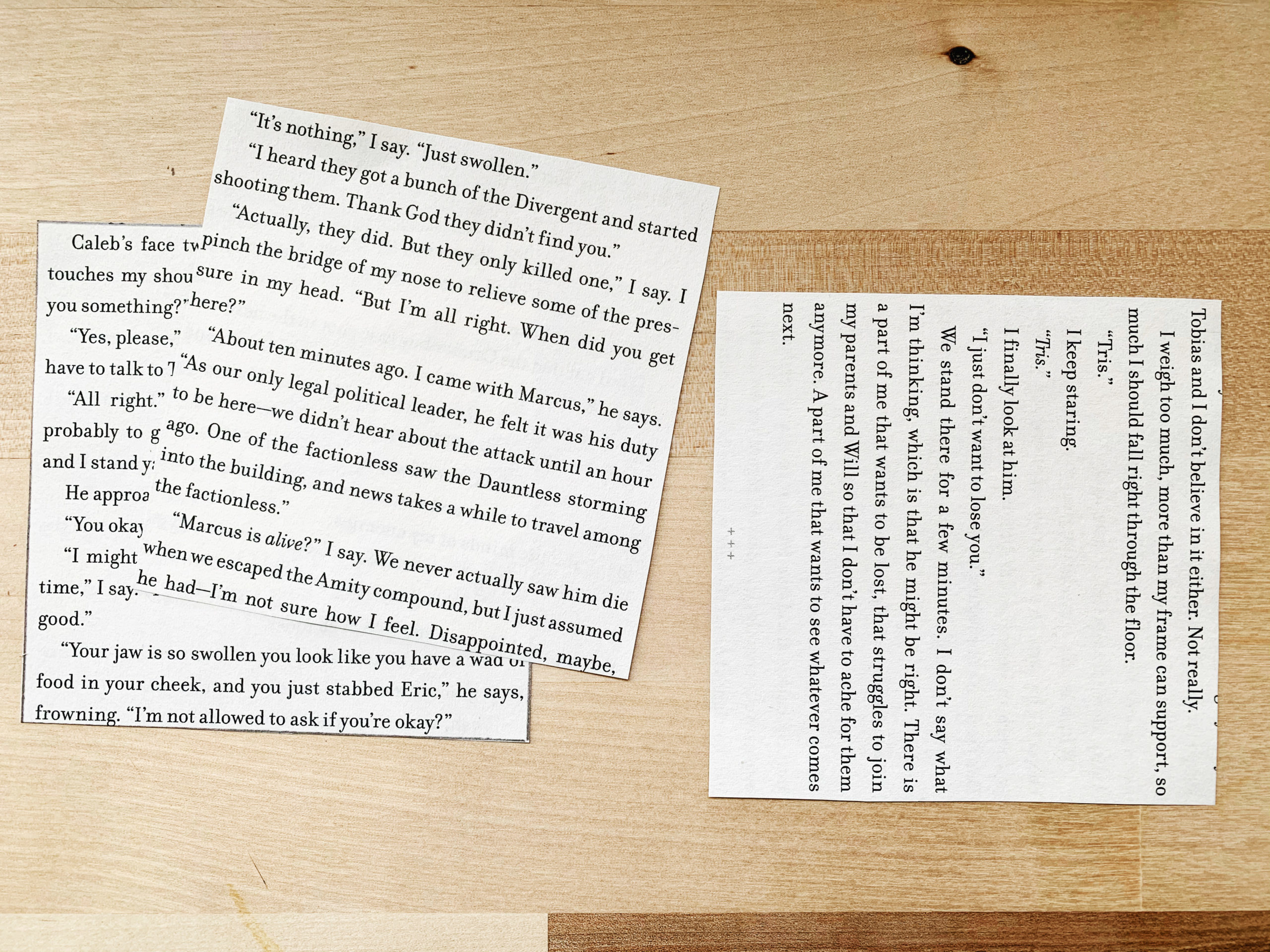
Step Three:
Now comes the folding! I am going to break this down, step by step, so just follow along! Be sure to crease each fold very well.
1. Fold your paper in half and crease it.

2. Now unfold it and then fold it in half the other way, creasing again.
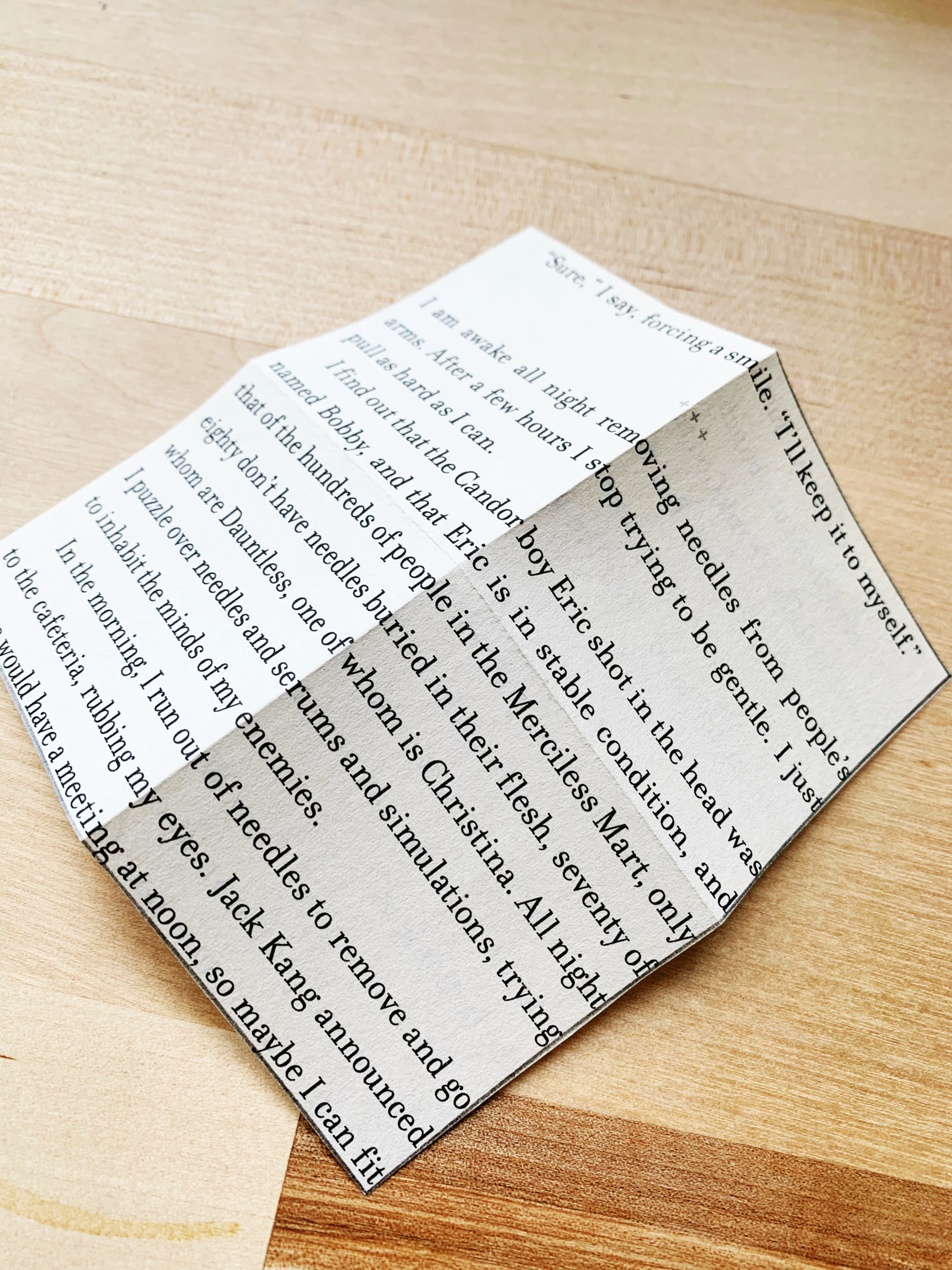
3. Unfold, then fold it diagonally and crease.

4. Unfold, then fold and crease diagonally the other way. At the end of this step, you will have 8 little triangles from the creases of your folds.
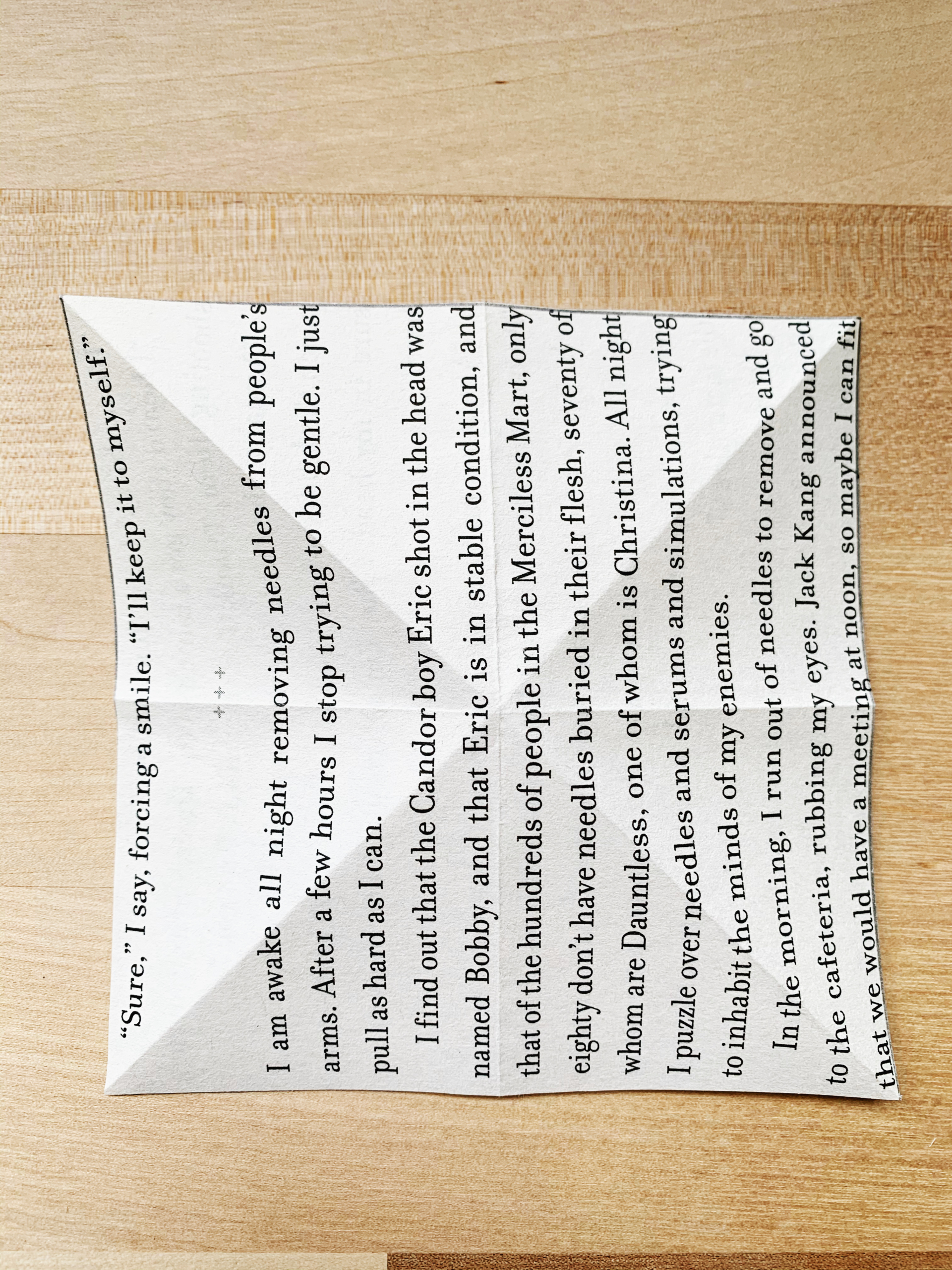
5. Next you will fold the center folds inwards to make a triangle. I think that this was the hardest fold, but the more you crease the previous folds, the easier this step is. You basically want to pinch and push two opposing triangles towards each other. It takes a minute, but you can do it!

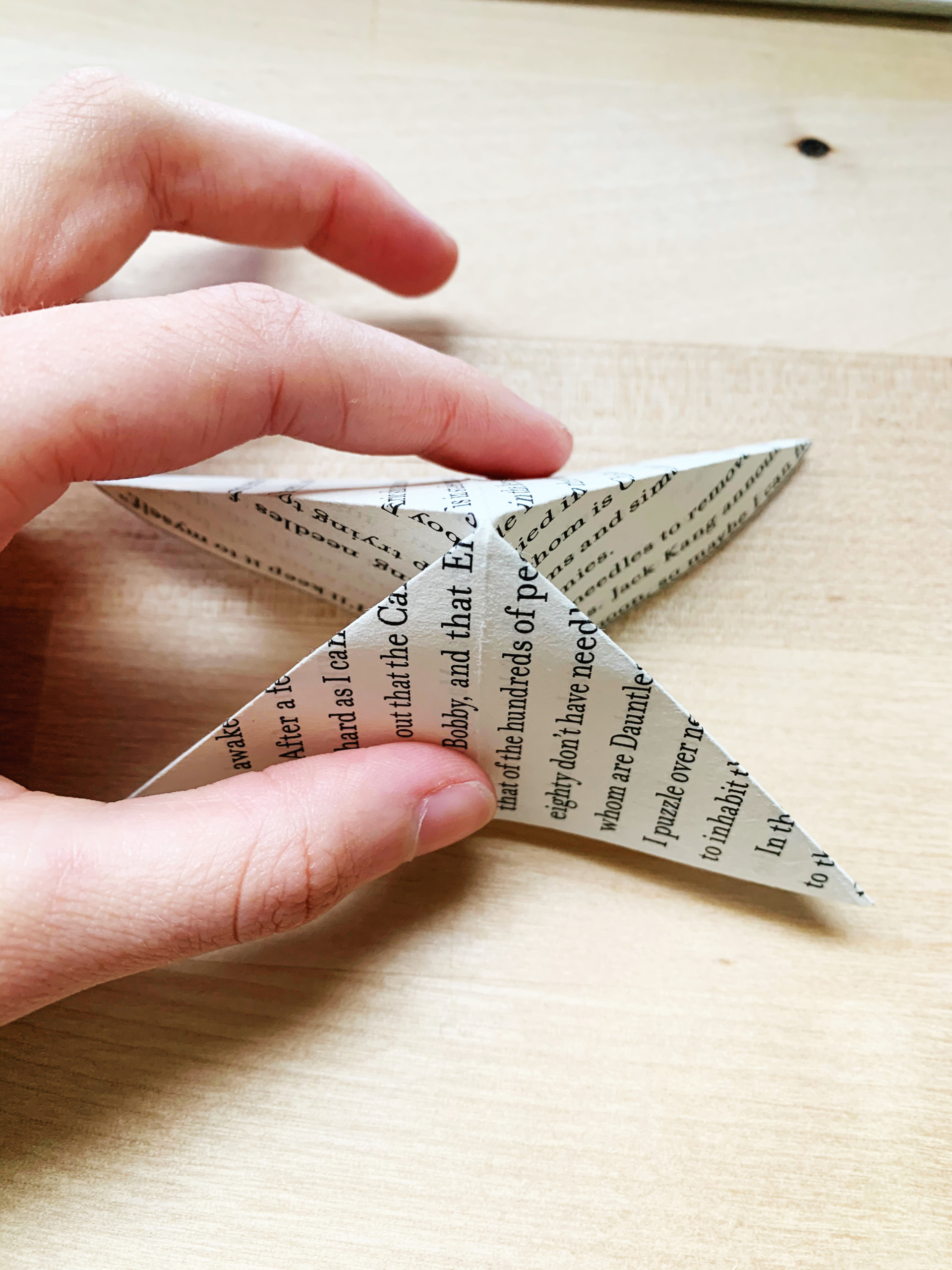
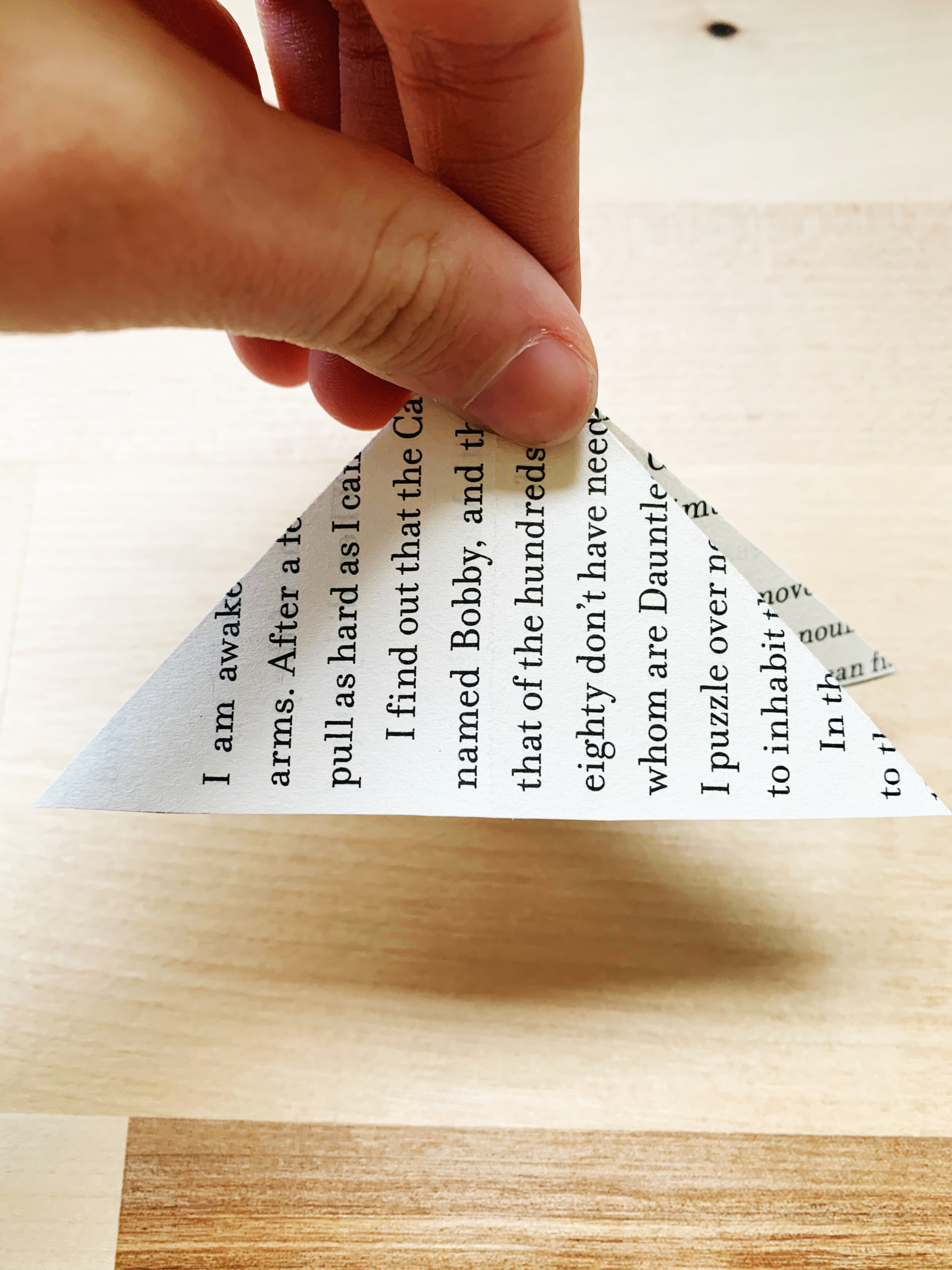
6. Laying your triangle flat, fold the corner of the top layer up to the point of the triangle.

7. And now fold the other corner to also meet at the point
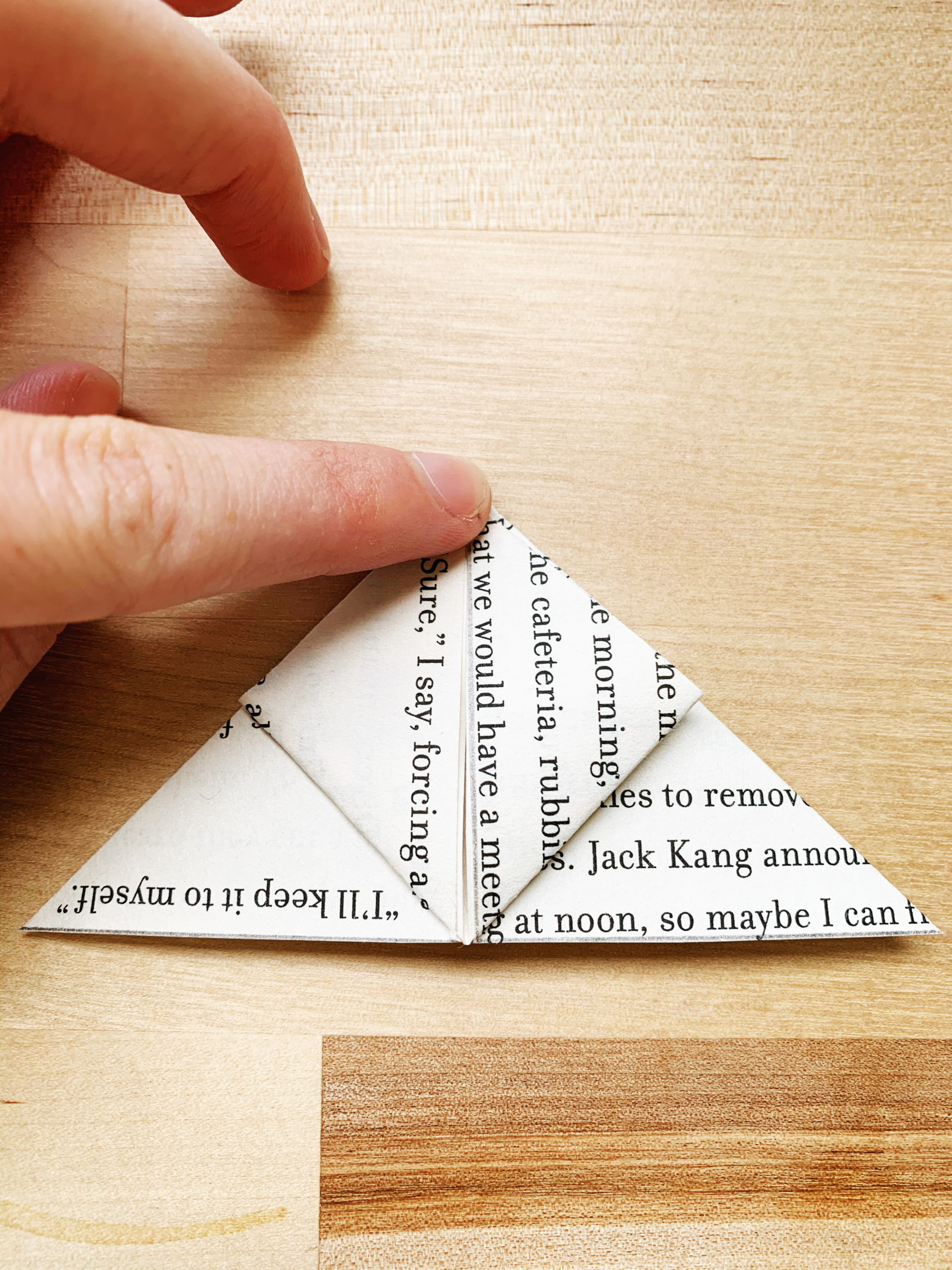
8. Now flip it over. You’ll be doing almost the same thing on this side, but this time fold the corner up to a point above the base, and crease just the center of the fold, leaving the edges uncreased.

9. Flip and fold the little triangle point over the top.
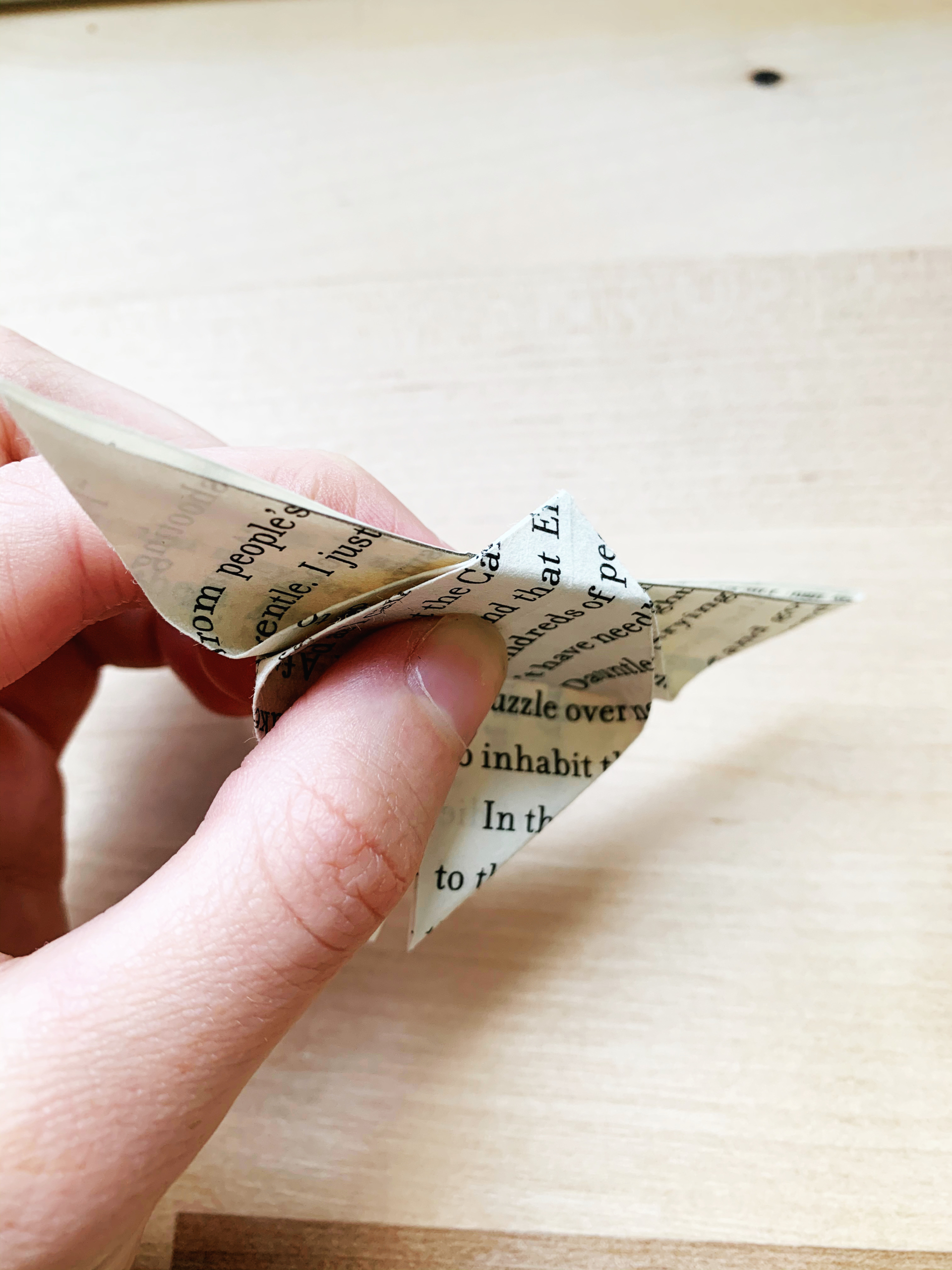
10. Lastly, pinch at the center, so the two top wings meet each other and crease the bottom so your butterfly can keep its form!
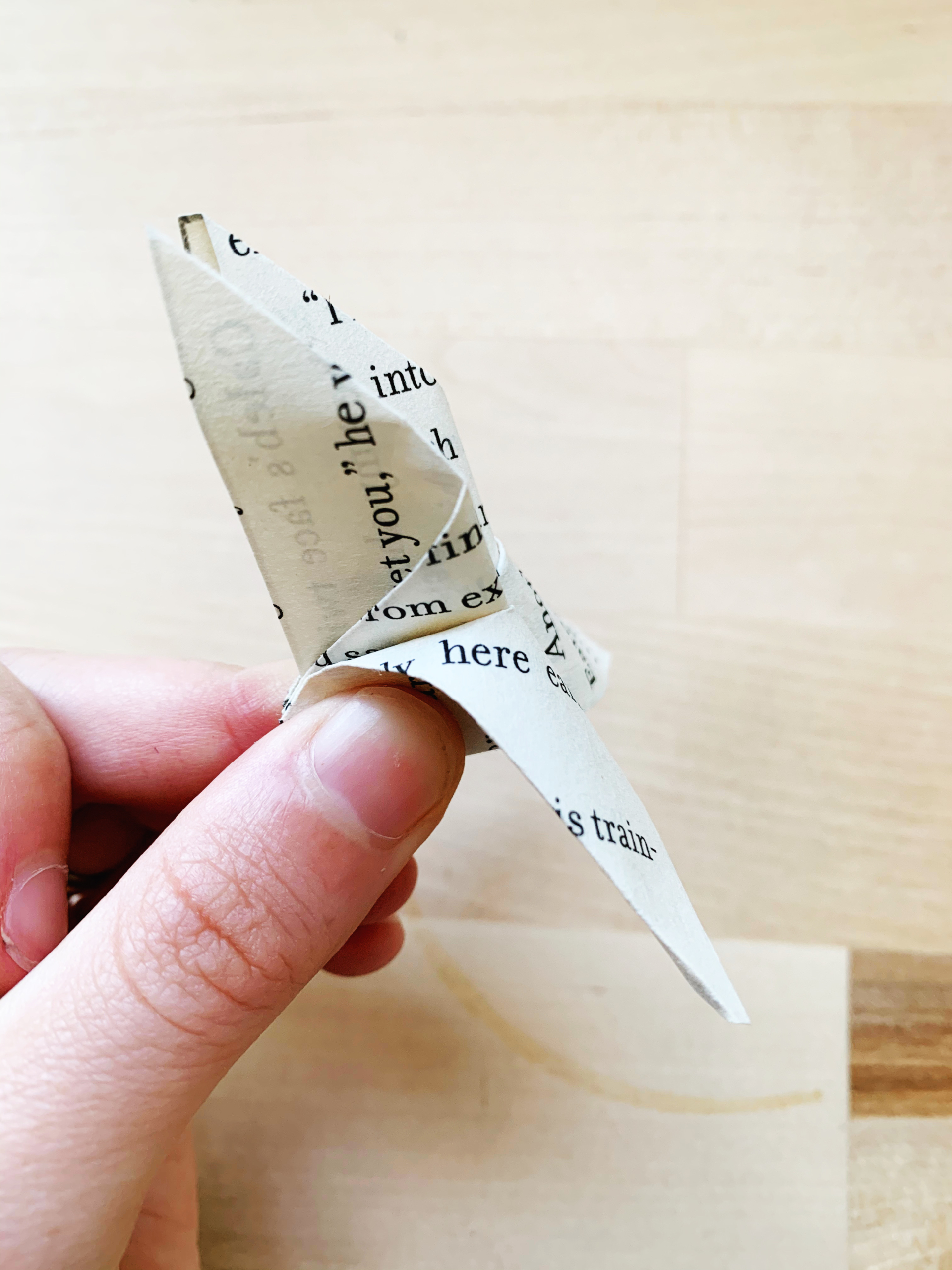

Step Four: If you didn’t color your butterfly before folding, this is the time to give your origami butterfly some life! Using colored pencils, color in the butterflies’ wings. You can look at some inspiration from your favorite butterflies, or just make up your own!
Note: If you want to keep the natural beauty of your book pages, you can also skip this step and decide not to add color to your butterfly. The simple text can be just as pretty!
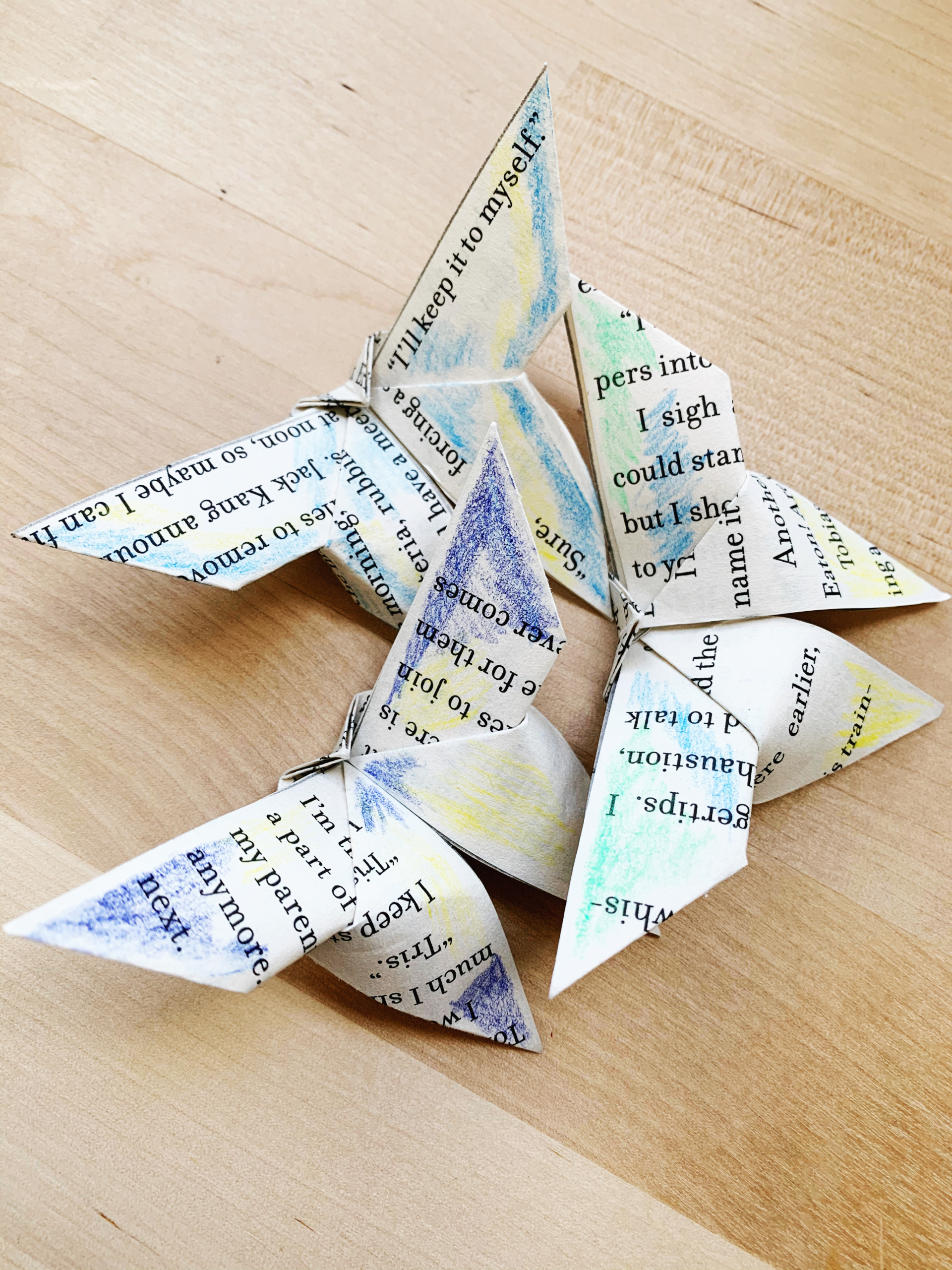
Now all that is left to do is find a home for your fluttering friend and enjoy! How will you display your butterflies?

This cute twist on the classic apple-for-the-teacher theme creates a decorative apple from upcycled book pages. Help kids make them as teacher appreciation gifts, or to decorate their home “classroom.” You could even scale down the size and turn them into ornaments that can hang along a garland or off a tree.
This DIY book craft is inexpensive and fun! Ideally, you’ll use an exacto knife and hot glue gun, so be aware that you’ll need to do those steps for younger children. (You can adapt to use just scissors, but it will be more time-consuming.) The youngest children can help with this project by coloring the leaf, gathering a twig for the stem, helping paint the edges of the apple, and fanning out the pages.
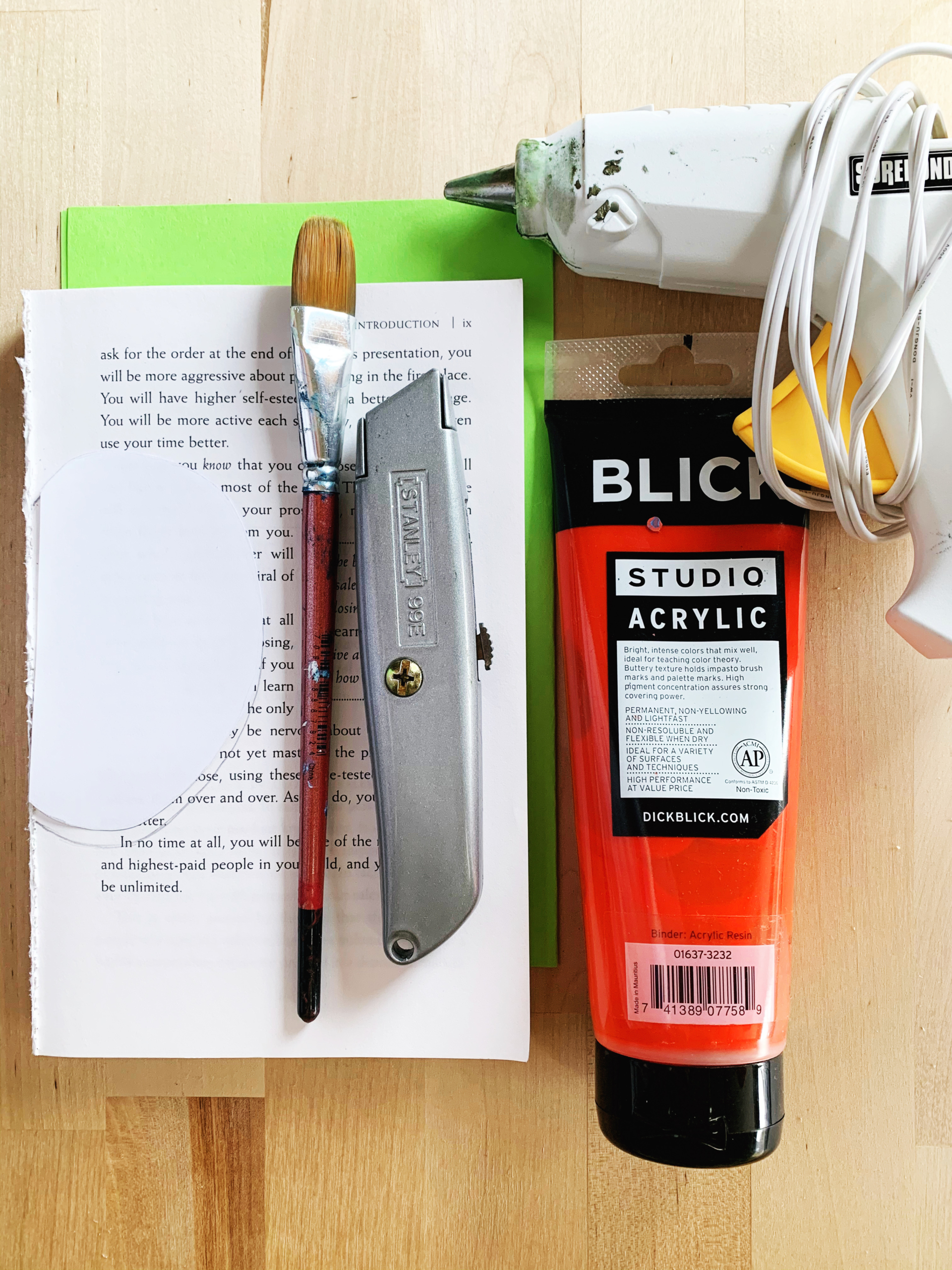
Materials:
- Paperback book with a sturdy spine (no falling-apart paperbacks)
- Glue gun & glue sticks
- Exacto knife
- Scissors
- Red paint & paint brush
- Green cardstock paper, or stiff paper colored green
- Twig
- A template of half an apple (see step one)
- Pencil for tracing
Cost: If you already have a glue gun, this craft should not cost you anything! Upcycle an obsolete paperback book, and send kids on a little scavenger hunt to find the perfect twig. If you don’t have green cardstock for the leaf, just color or paint a scrap of stiff paper green instead.
Step One:
First, you’ll need to create your template of half an apple. The best way is to print or draw a template of a whole apple of the size you want and then fold it in half. (This template is a good one.) You want to be sure there’s a straight, perpendicular line marking the half (which will form the core of your apple). Then cut out your template for tracing. If you like, you can paste your paper half-apple onto cardboard or cardstock to make the tracing easier, and then cut that out.
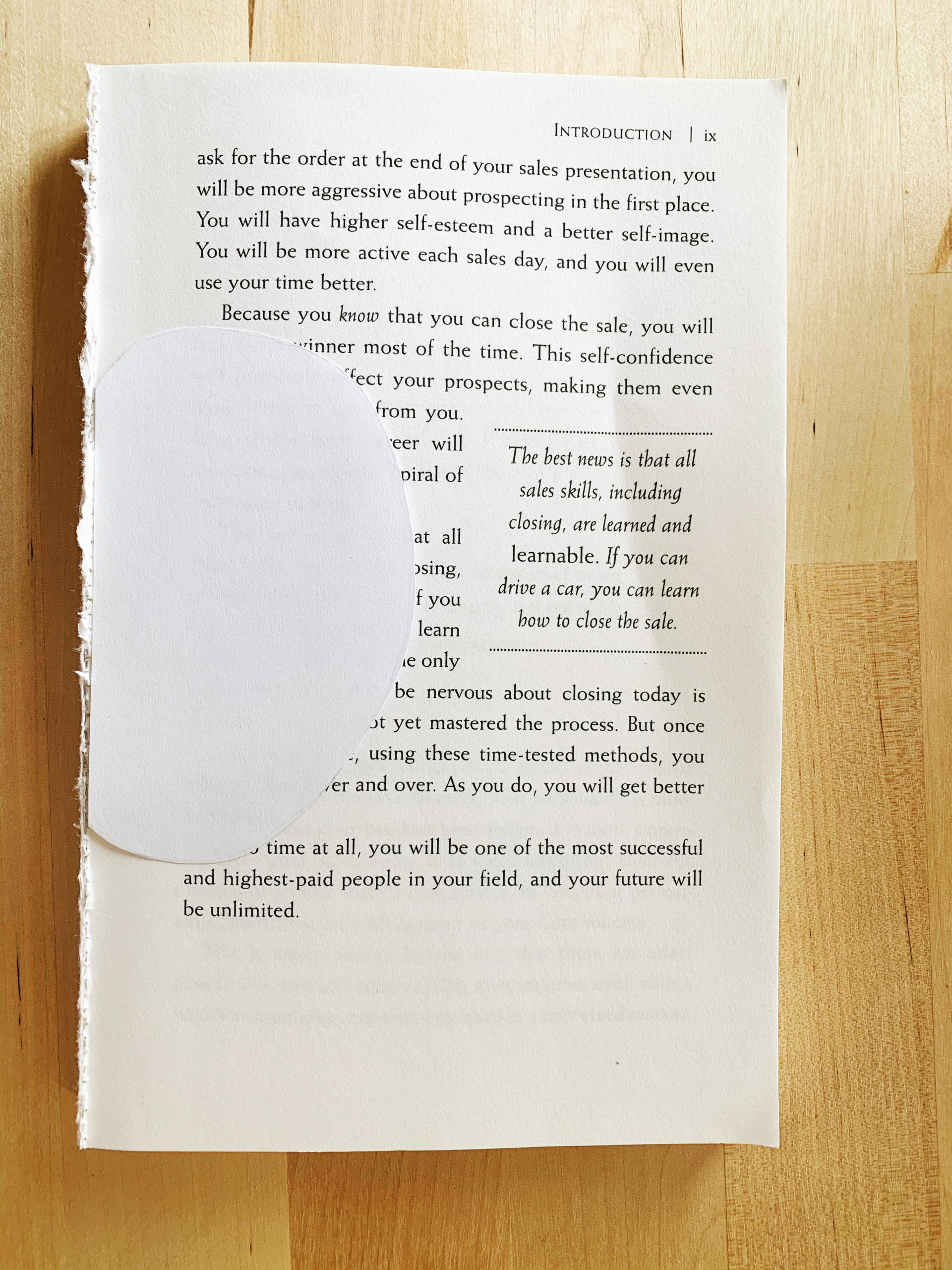
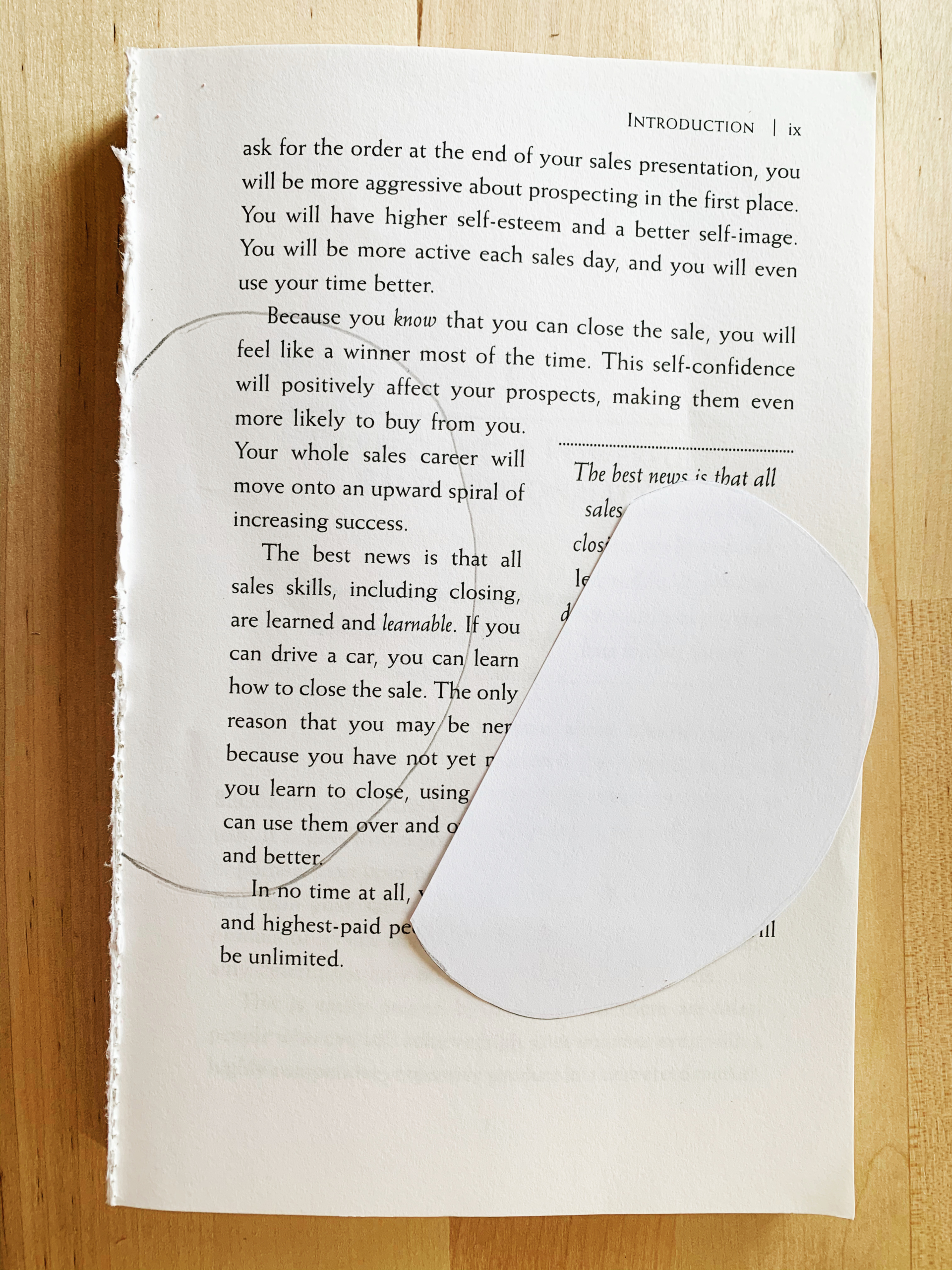
Step Two:
Remove the book’s cover, then align the flat edge of your template with the spine of the book and trace it onto the first page.
Step Three:
Use an exacto knife to cut out the half-apple shape that you just drew on the page. You will want to apply a little bit of pressure here, so as to cut through several pages of the book at once. Then simply remove the excess and cut around the shape to cut more pages. Repeat this process until you get through the entire book.
This step was a little trickier than I expected it to be, but just be patient. If you make a little mistake it’s totally fine! When all the pages fan out in the end you won’t be able to tell, so just keep going!
Note: If you don’t have an exacto knife, you can use scissors to cut a few pages of the book at a time. In this case, you’ll need to keep tracing the template onto the next set of pages.
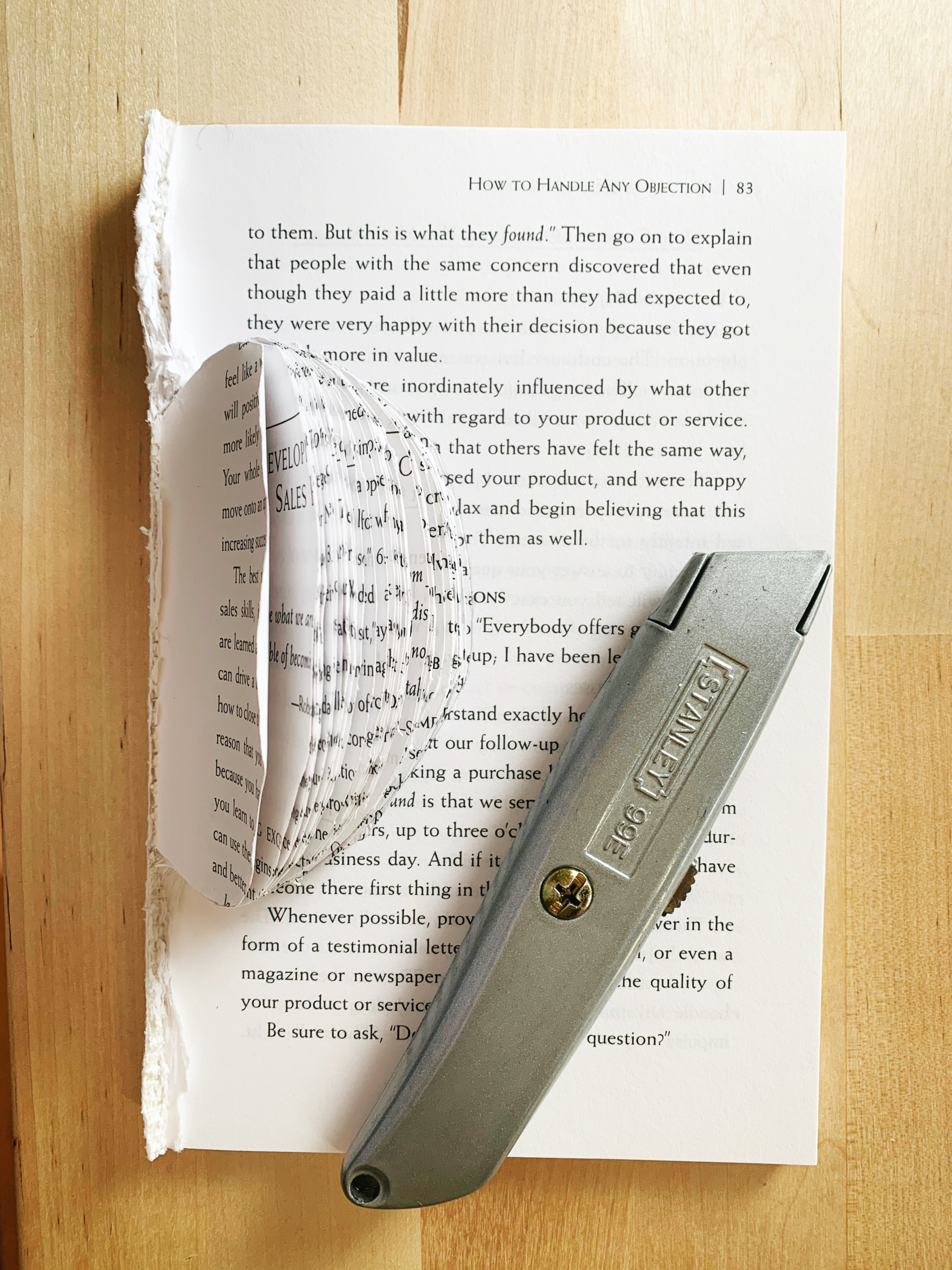


Step Four:
Once you’ve cut all the pages, use scissors to cut away the excess of the spine.
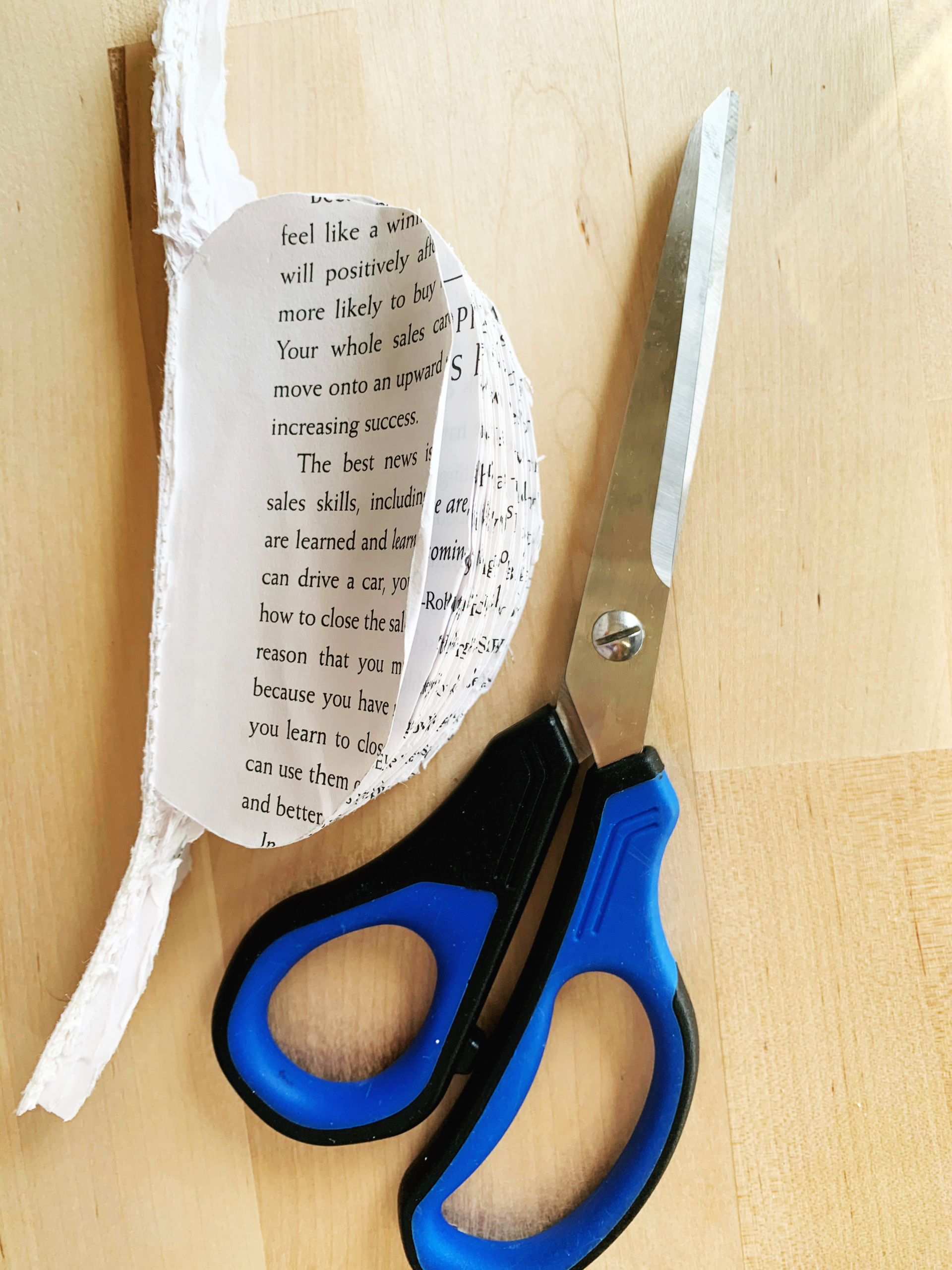
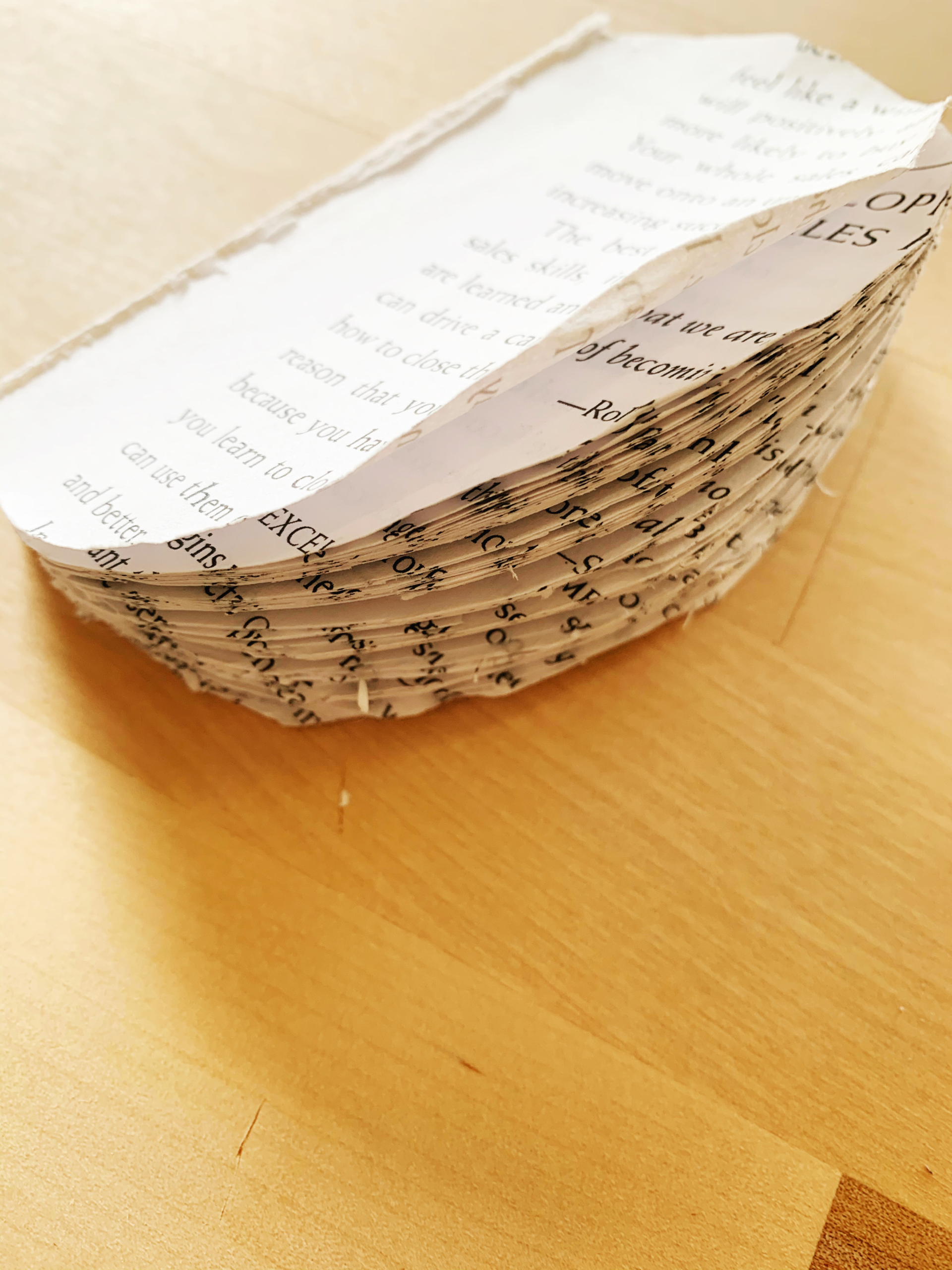
Step Five:
Next up is painting the very edges of the book pages red. I used acrylic paint, because it dries quickly and is easy to apply. Hold the pages together tightly, or lay them under another book or flat weight, to keep the pages together as you paint.
Tip: Paint lightly with the minimum of paint necessary, to keep the pages from being difficult to separate and fan out later. If working with kids, warn them that a little goes a long way here!
Note: An alternative idea could be to use a red marker instead to color the edge. This could be a bit easier to manage and lets you skip the next step, which is on the messier side!
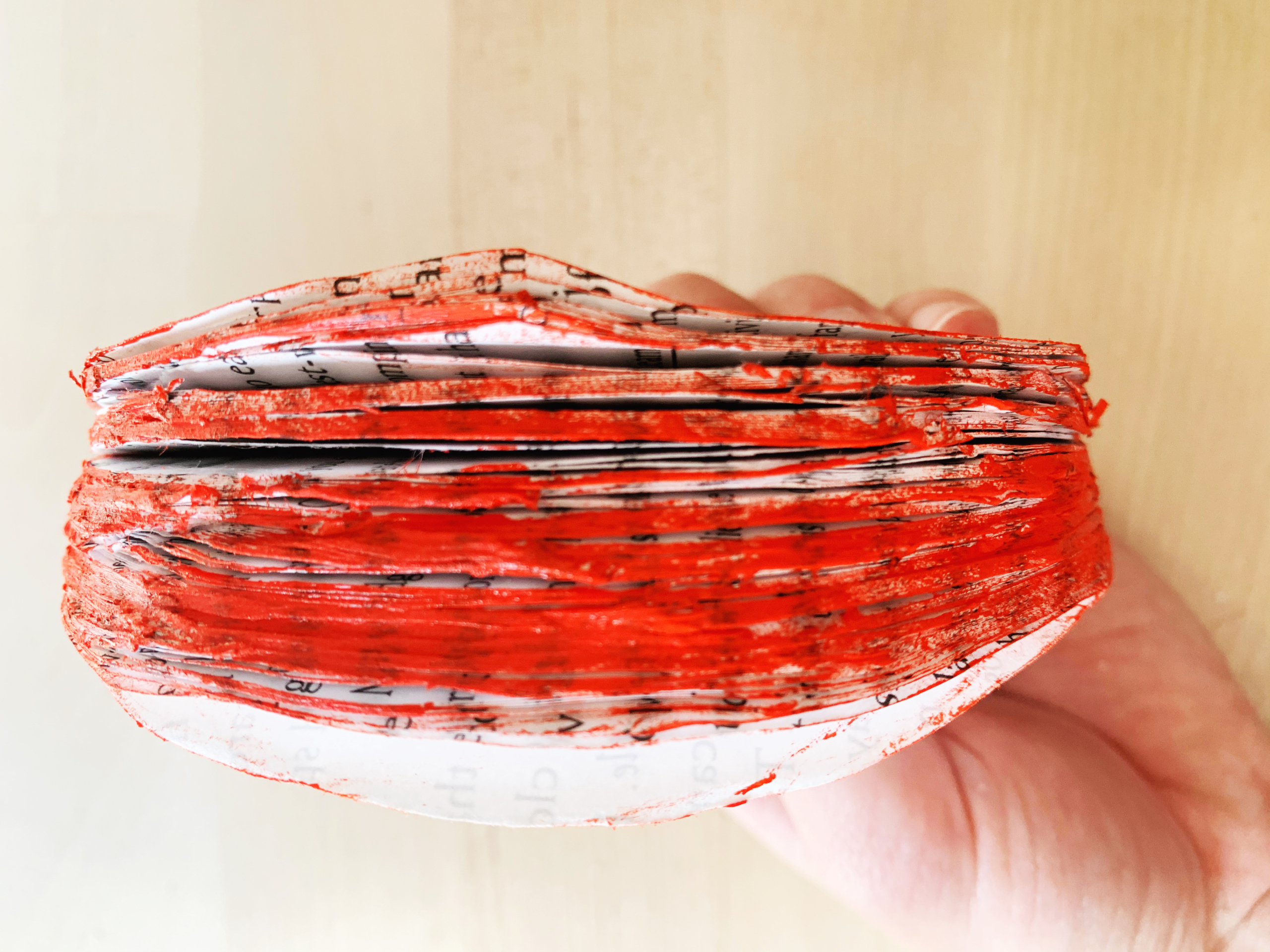
Step Six:
When the paint is almost dry, start fanning out the pages so they won’t stick together. Then wait a little longer till the paint is dry to the touch. Once it’s dry, bend the spine of the book to make it pliable. I just kept bending different sections of pages back and forth till the pages started fanning out on their own.

Step Seven:
Now, using the glue gun, add some hot glue to the top of the spine and place your twig there, so the top is sticking up about an inch above the top of the pages. Wait a minute till the glue is dry and the twig is securely in place.

Step Eight:
Bend the spine again (being careful of the stick!) and add more hot glue to the rest of the spine as well as the first and last pages. Once your glue is in place, carefully bring those pages together and press along the spine to make your round apple (watching out for any glue that may soak through the page). Wait just a little for the glue to harden, then fan the pages out until your apple is nice and full.
Step Nine:
Cut out a little leaf from your green paper for the finishing touch, then attach it to the base of your twig with just a dot of glue.

Ta-da! You have your book page apple!
Will you gift or display yours? Let us know if you come up with any creative uses or twists on this project.

Kelsey Nickerson creates abstract paintings with rich color, texture, and movement, and enjoys a good book craft. She oversees web production and photography for MayaSmart.com.


